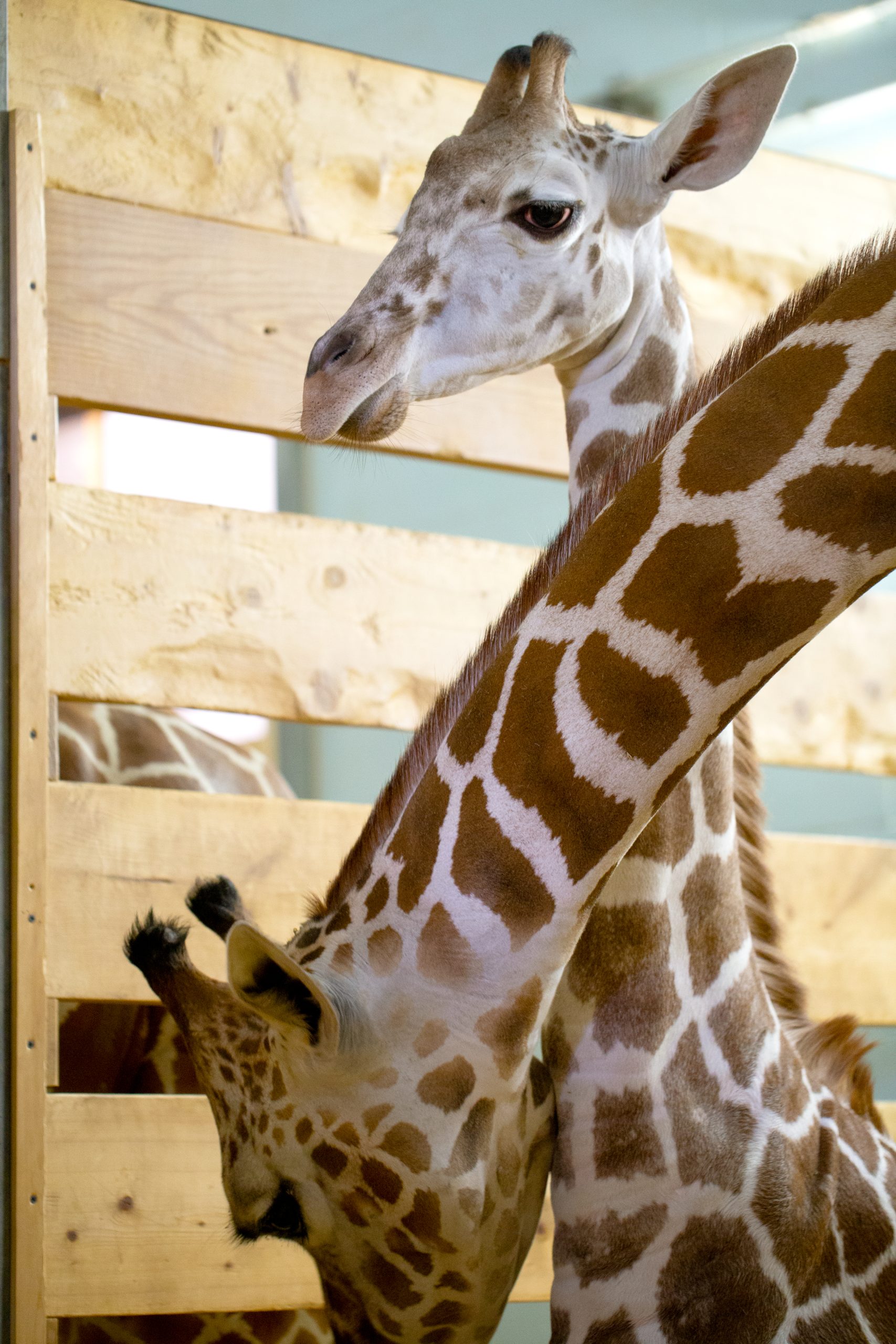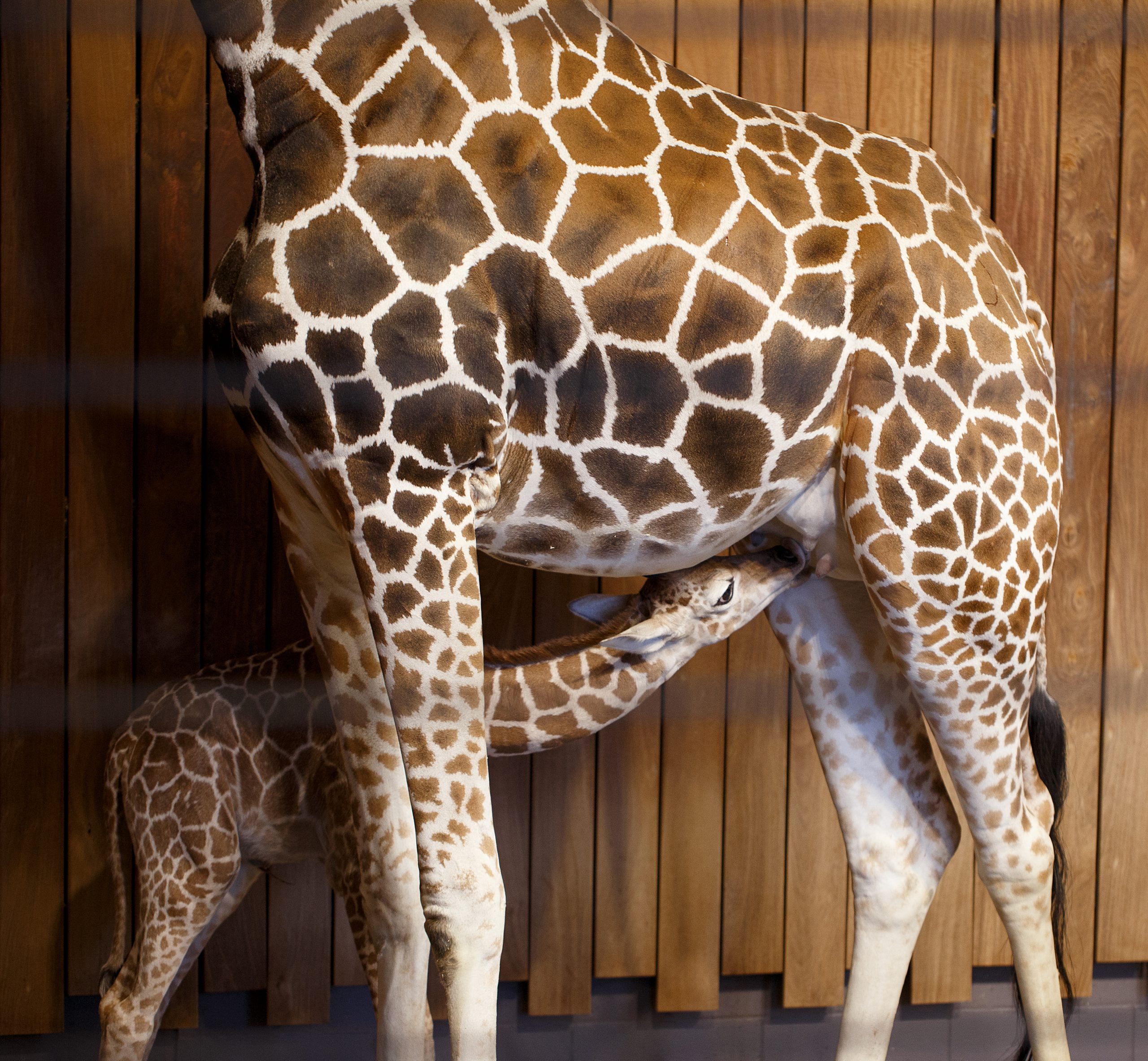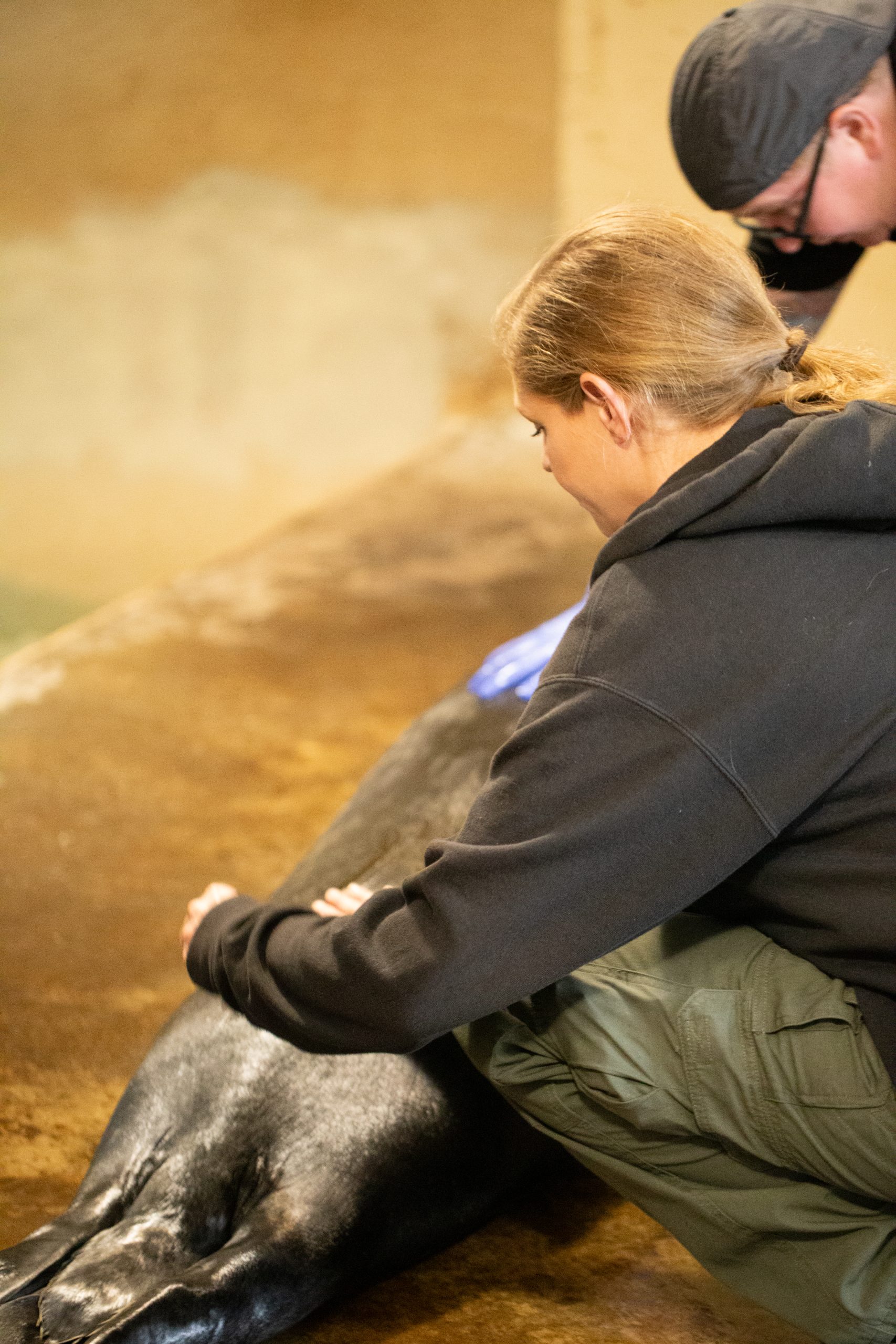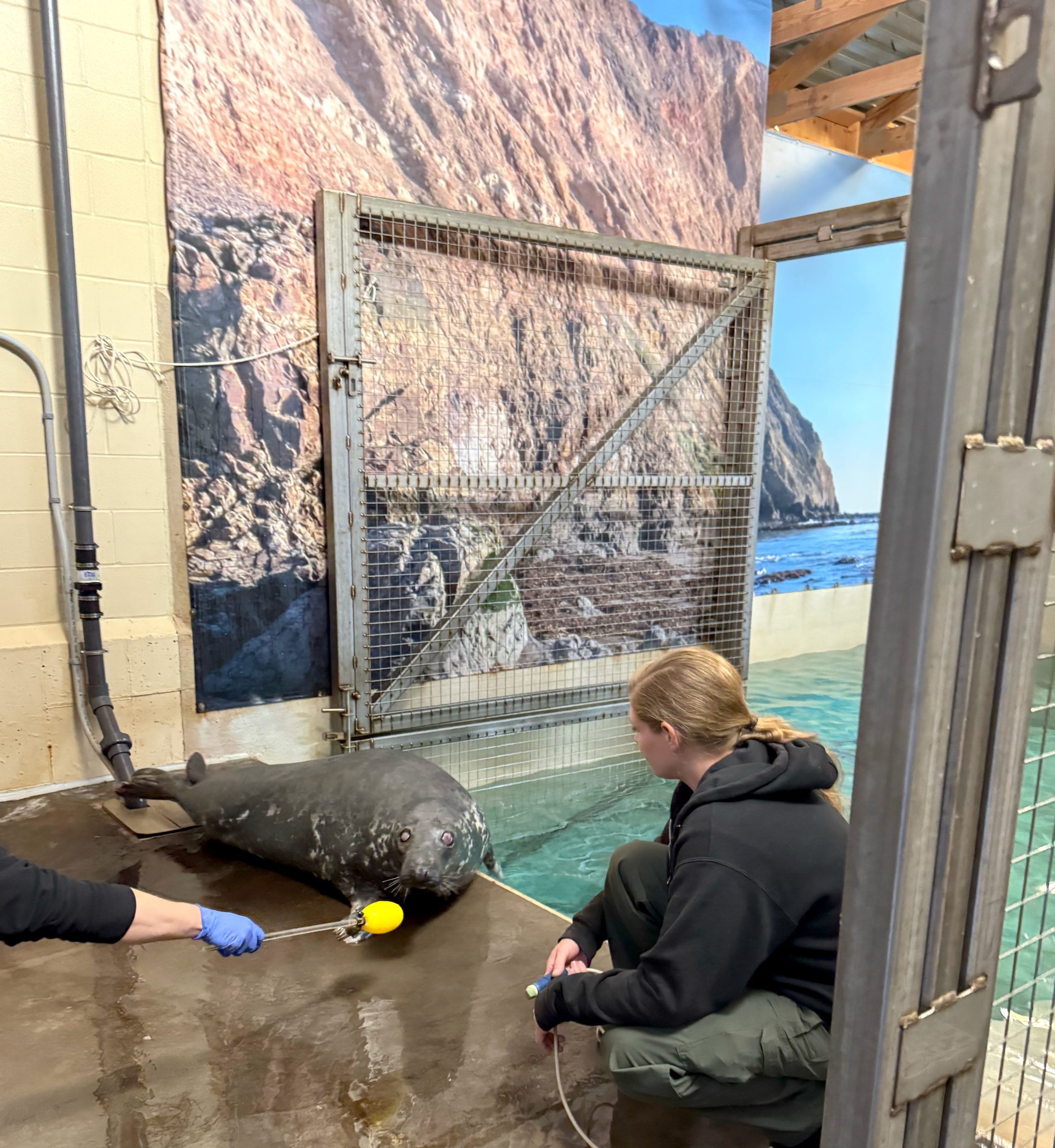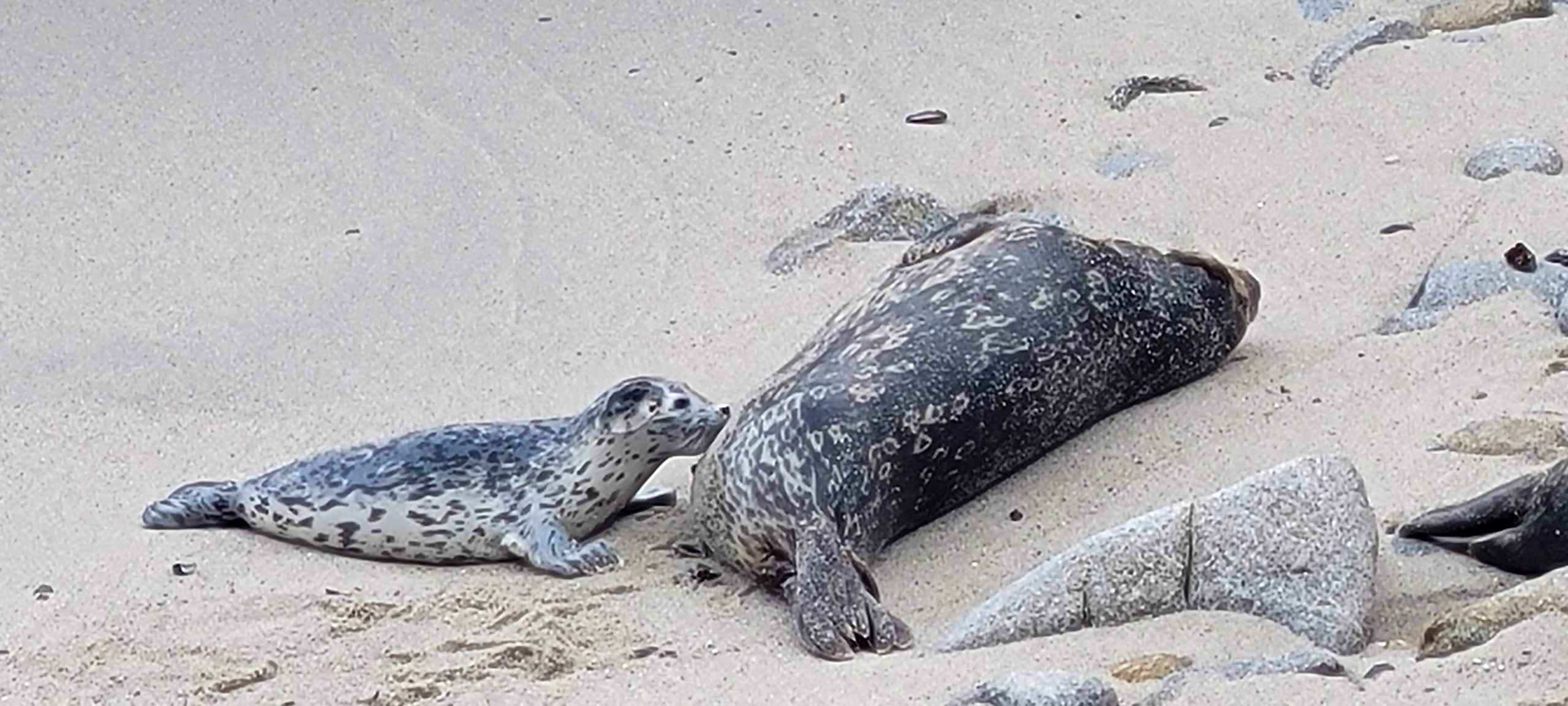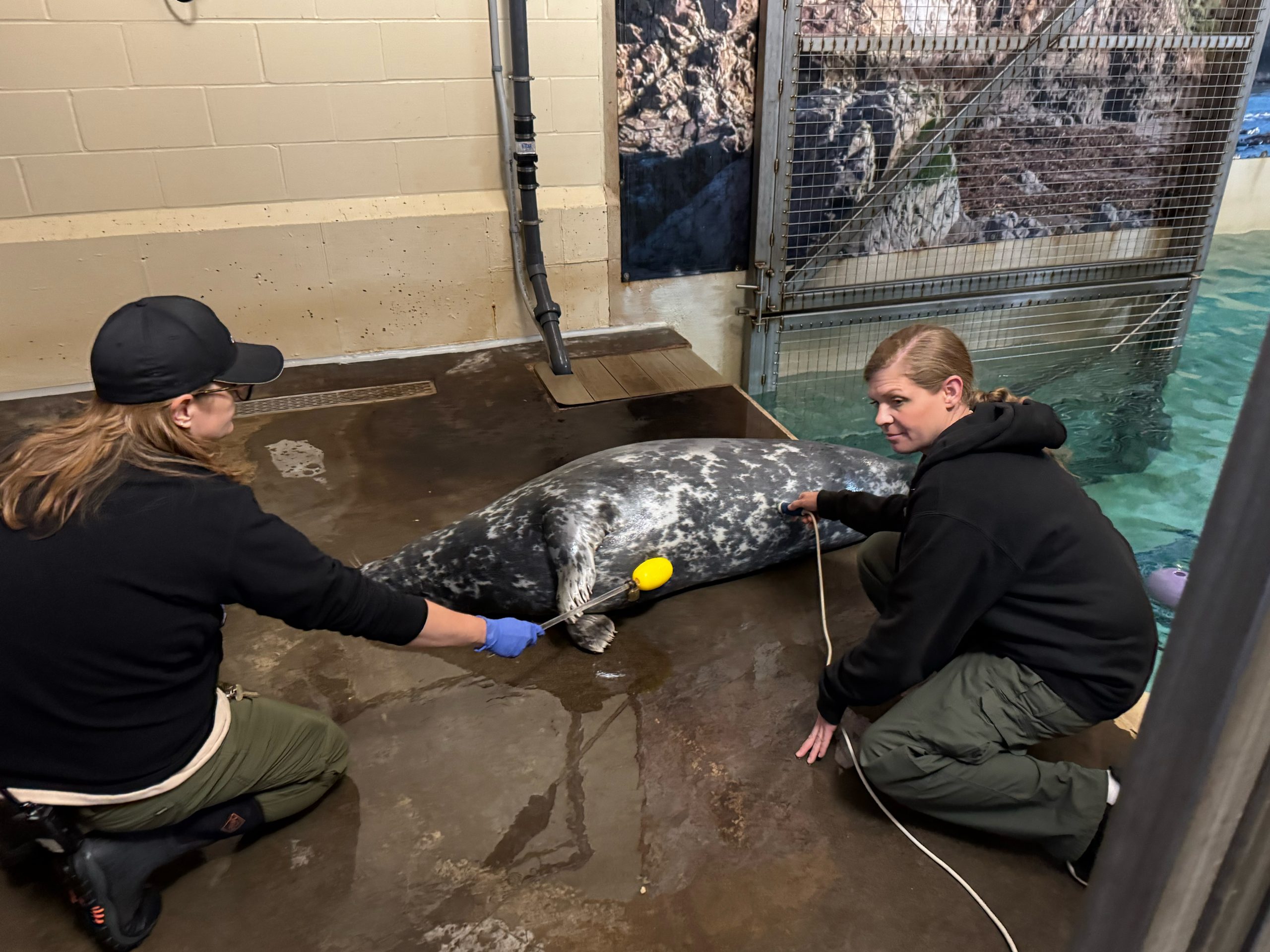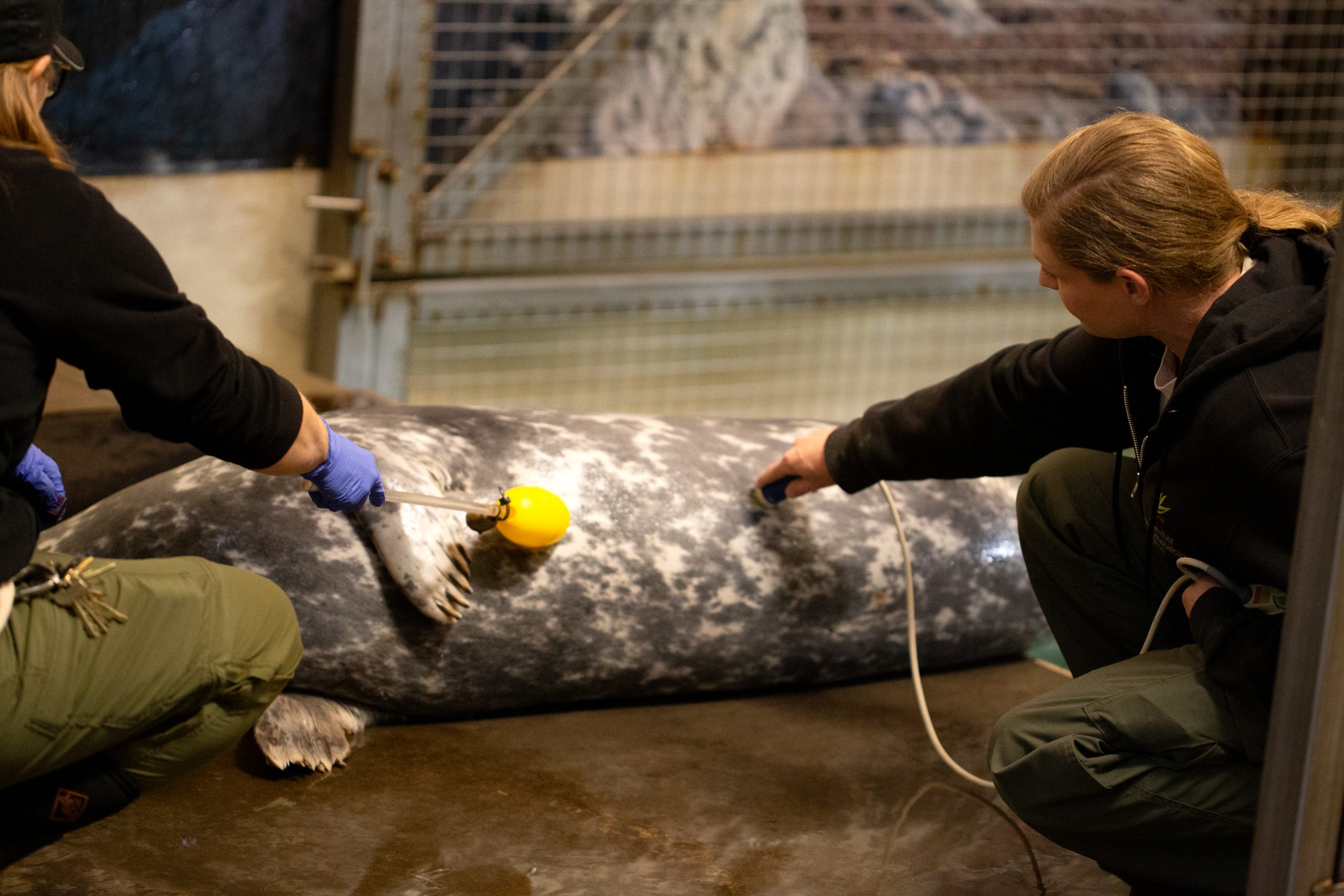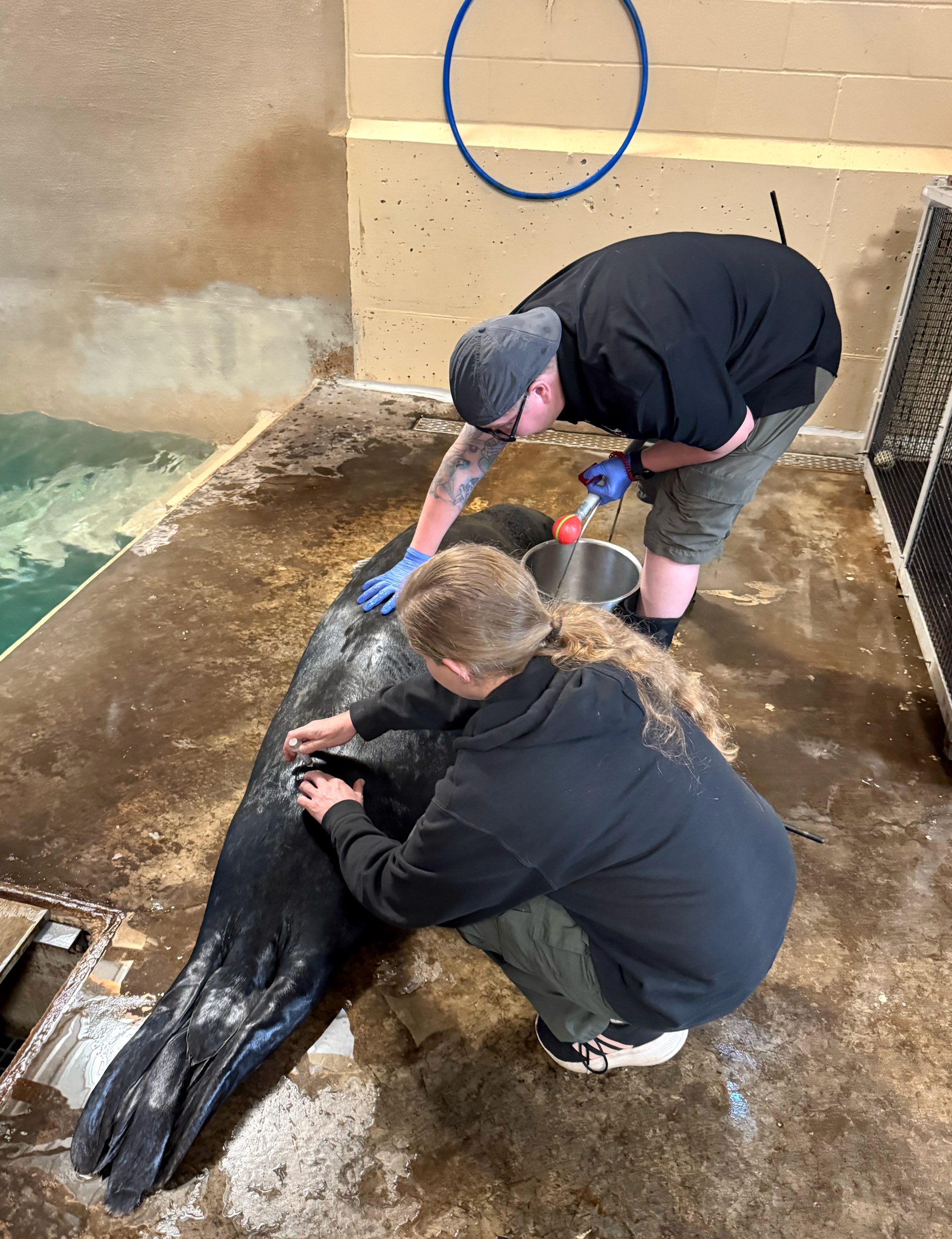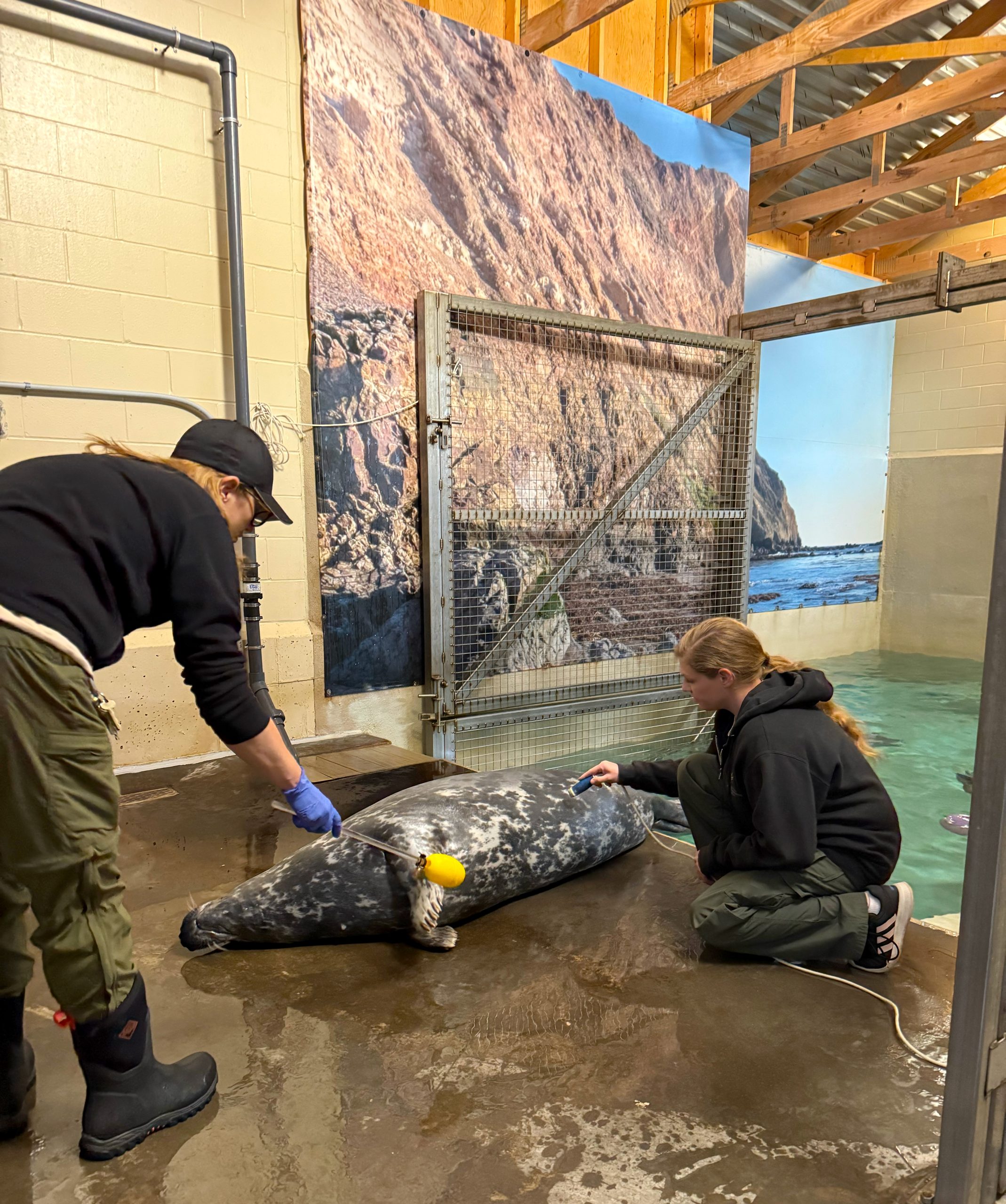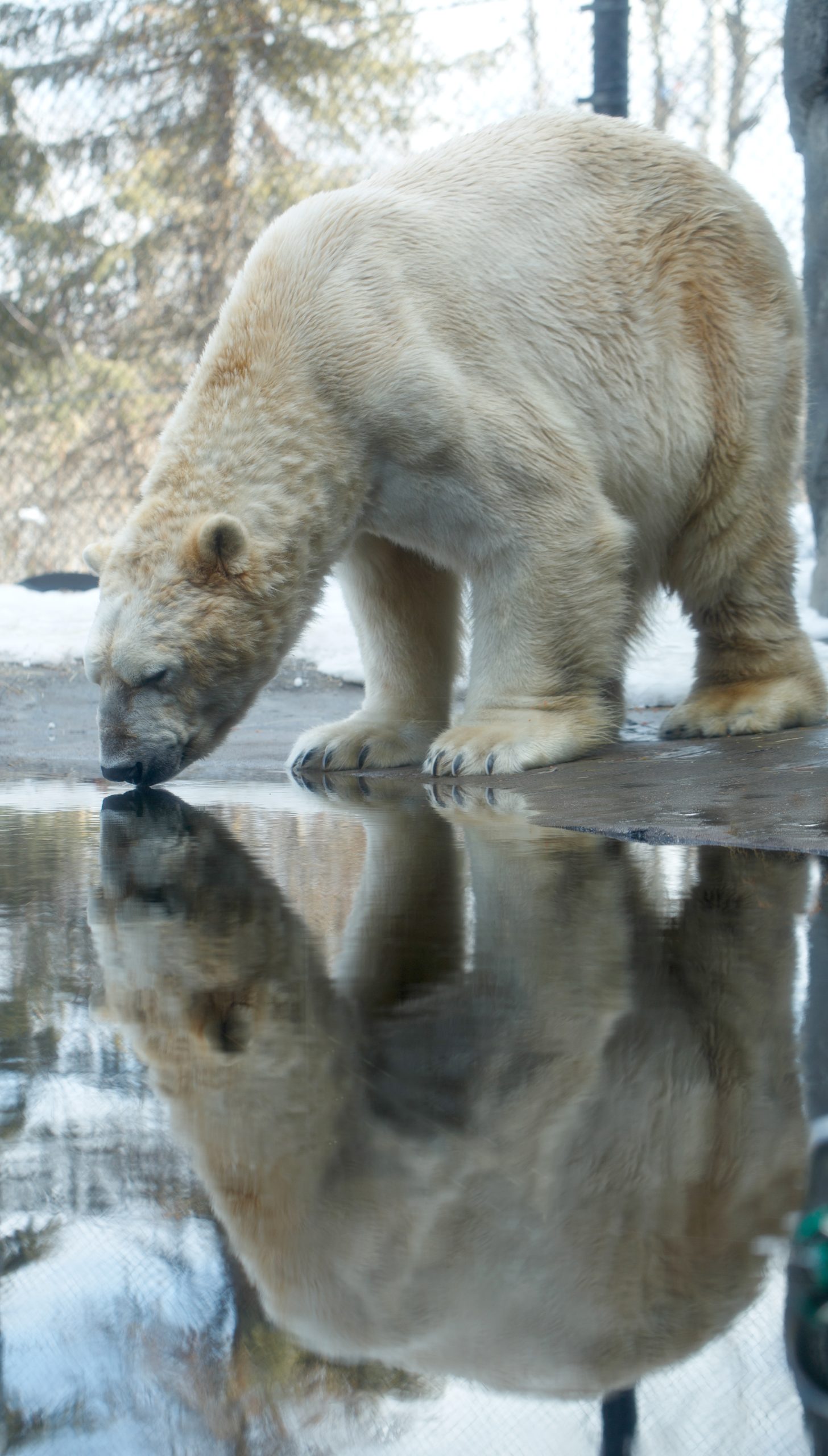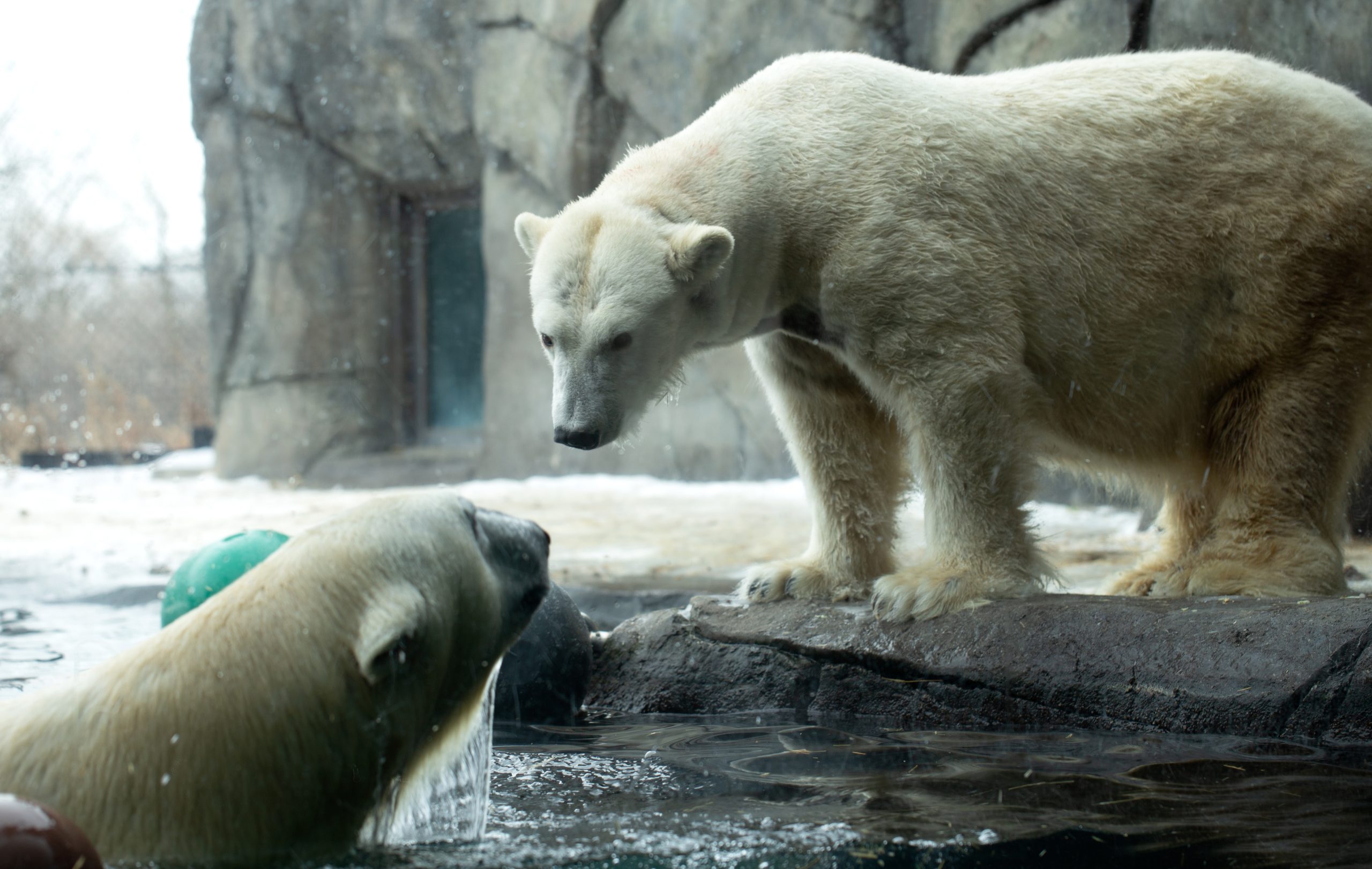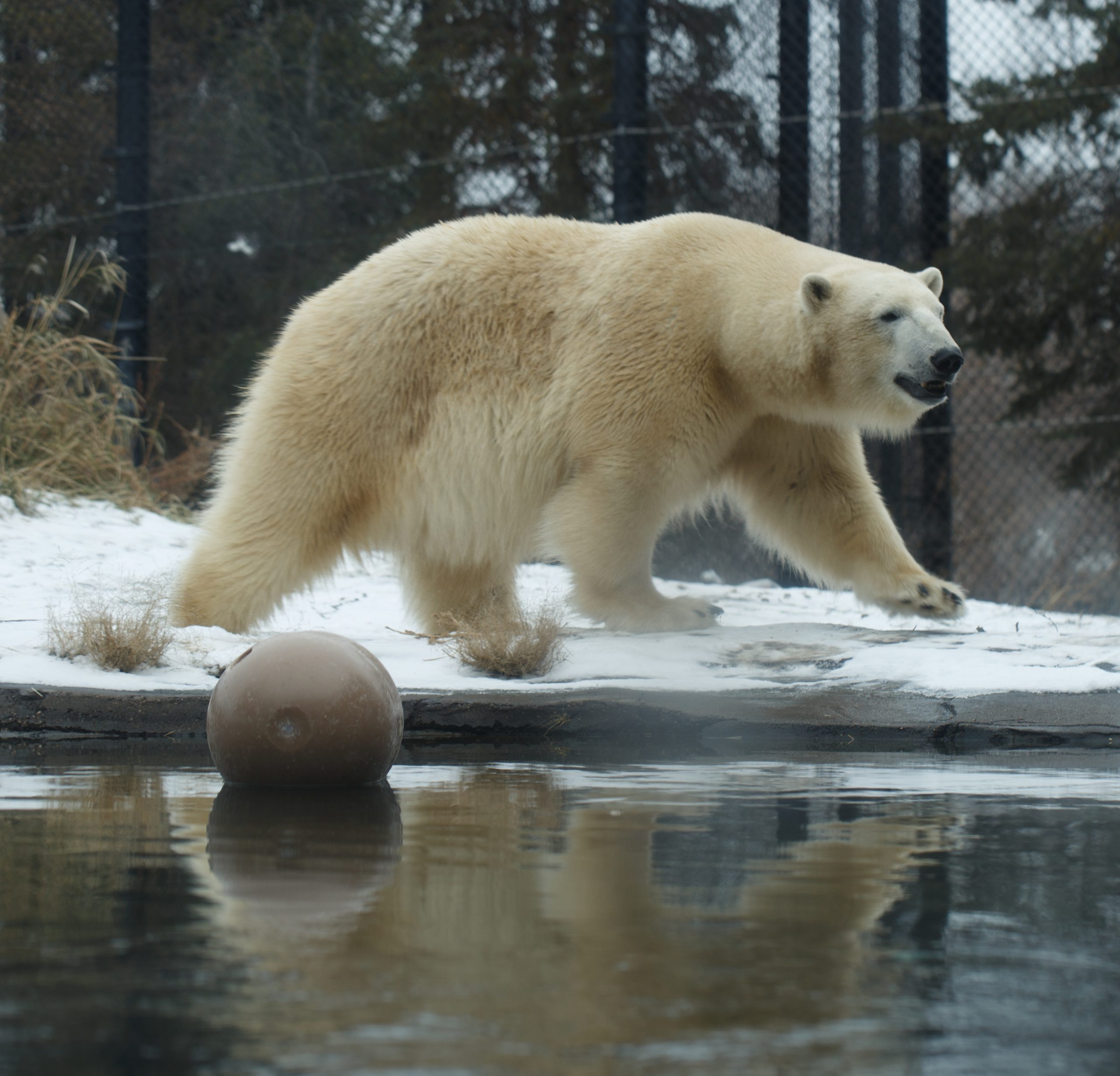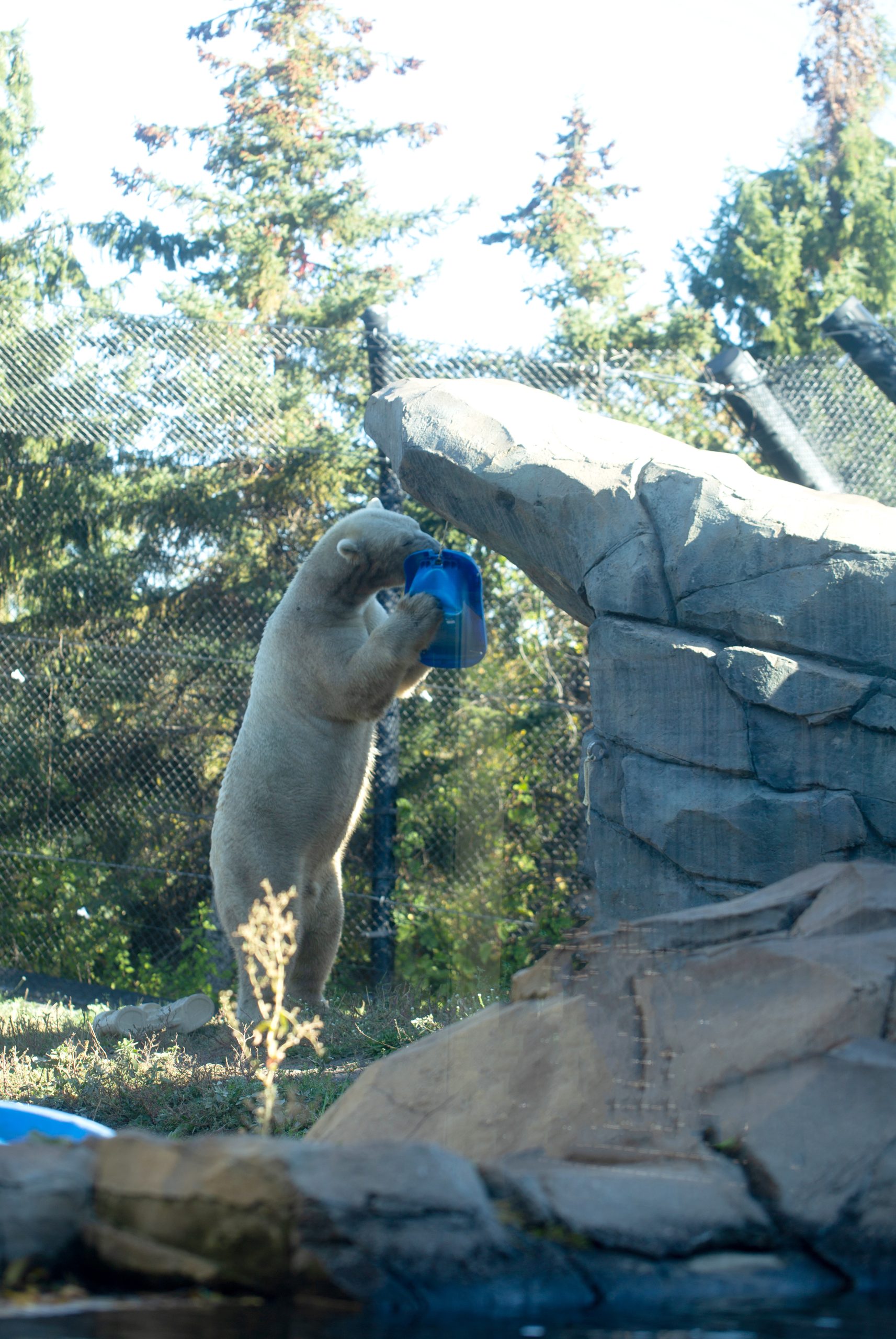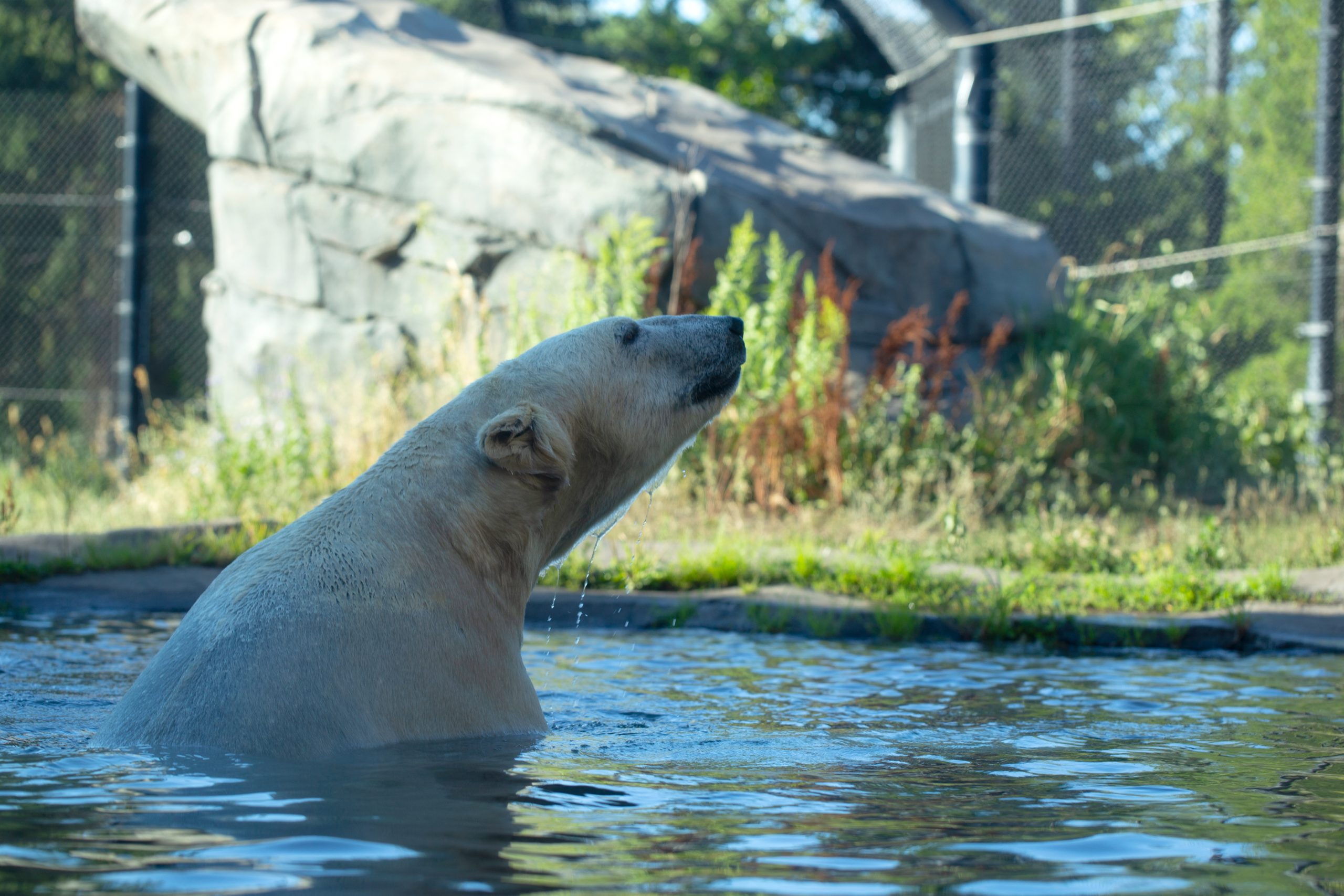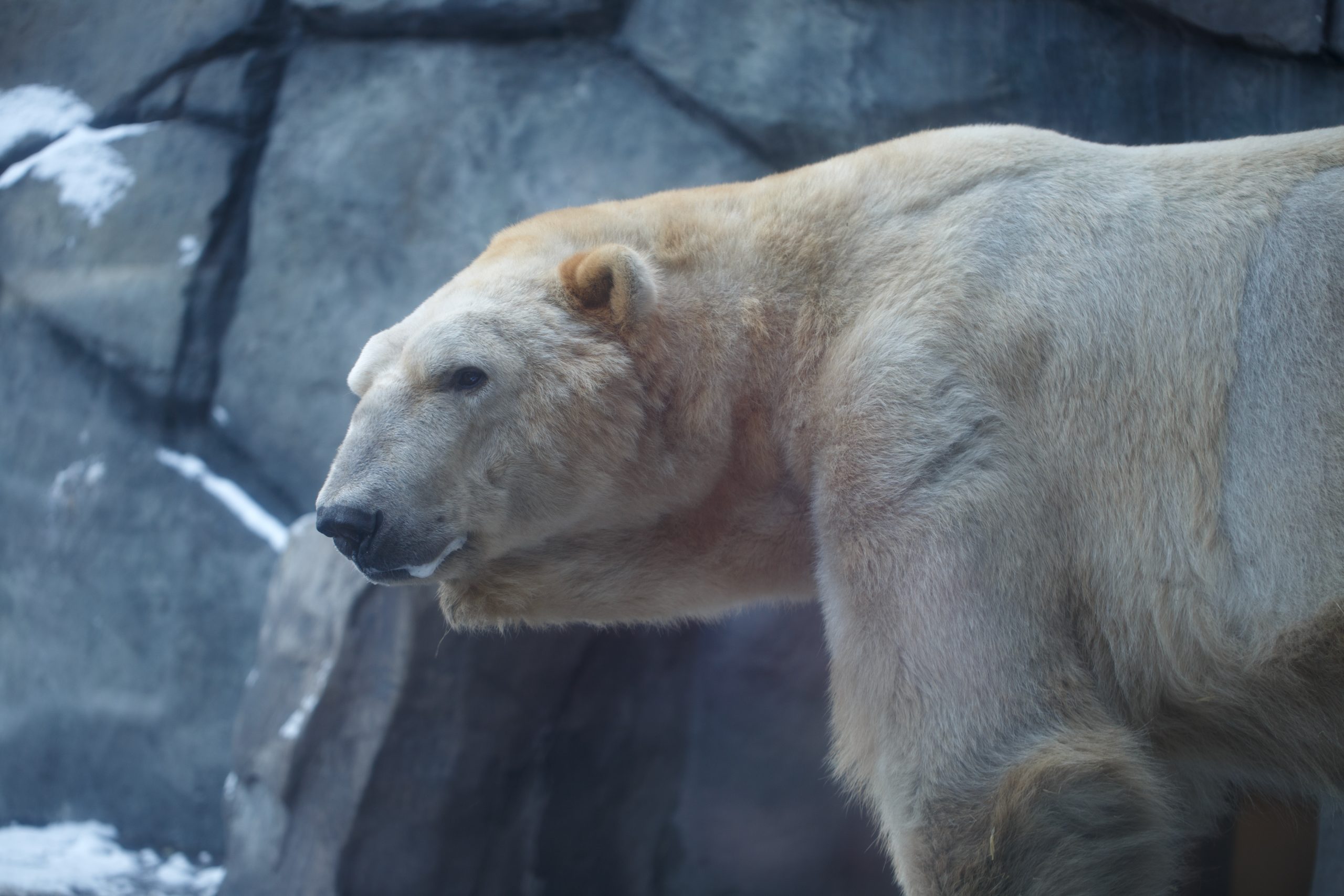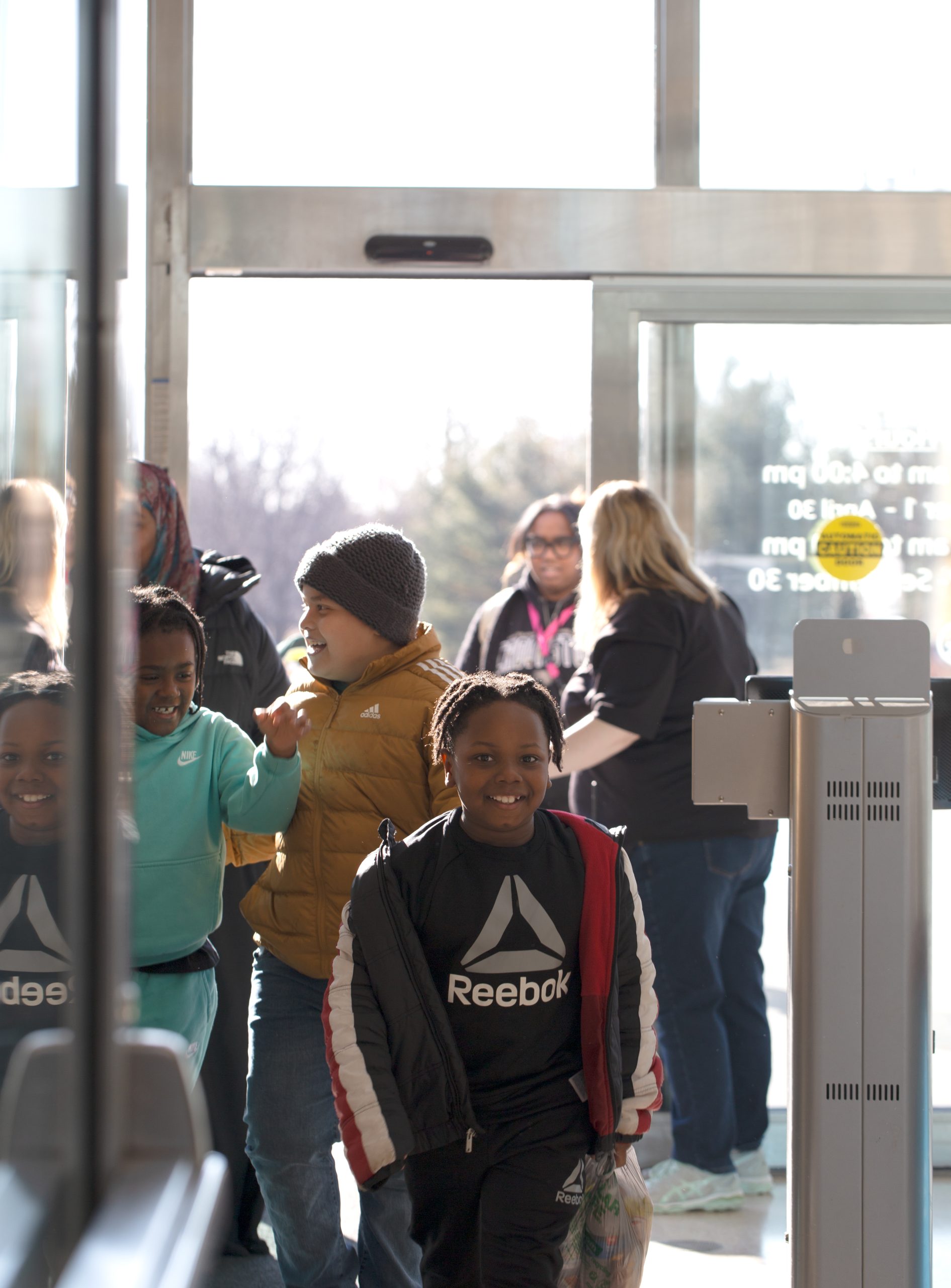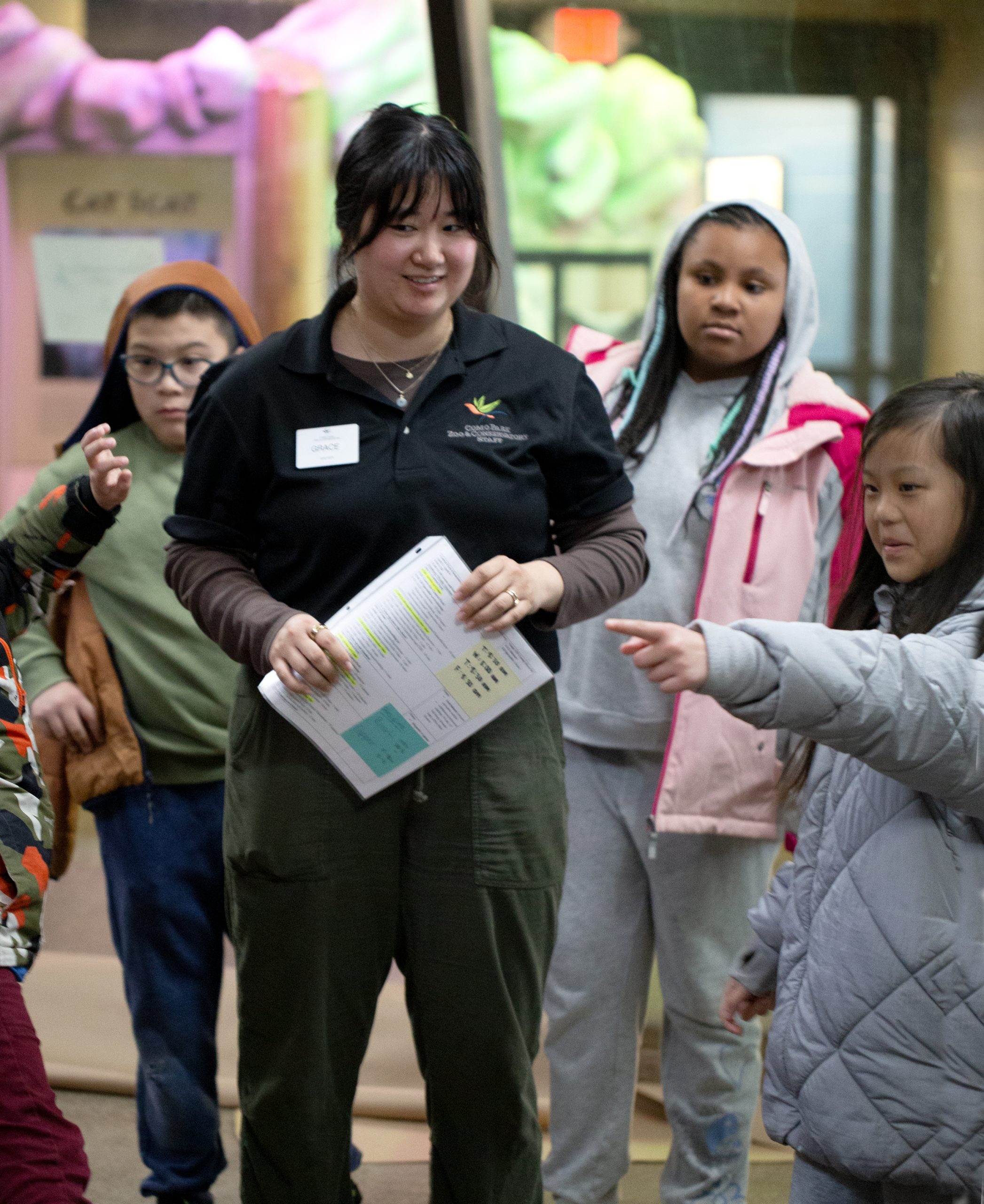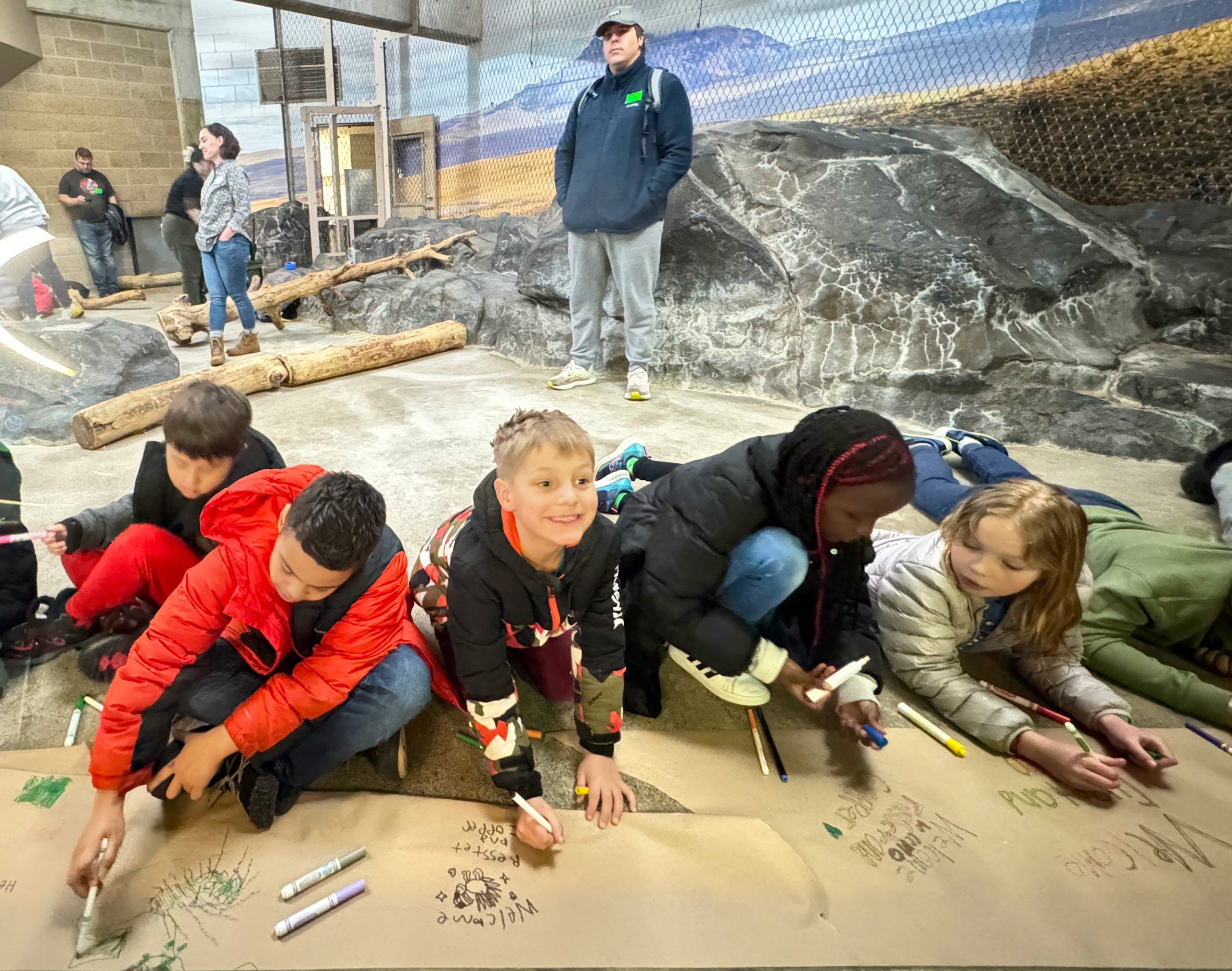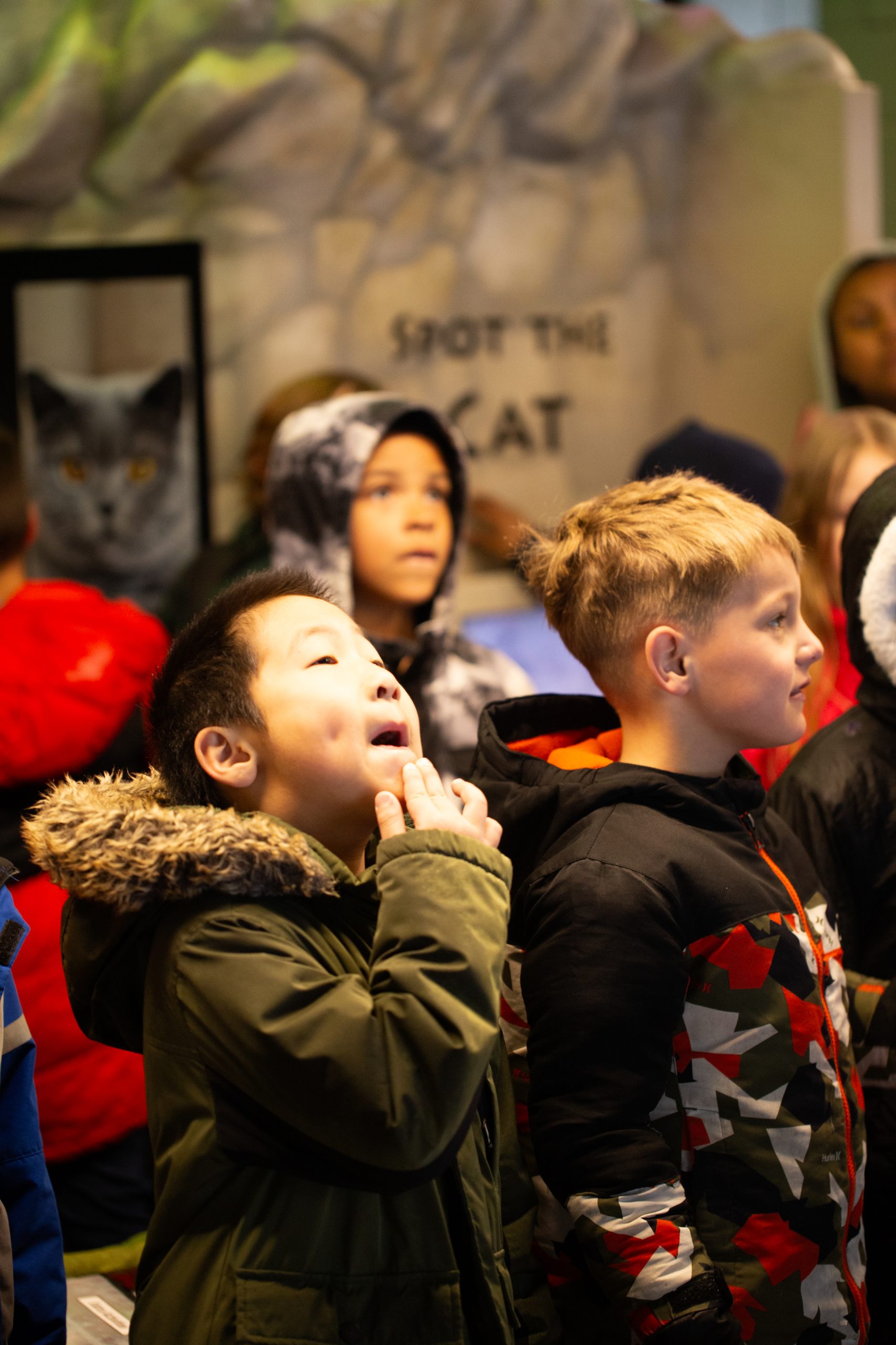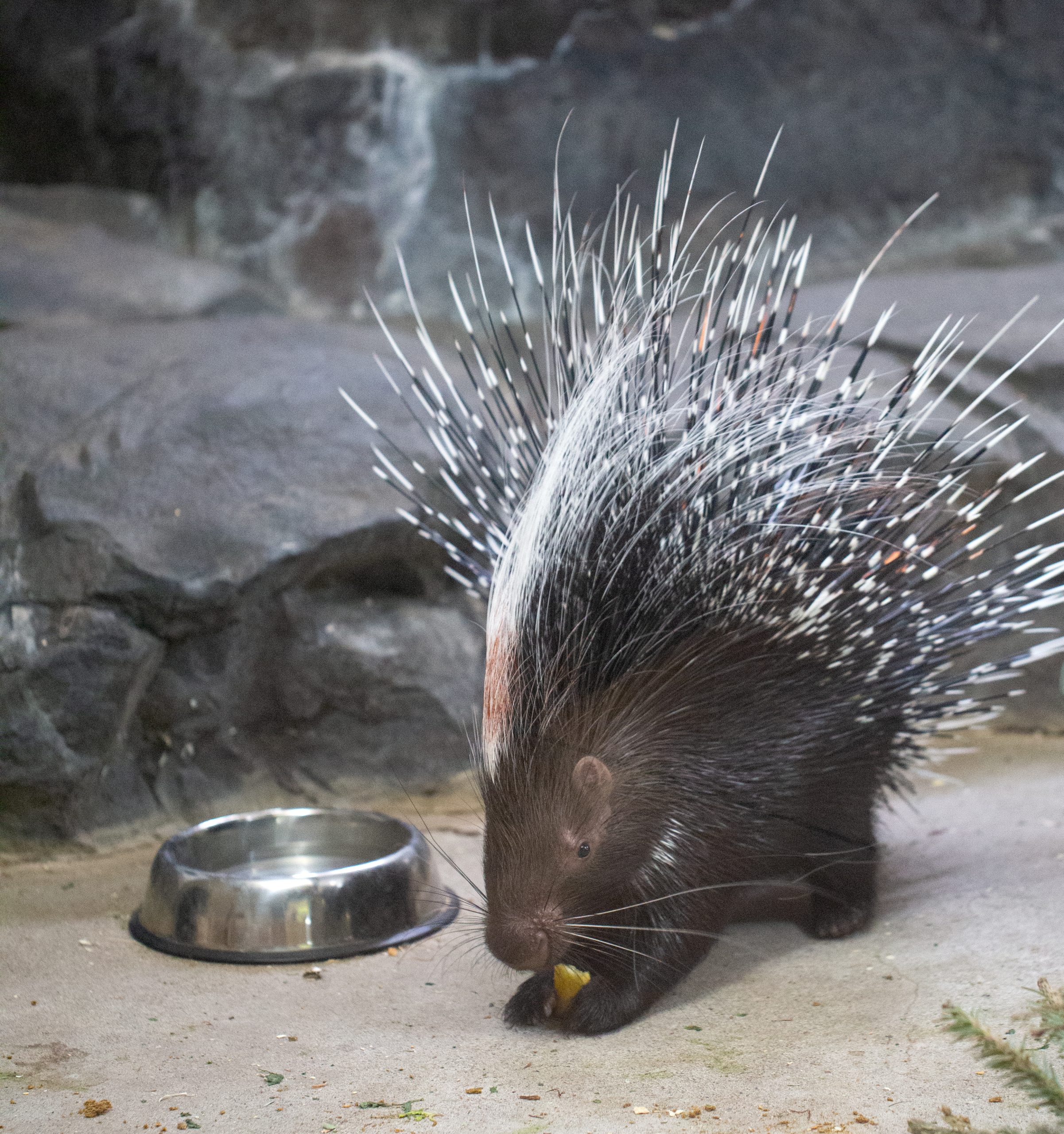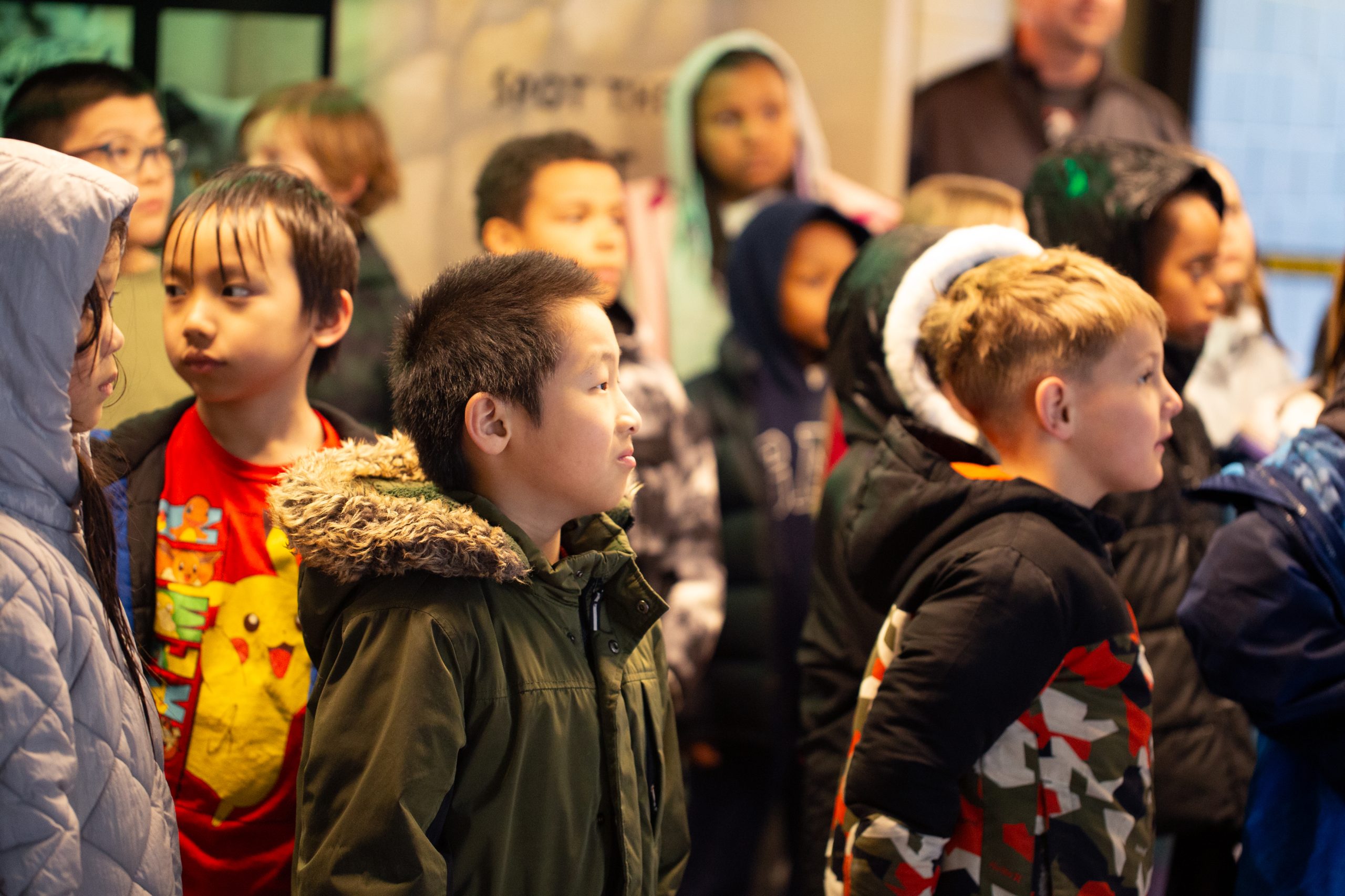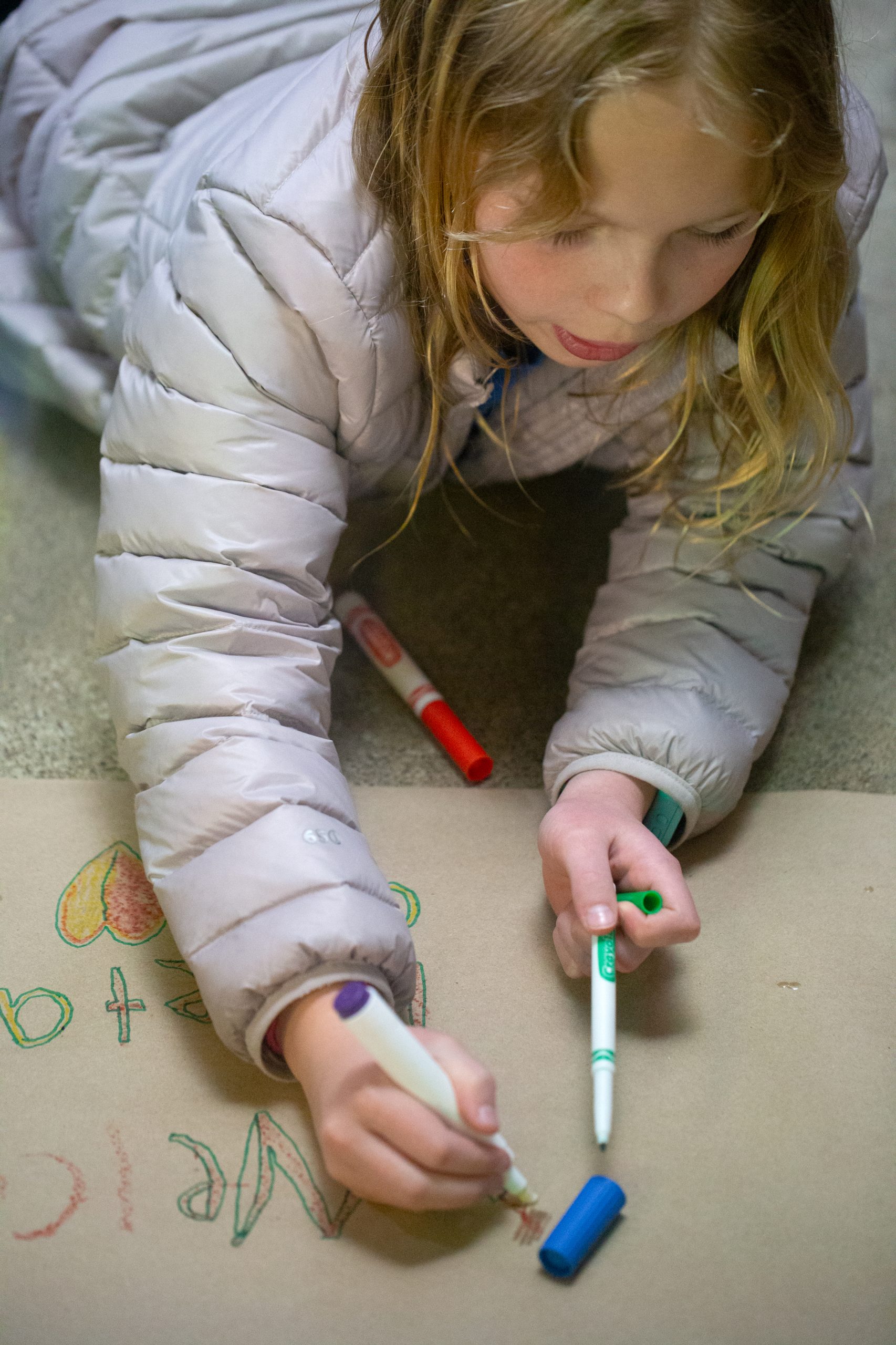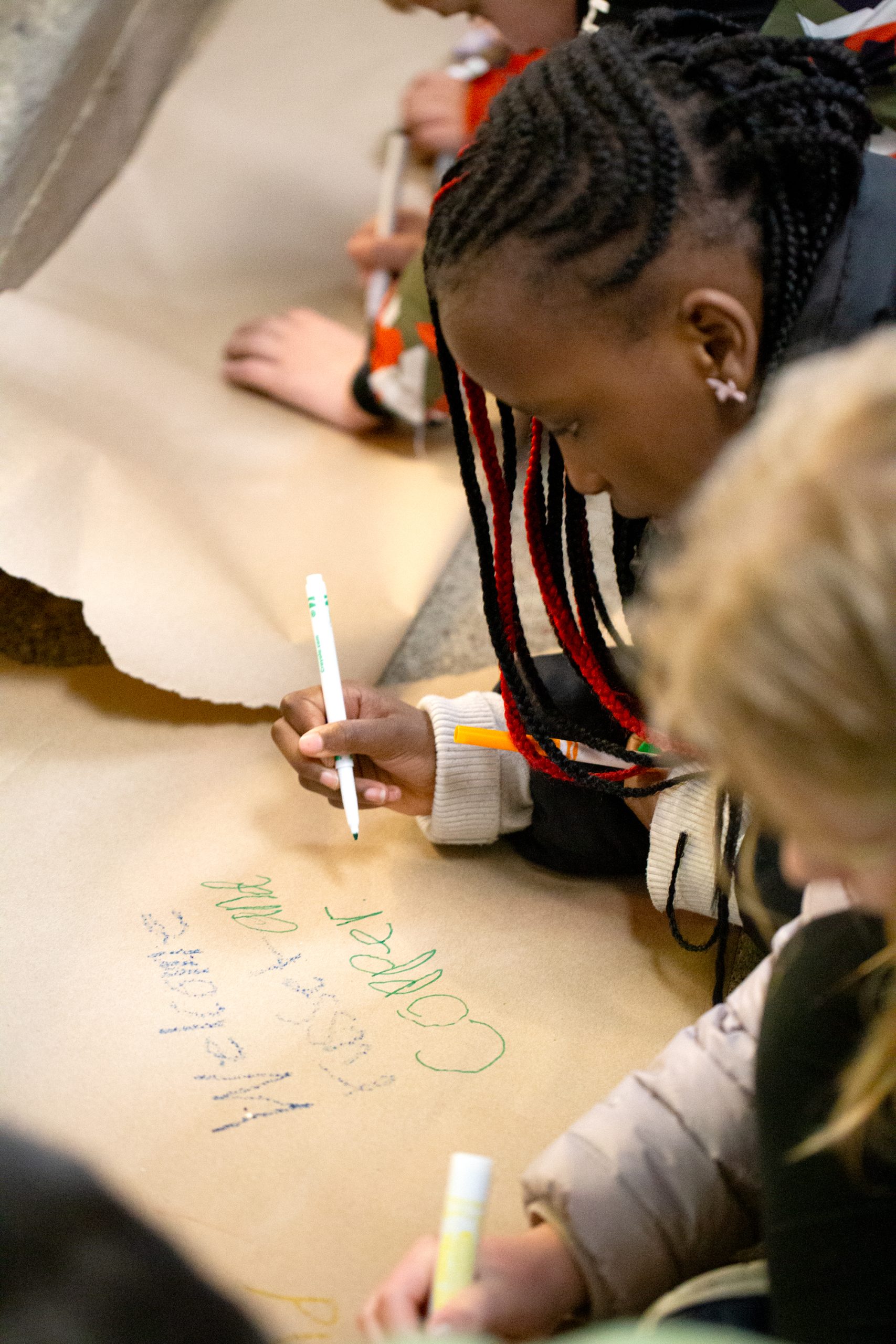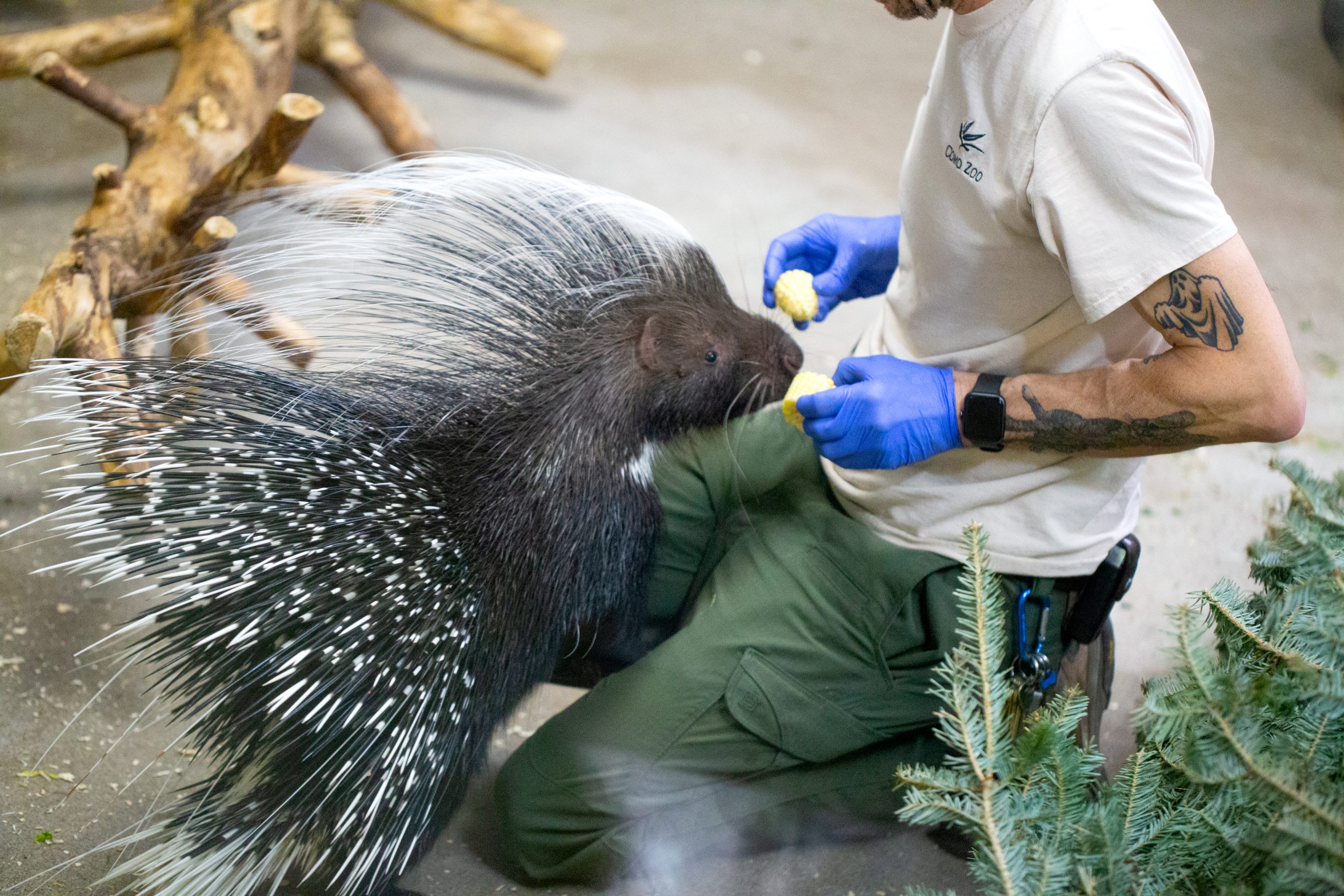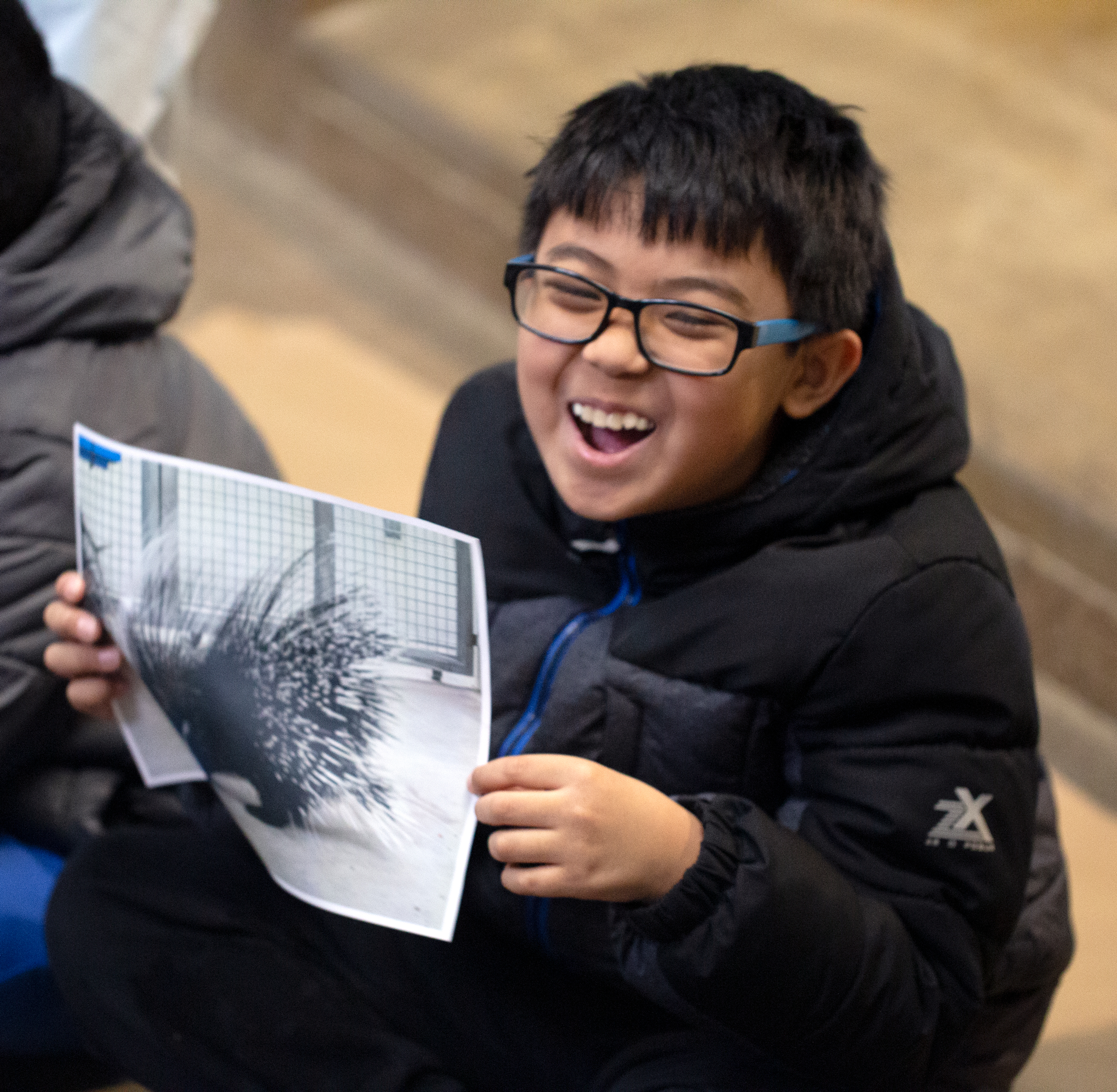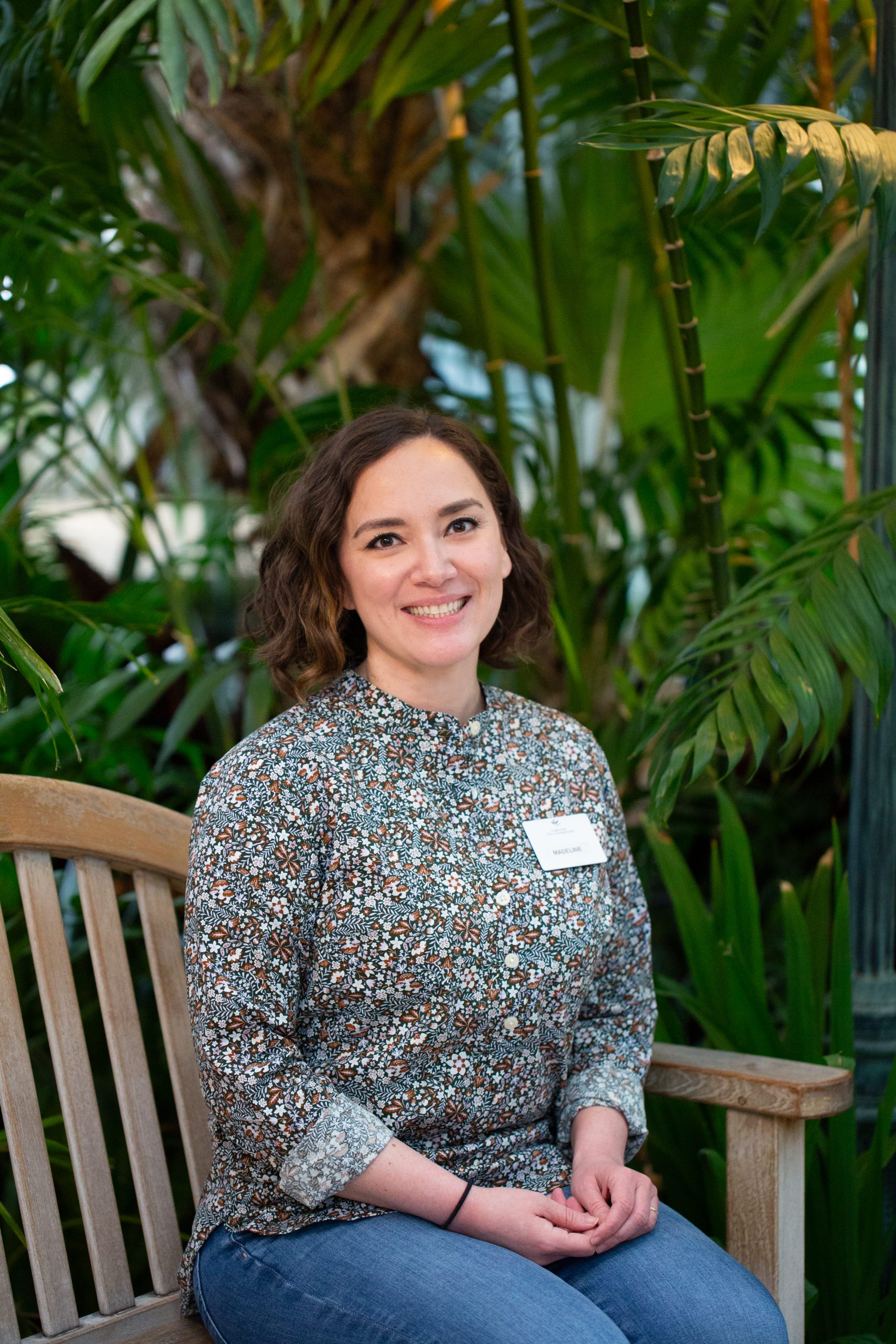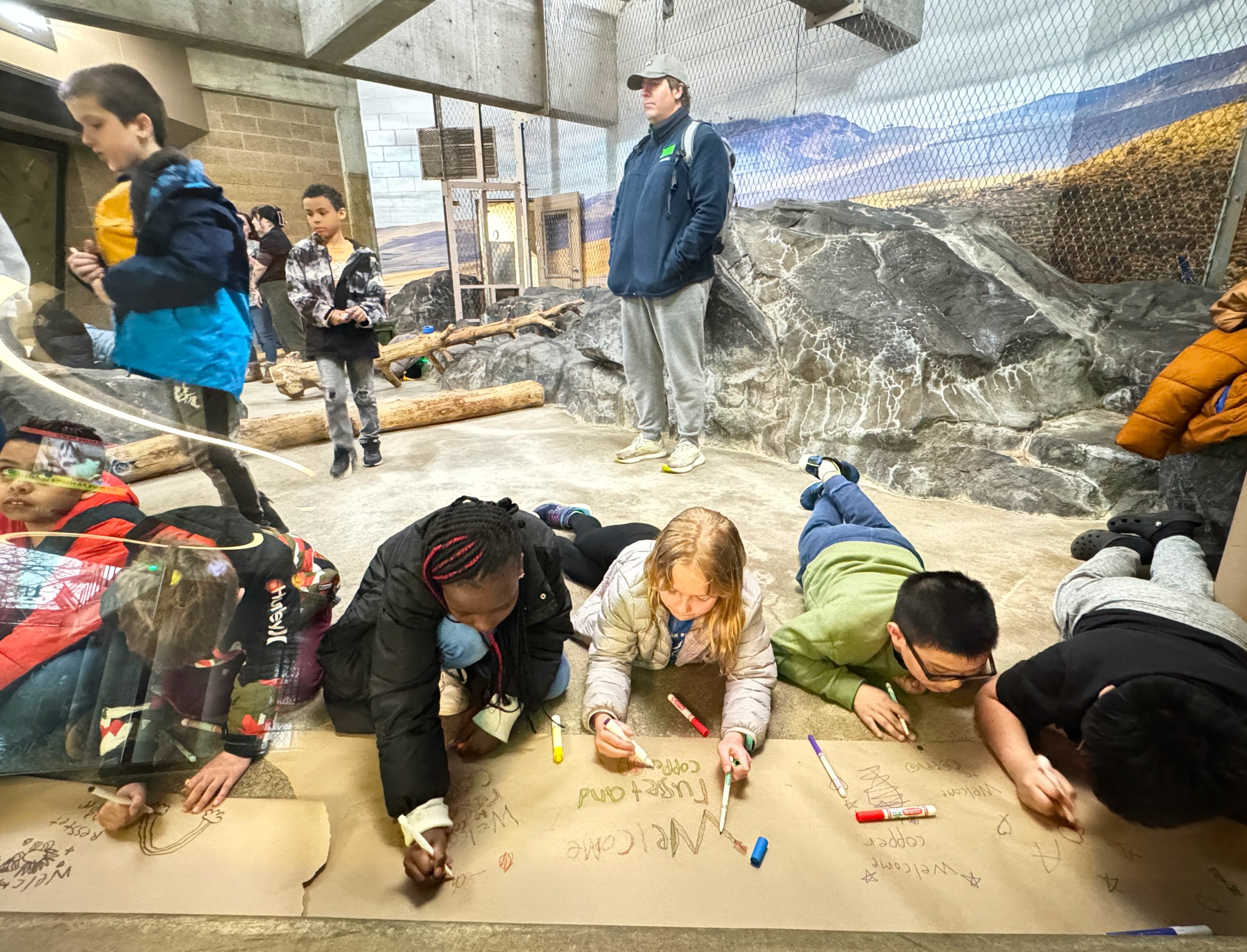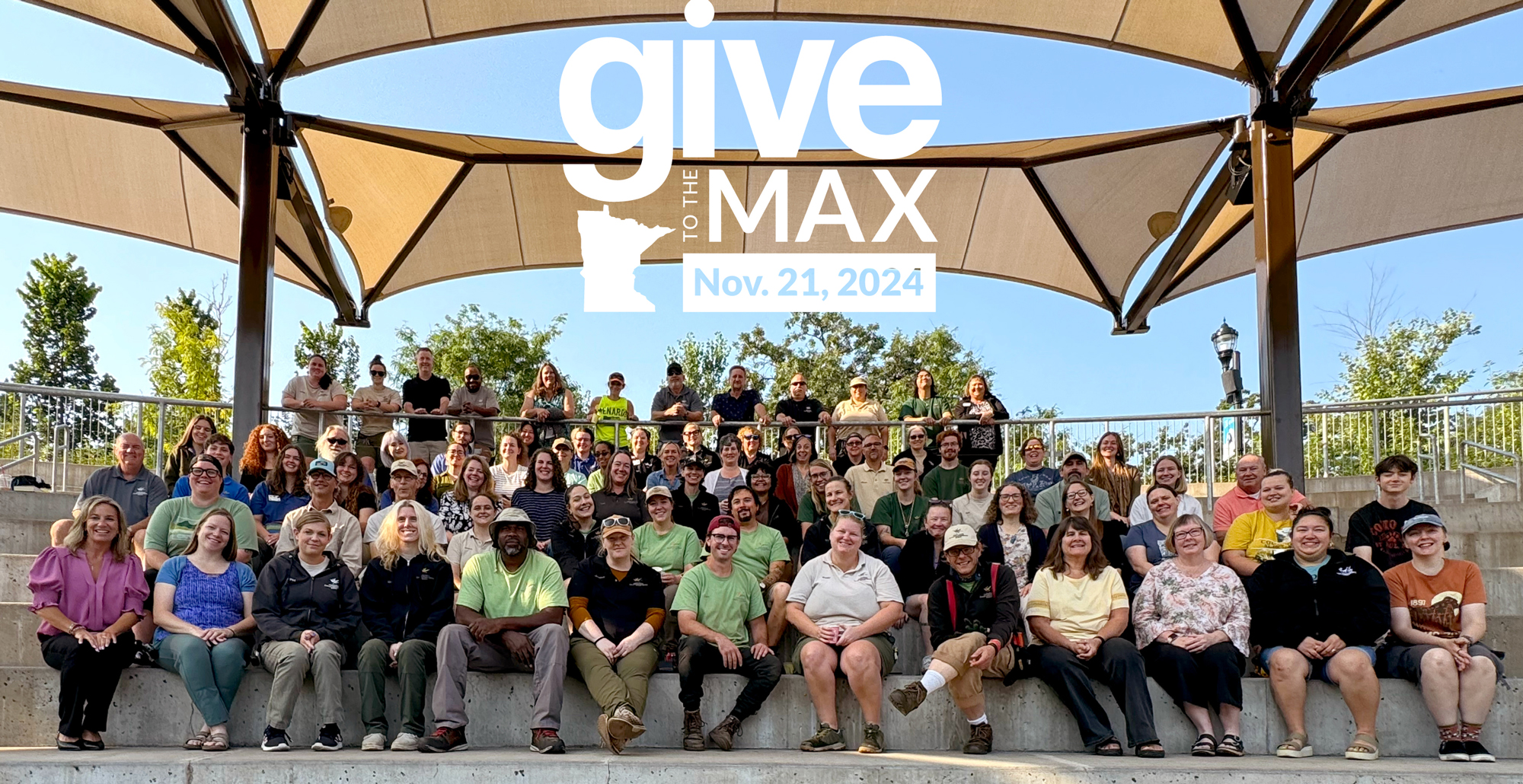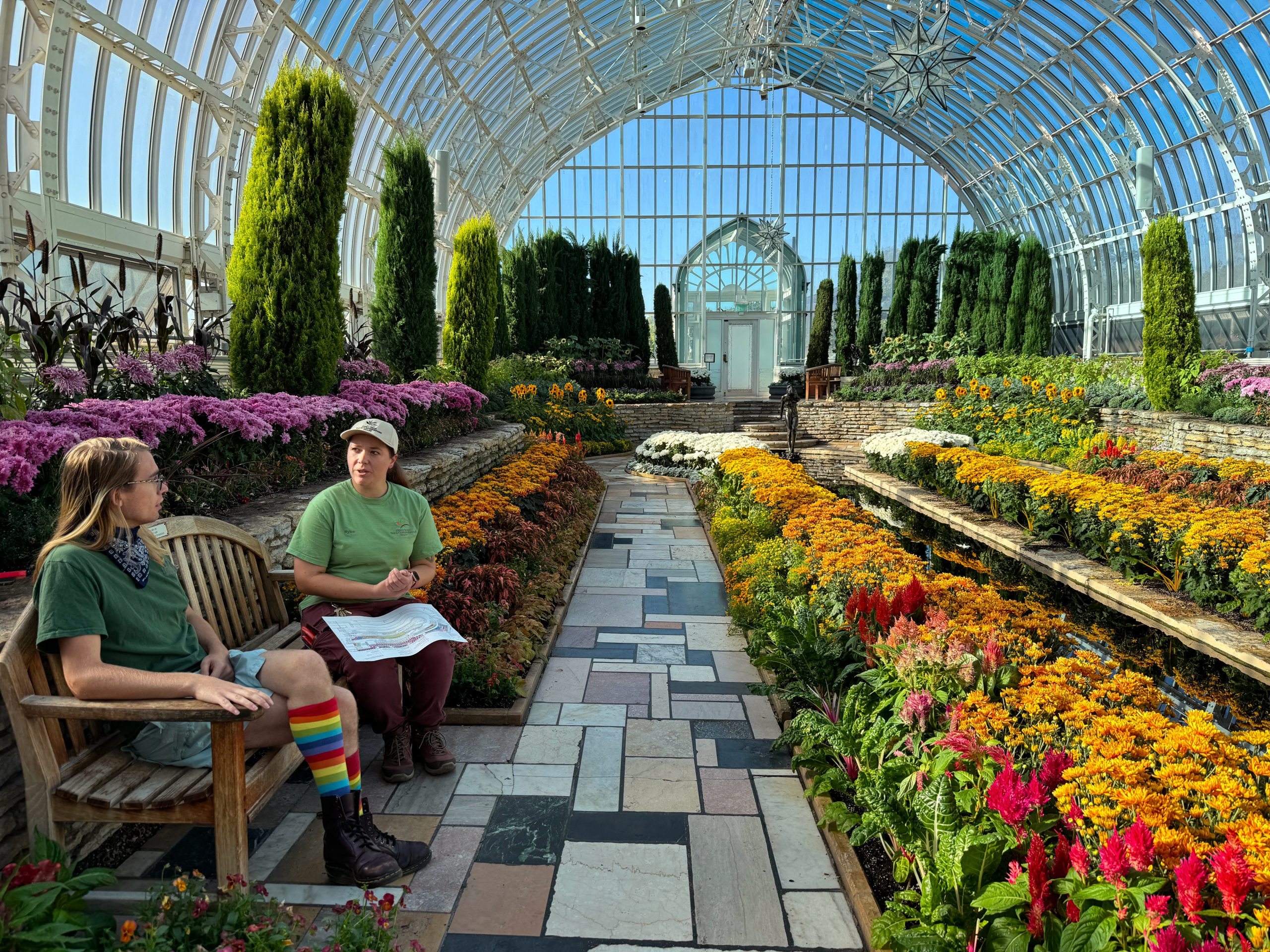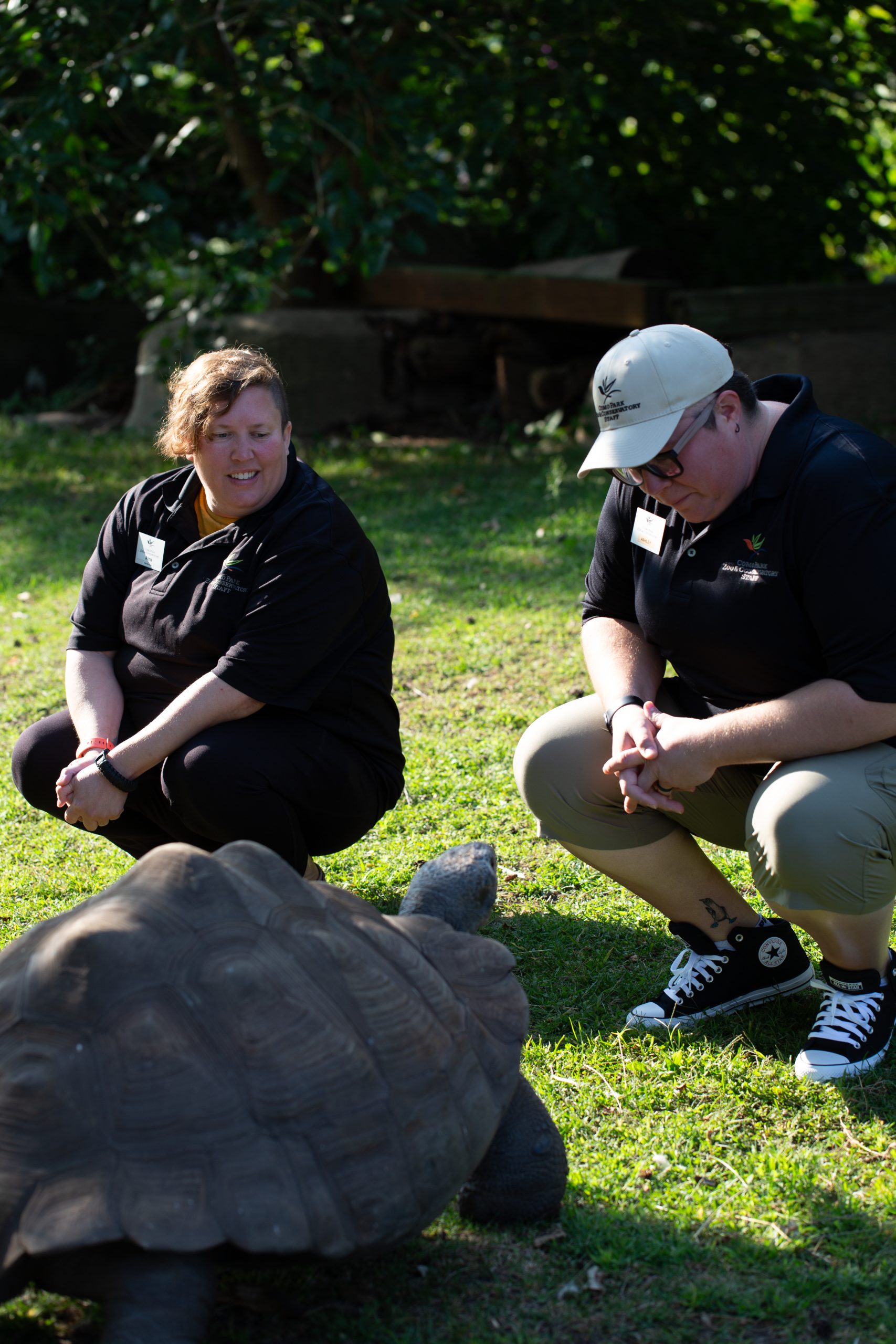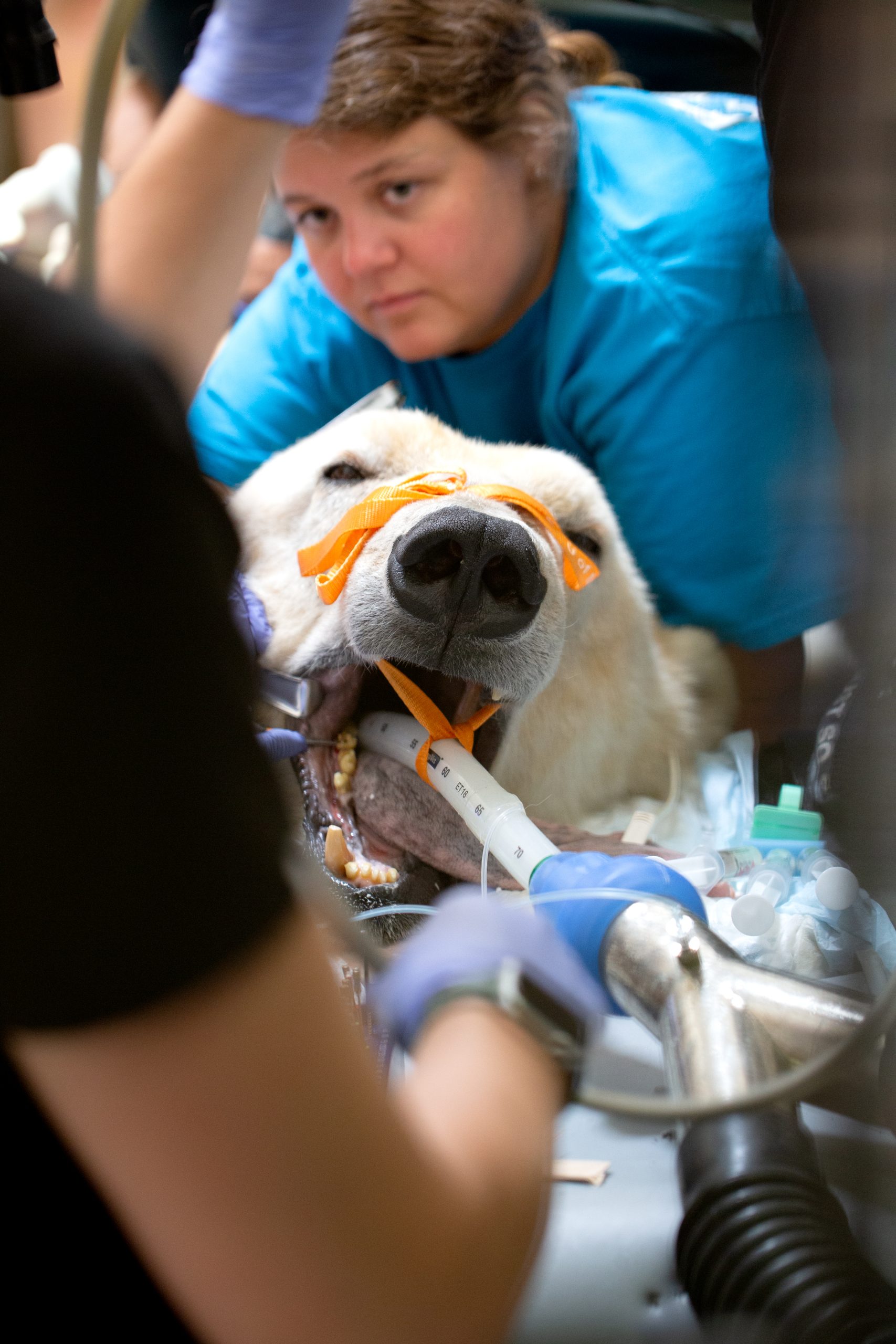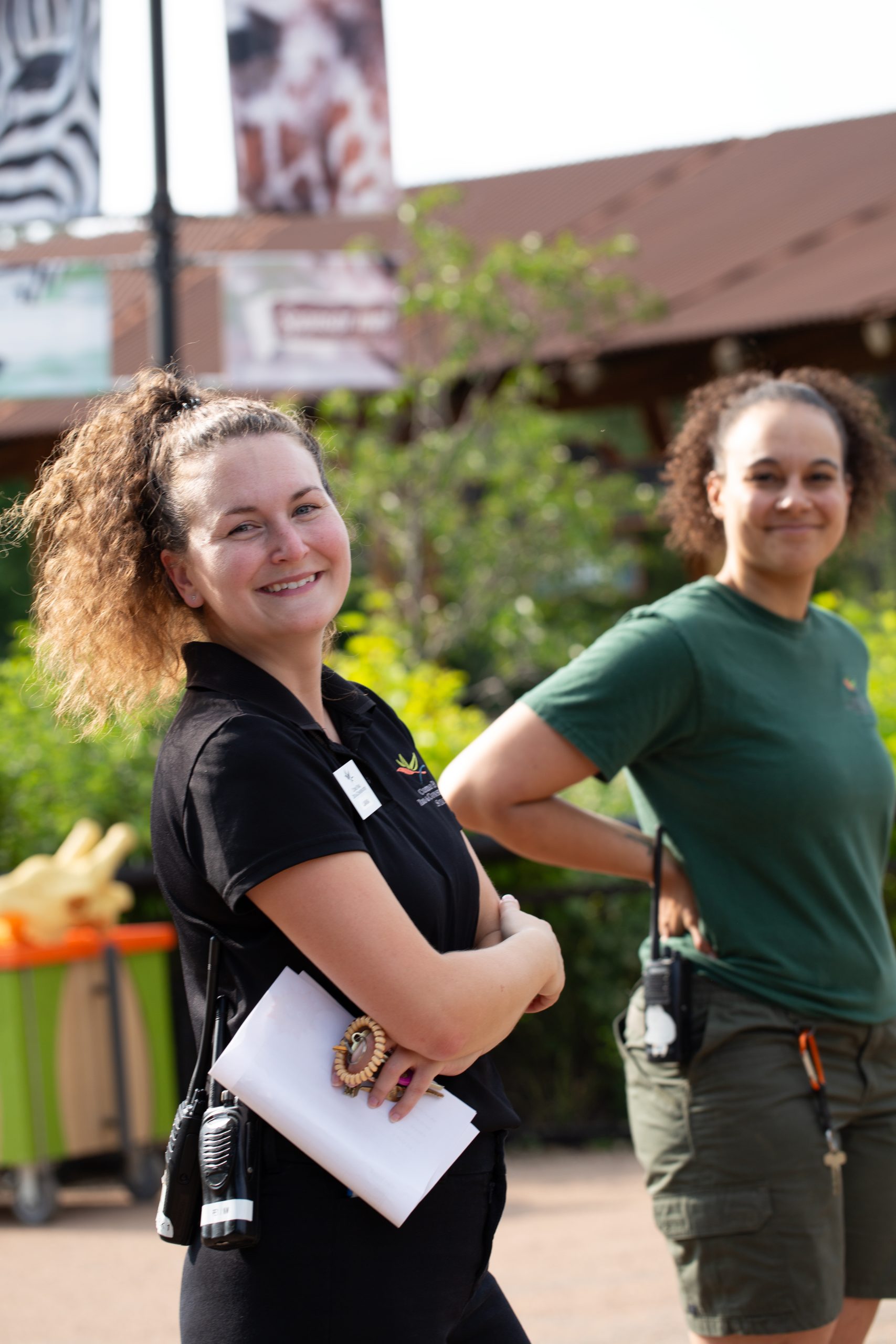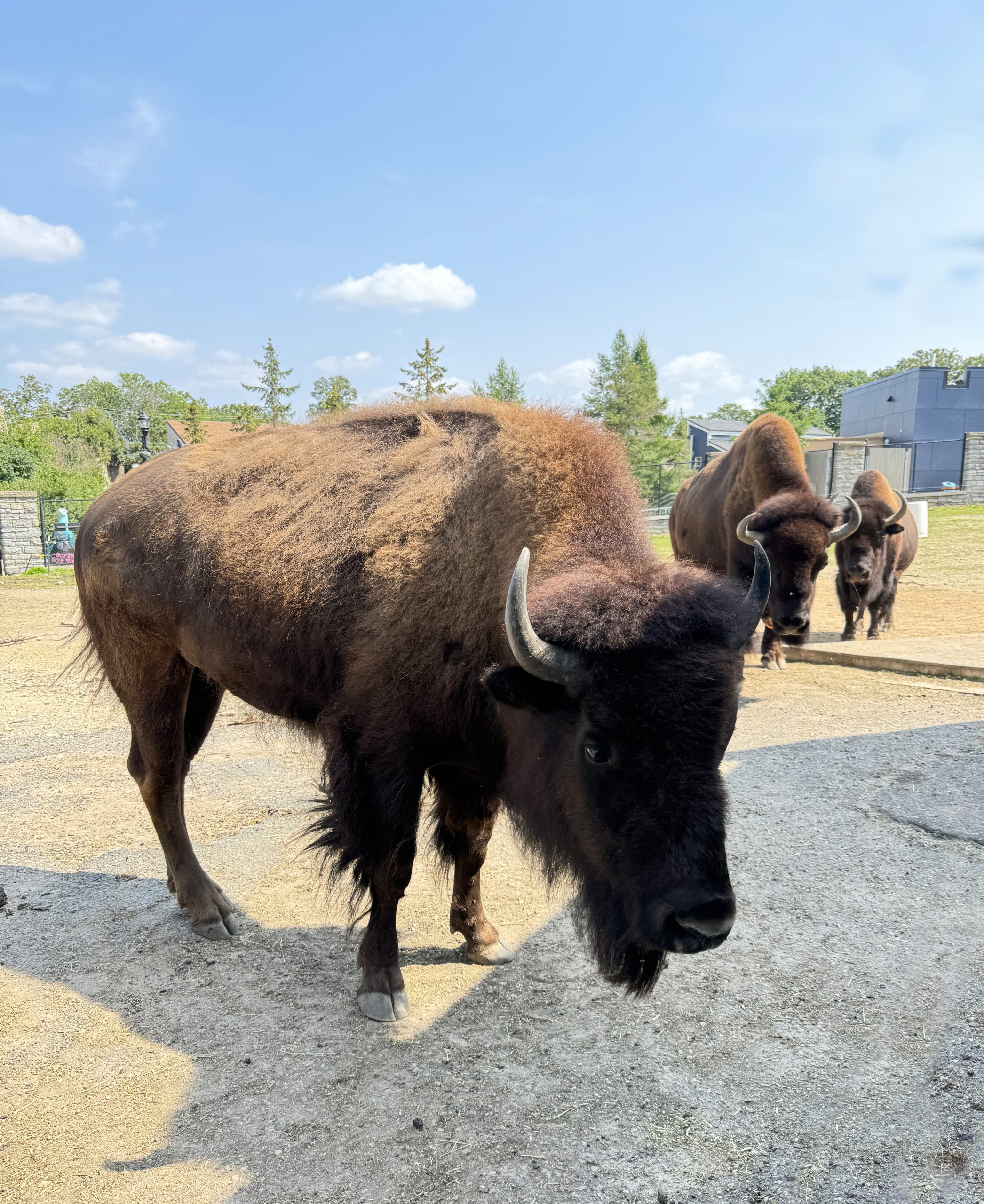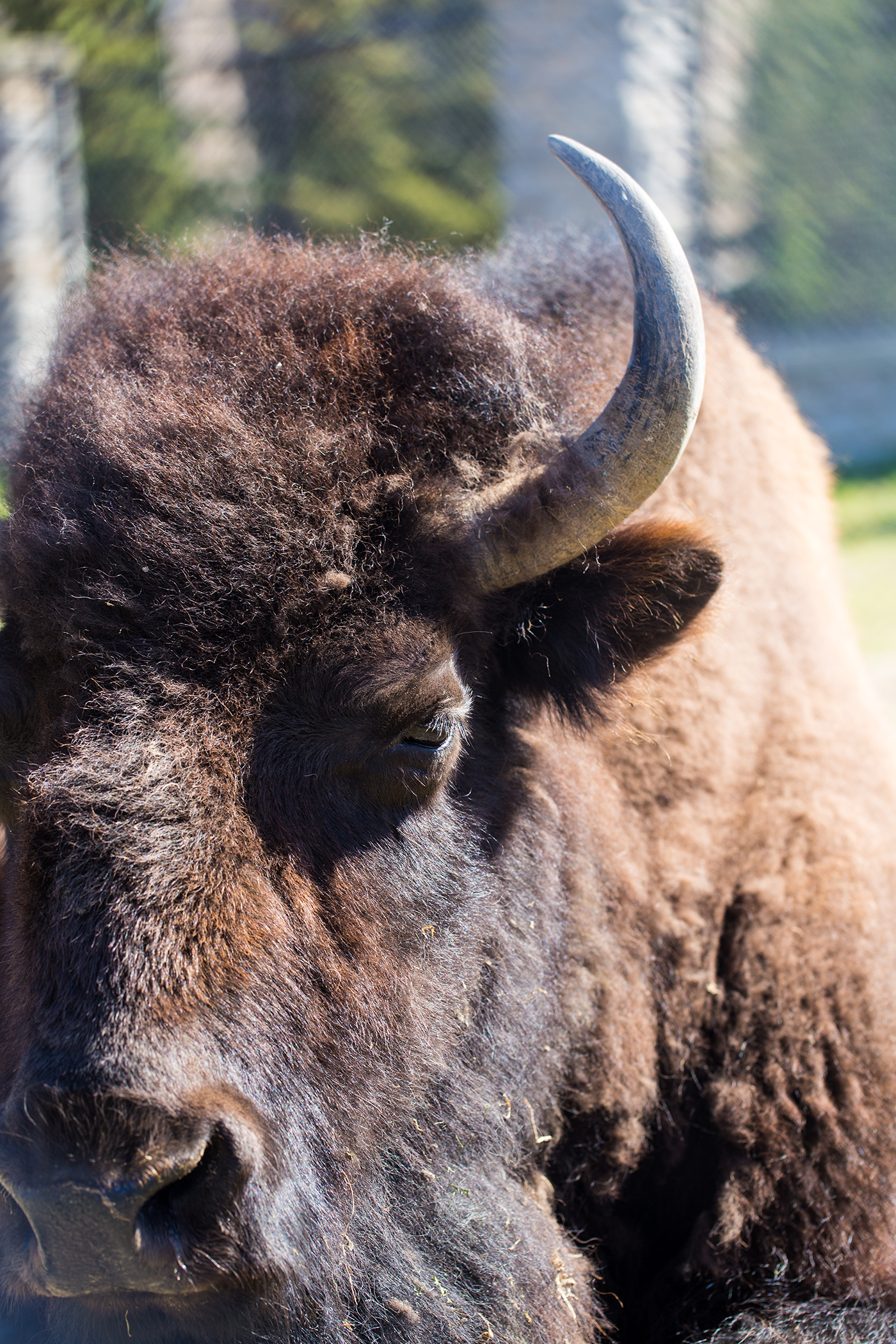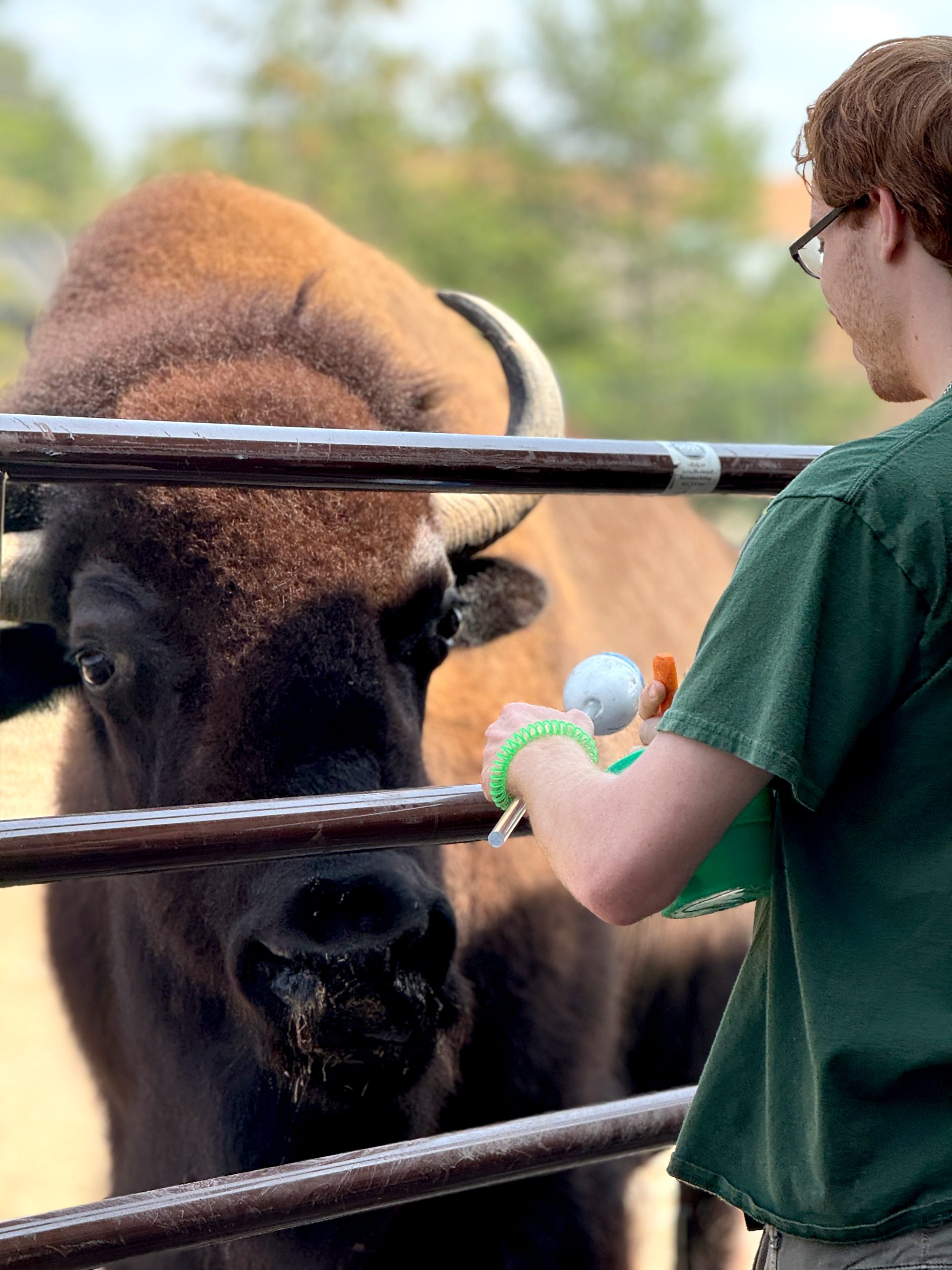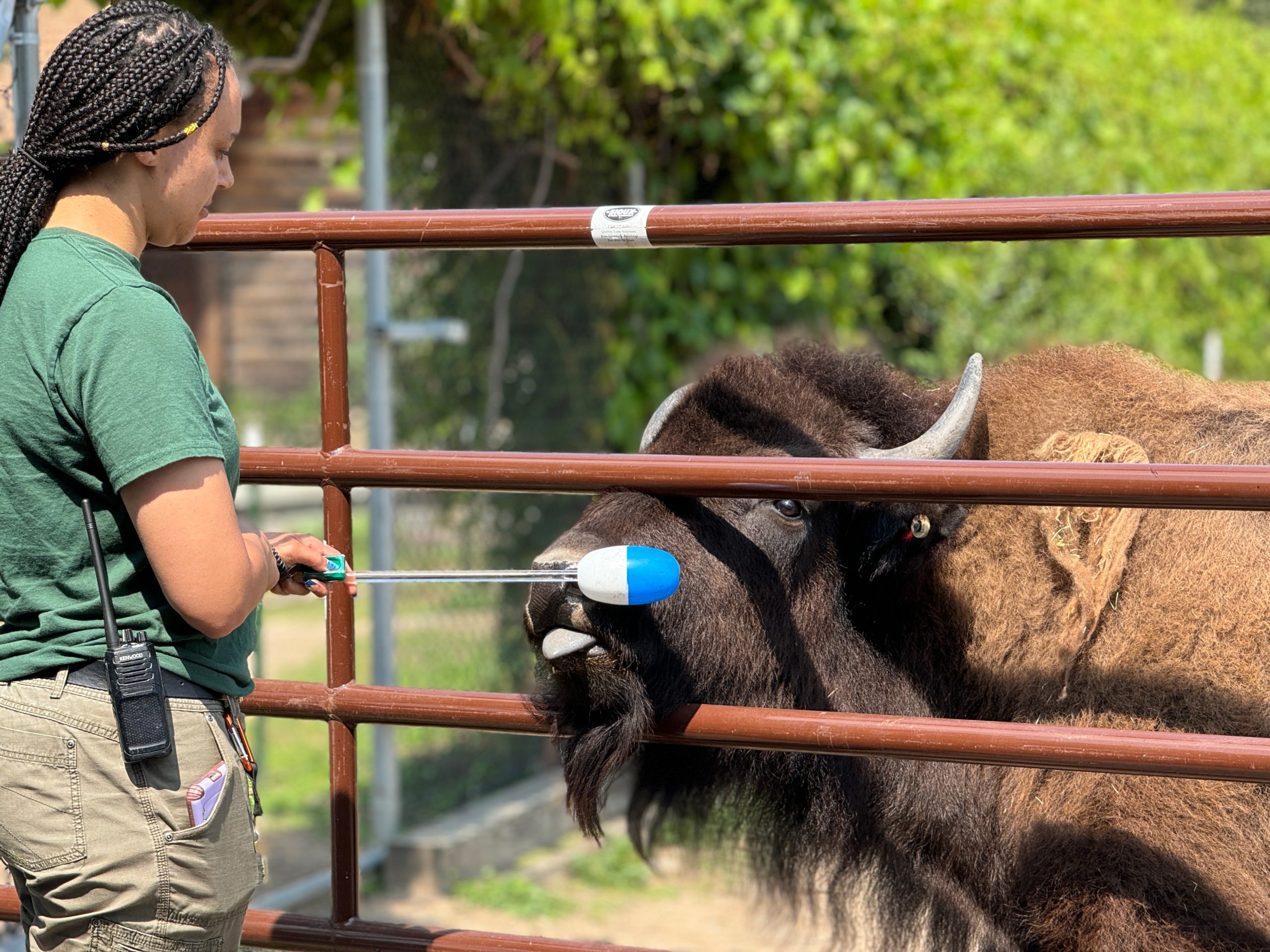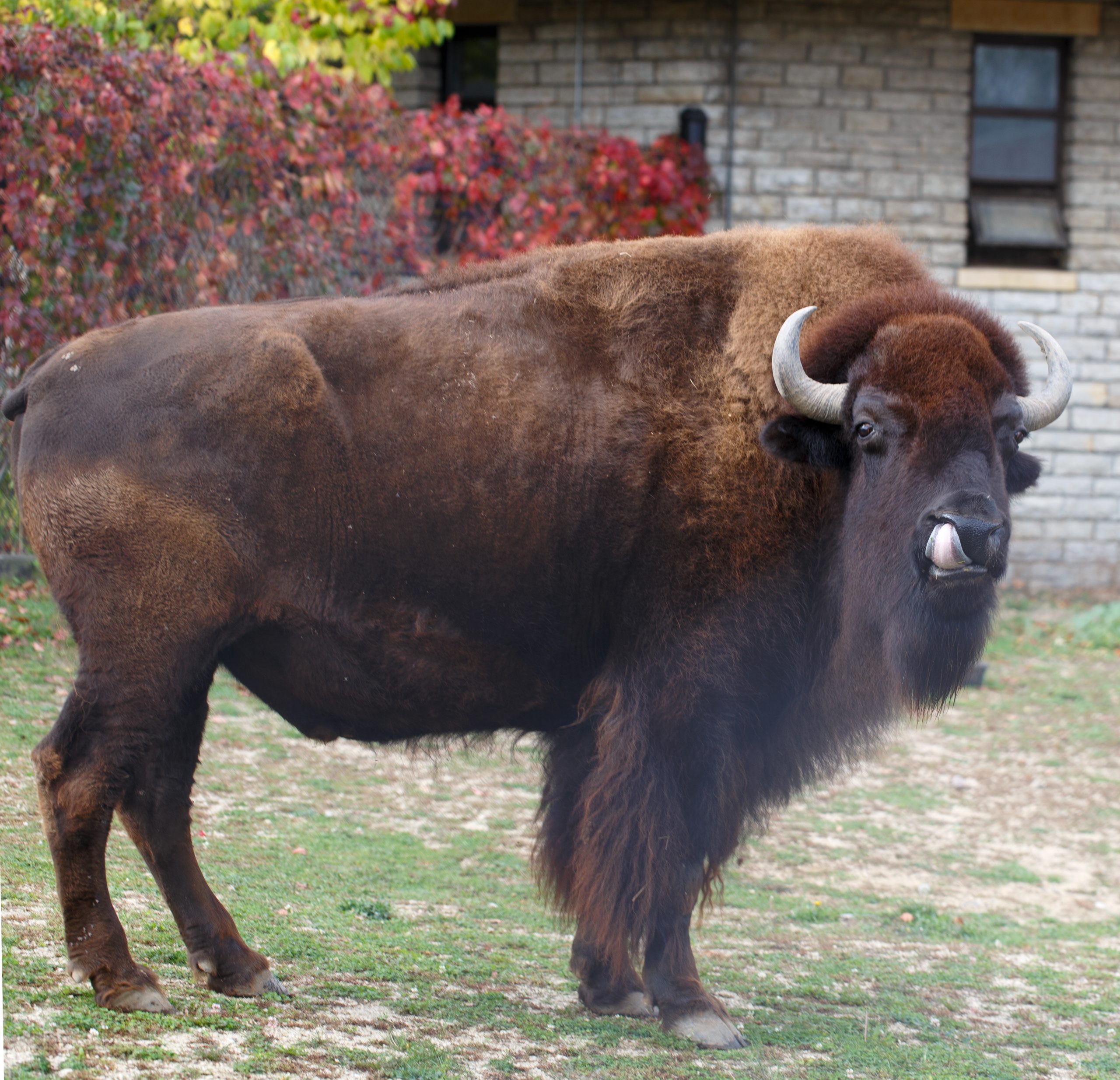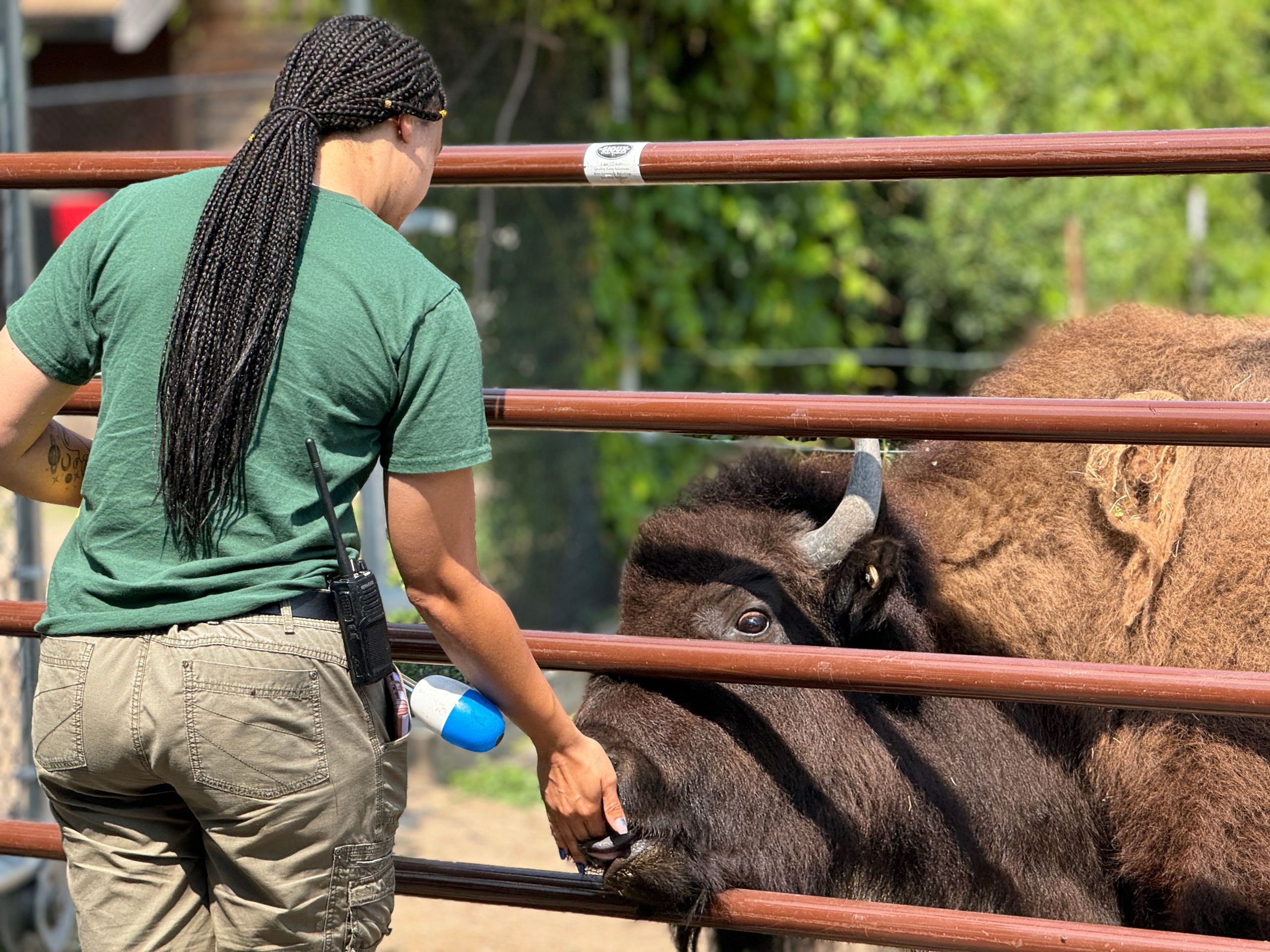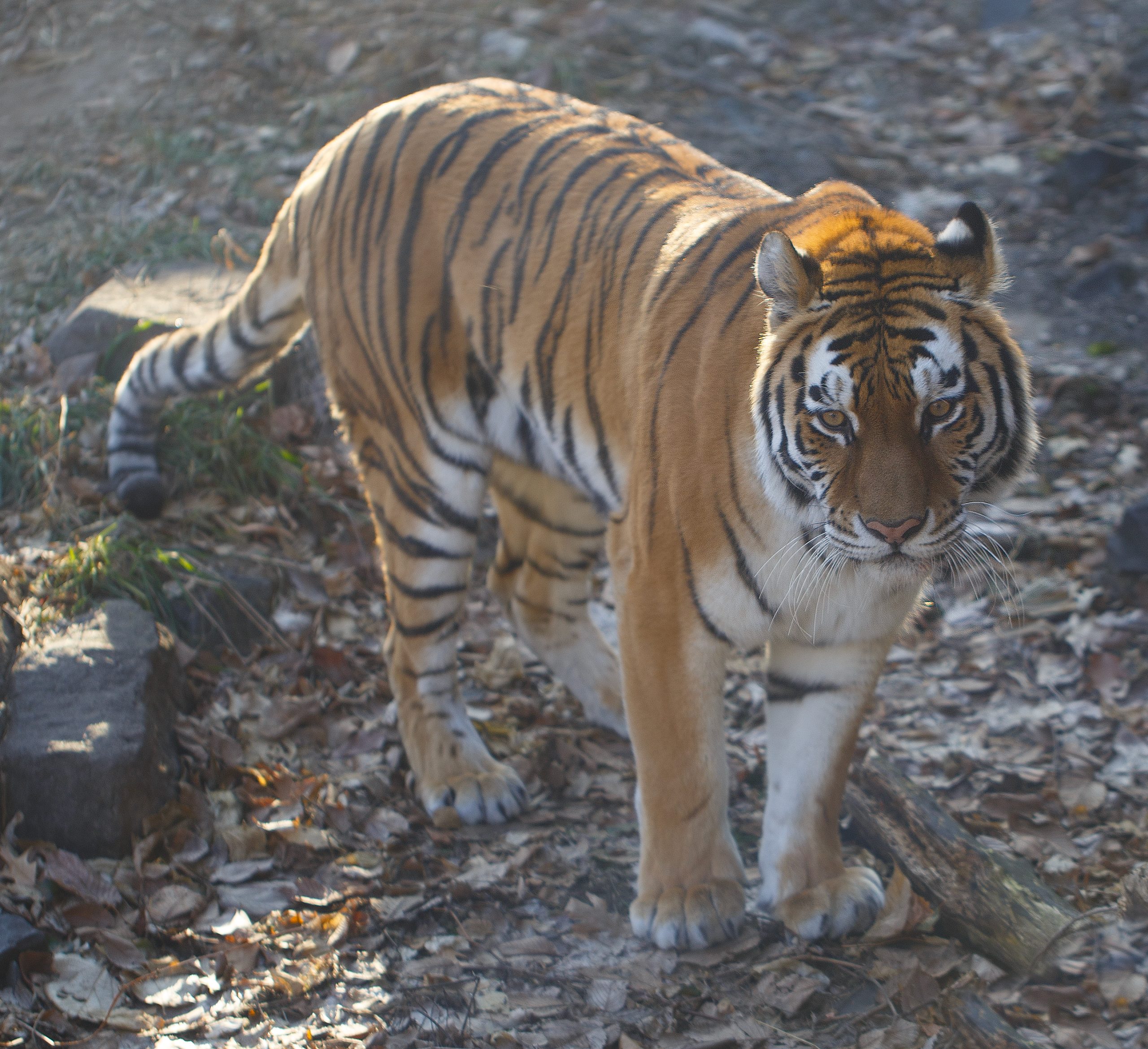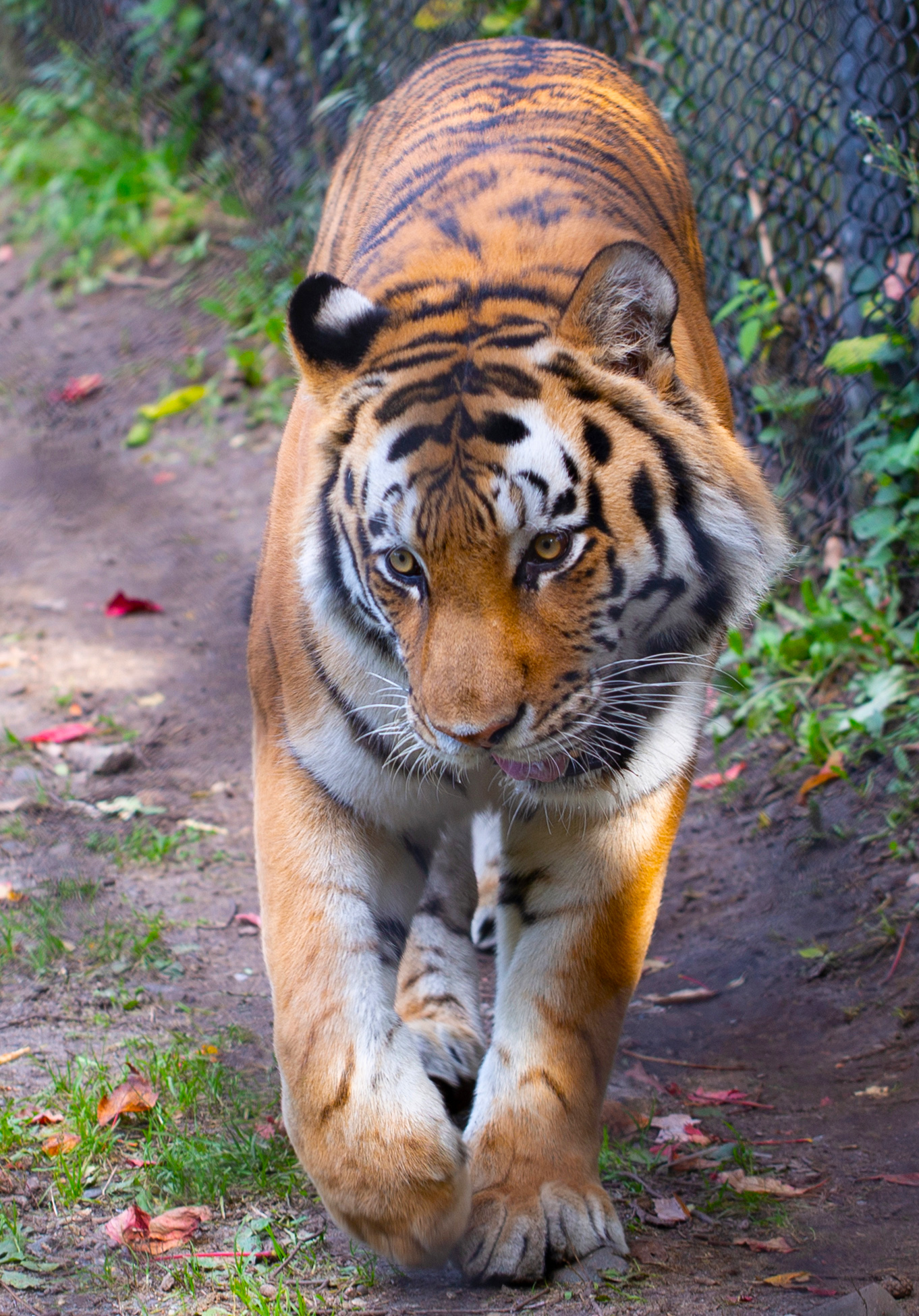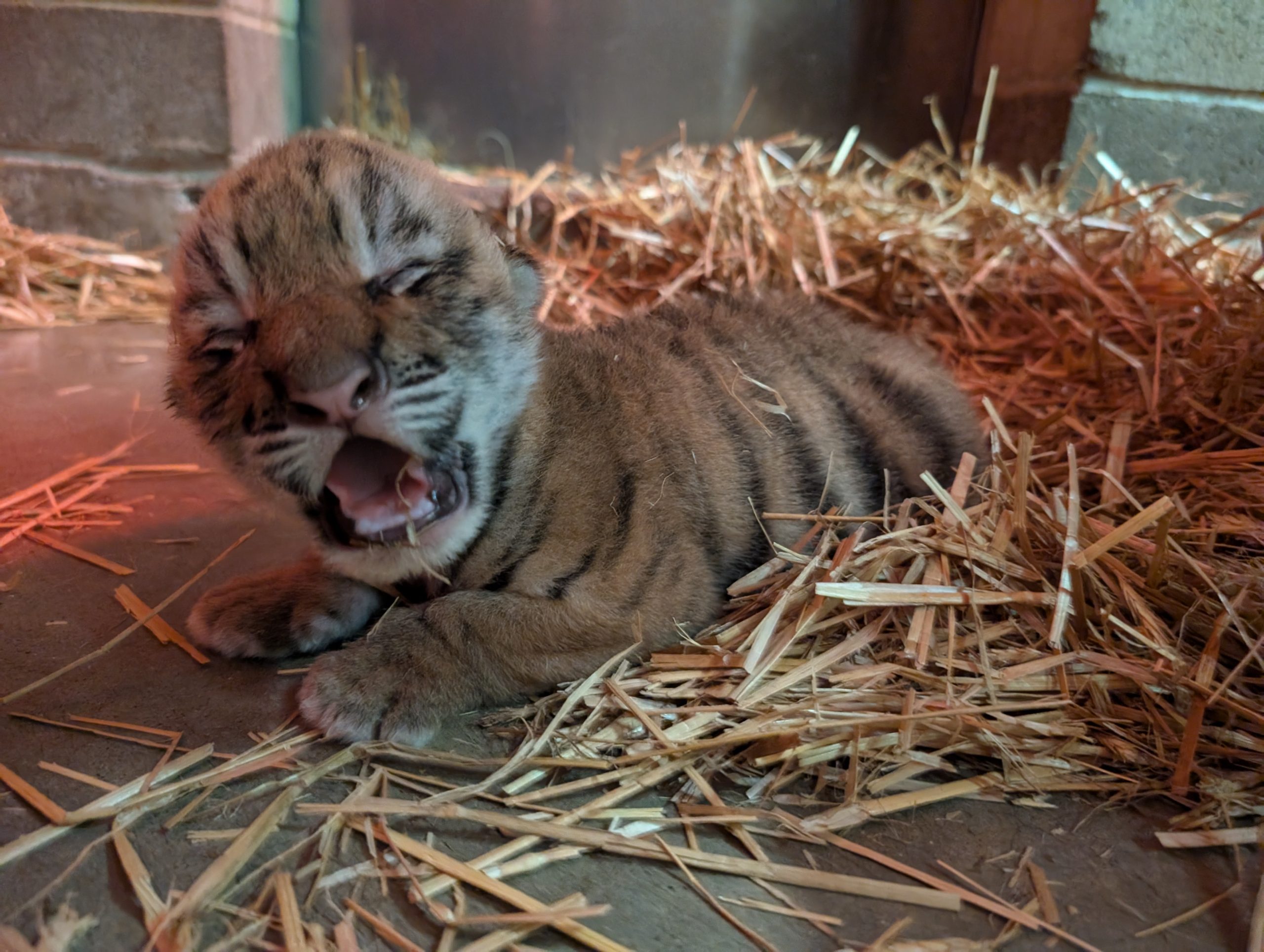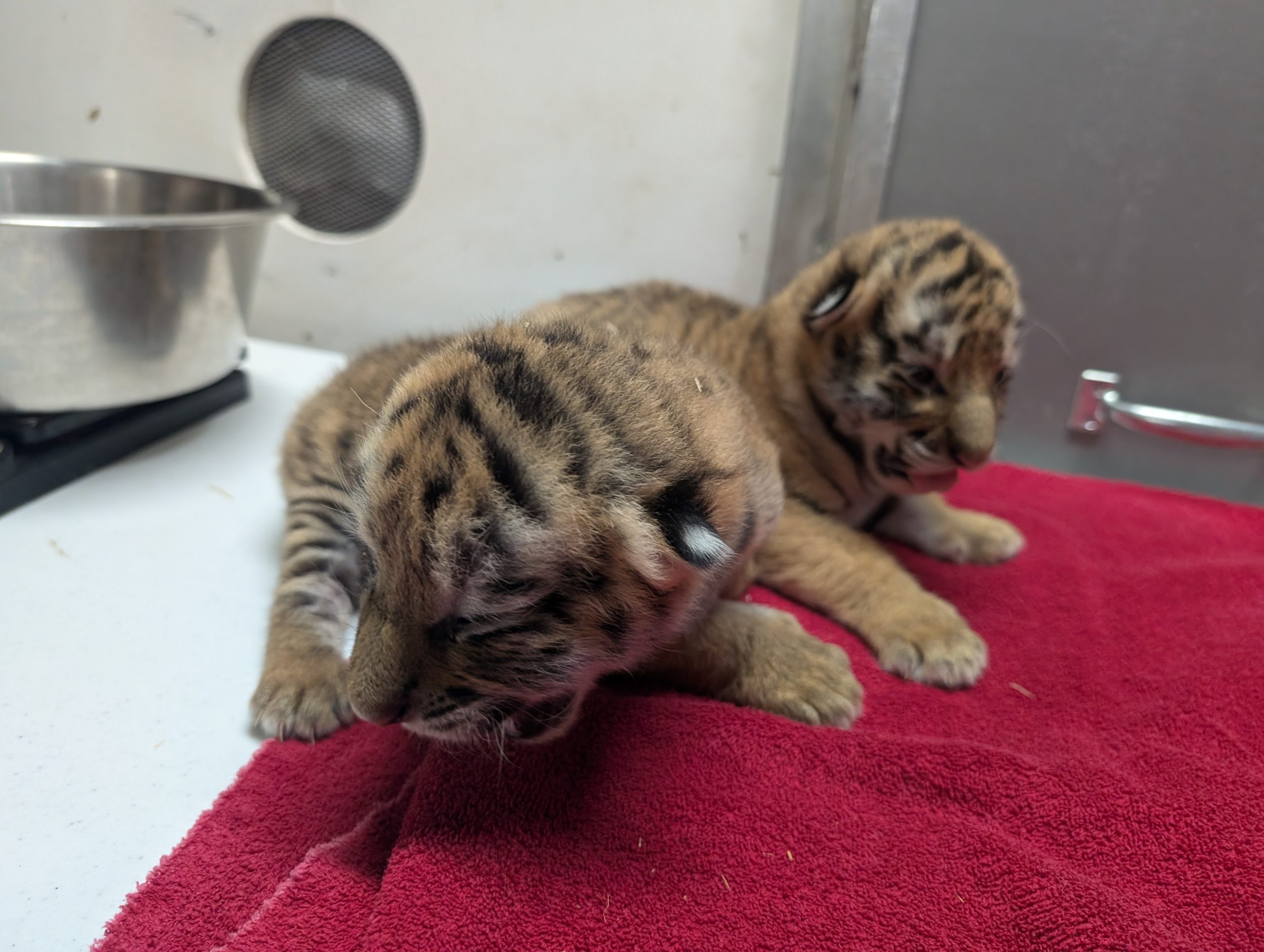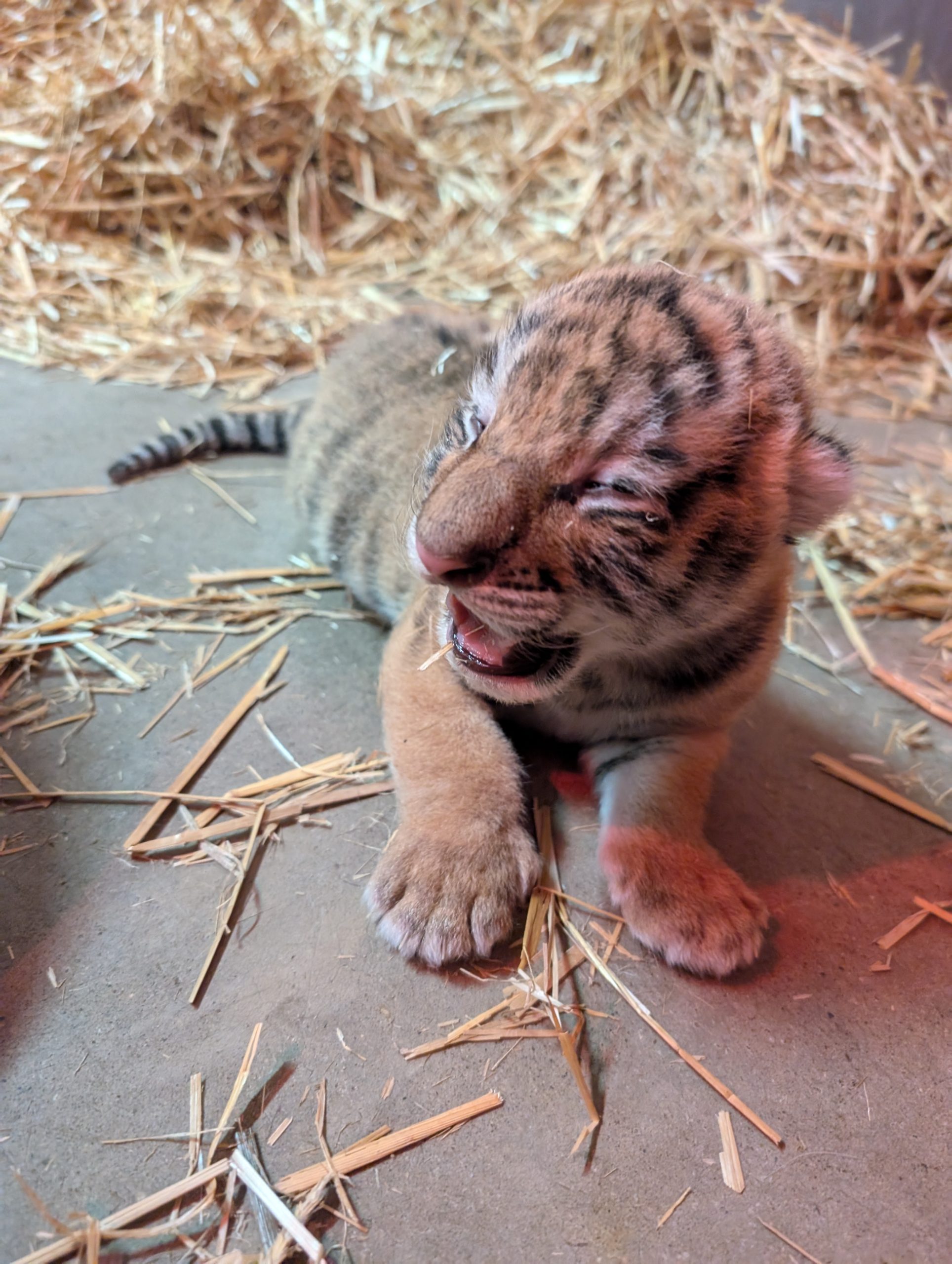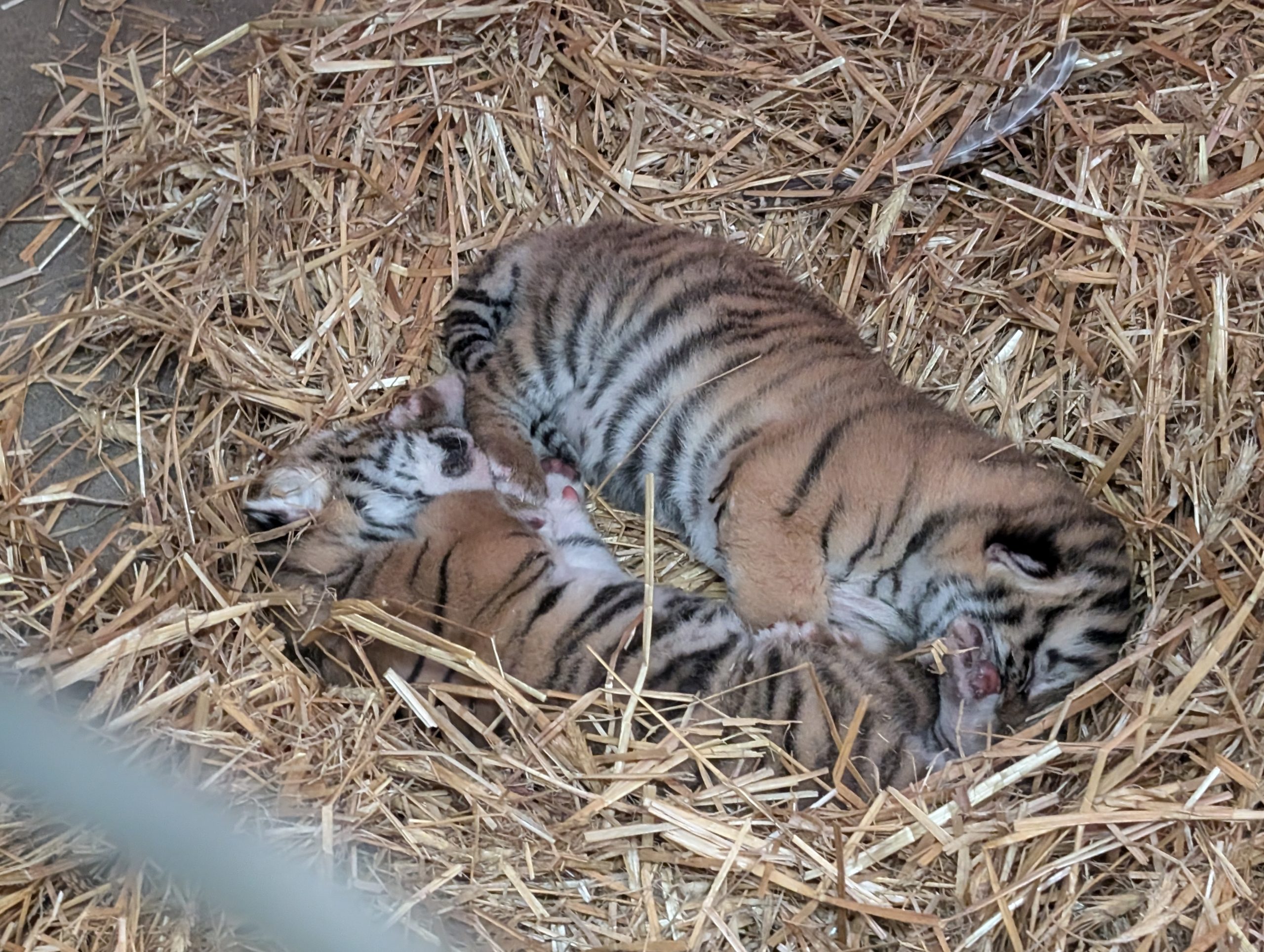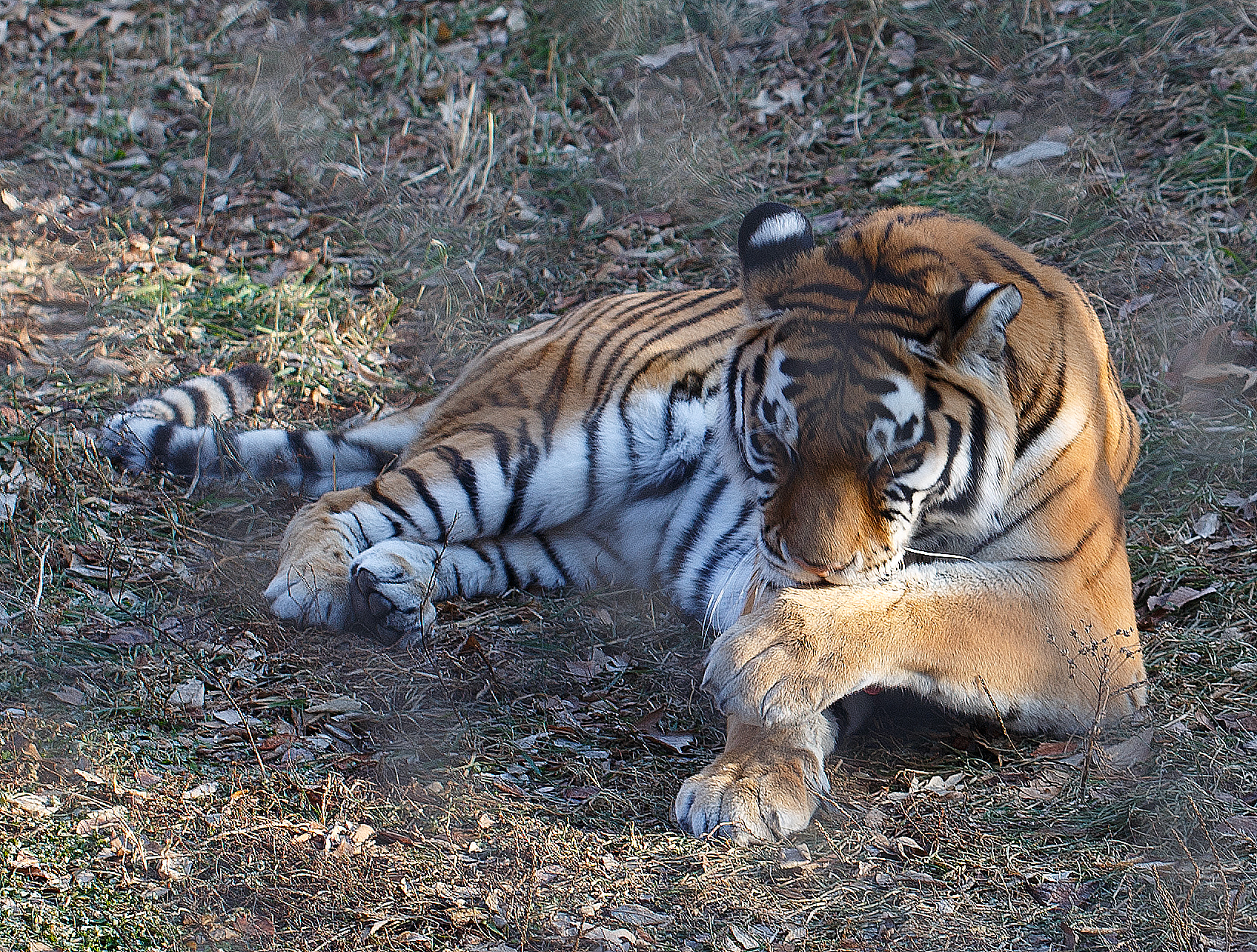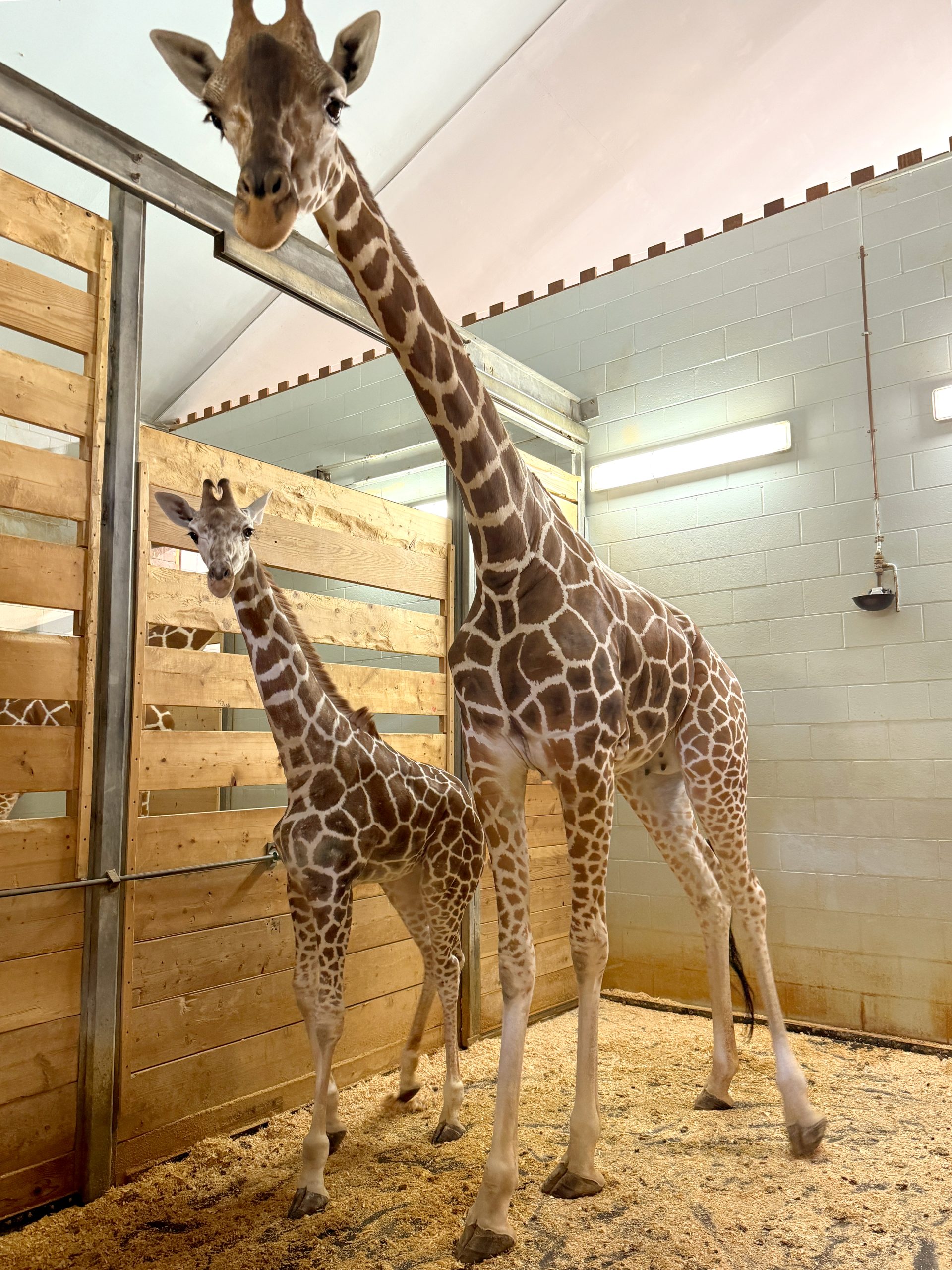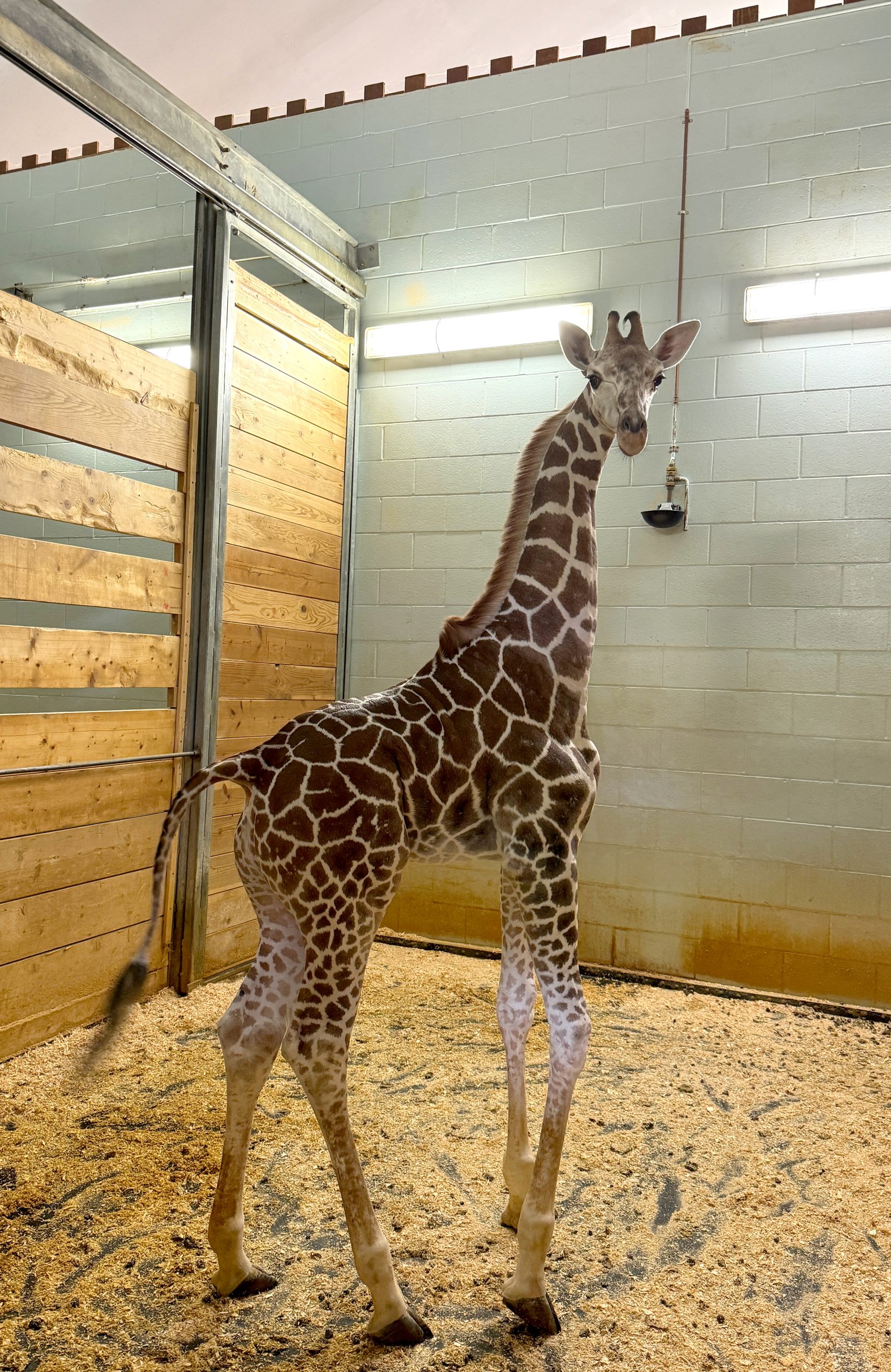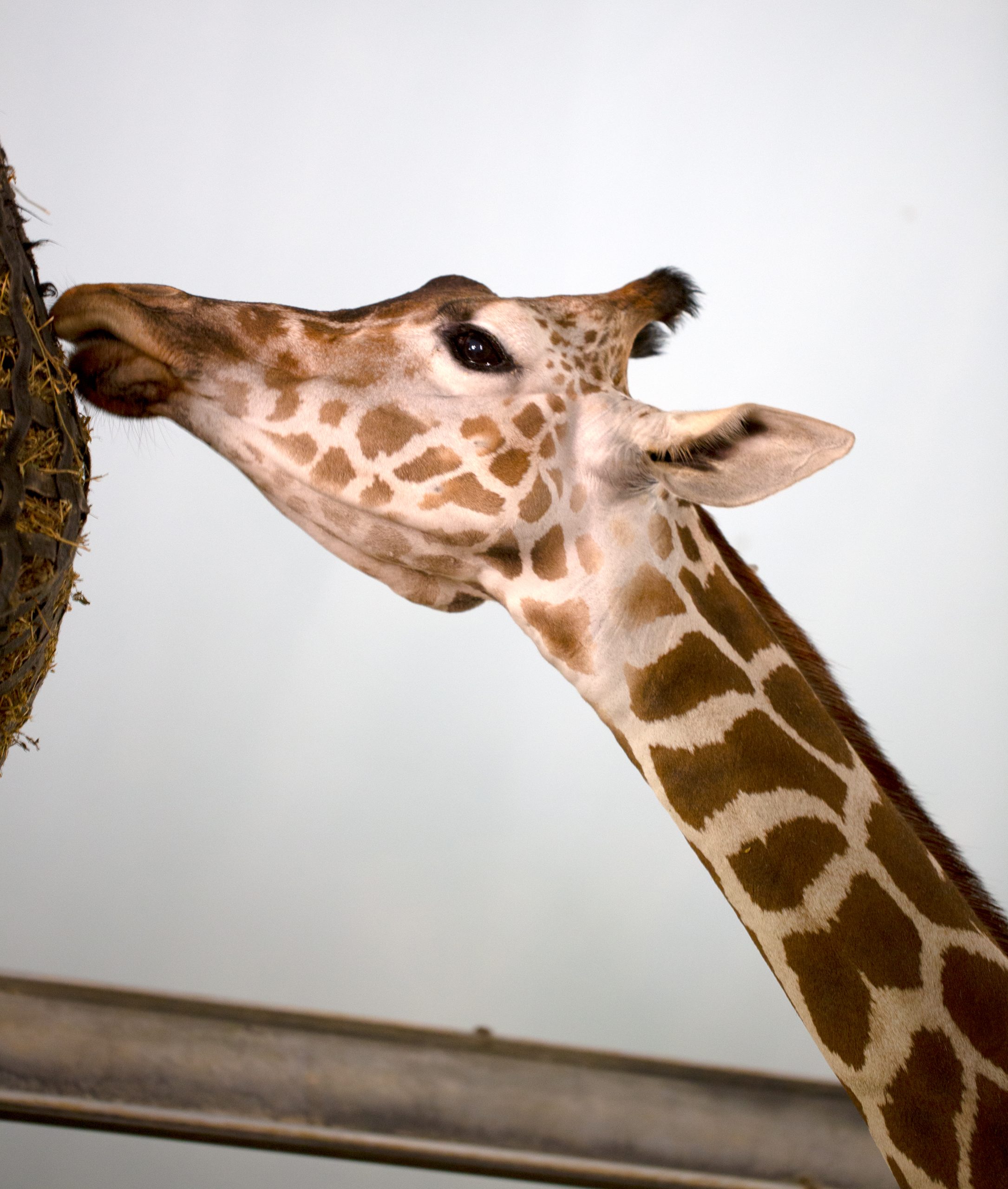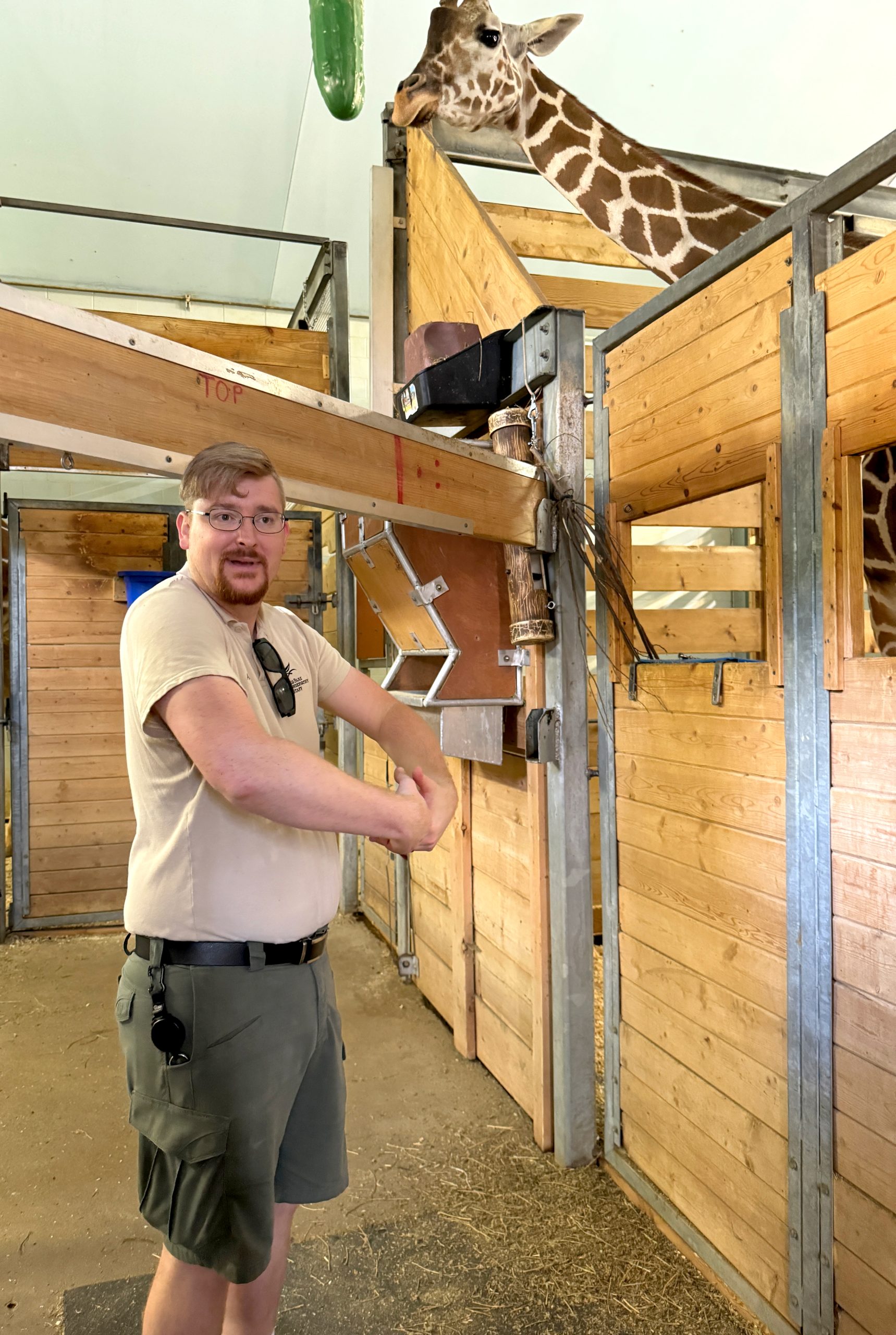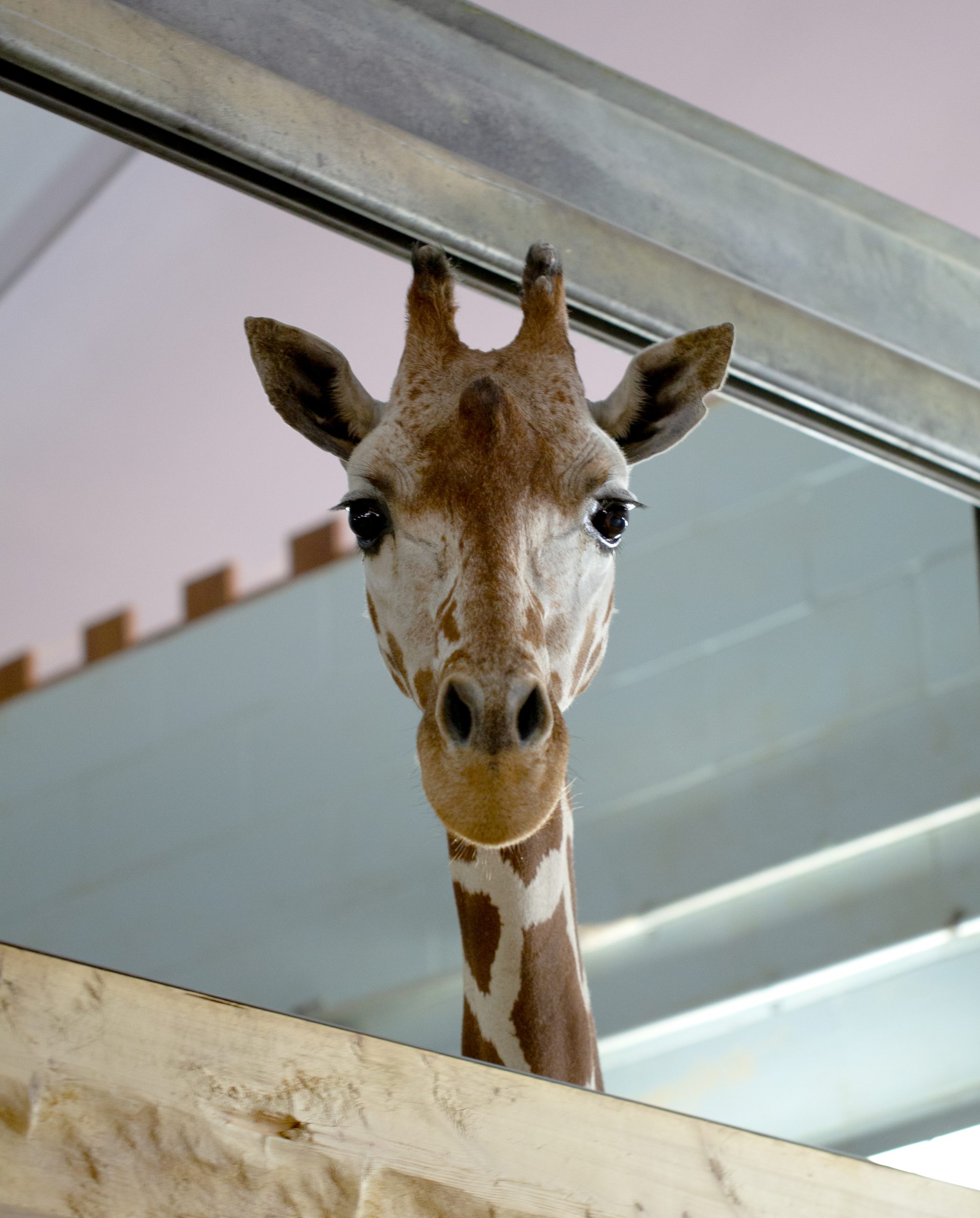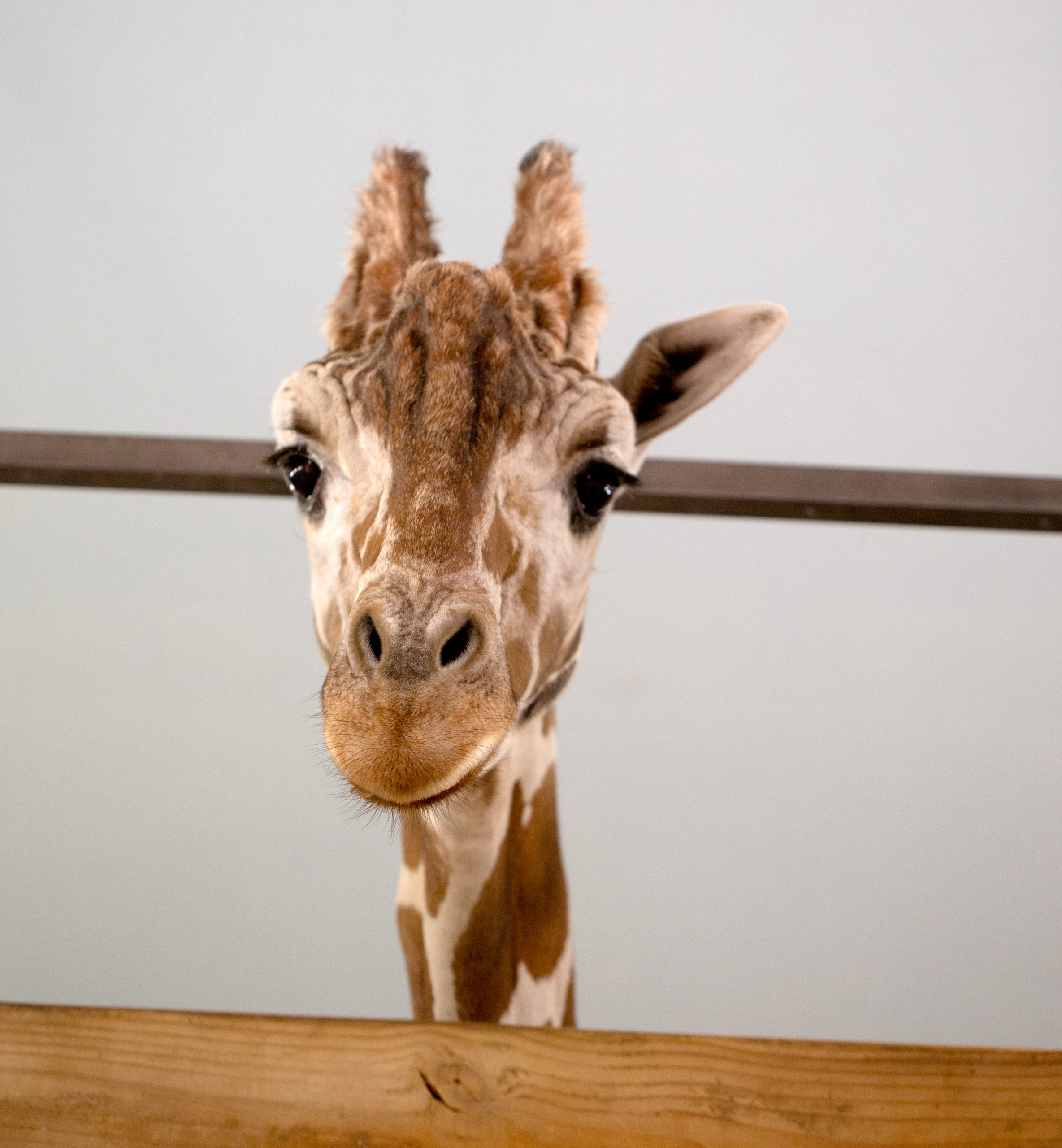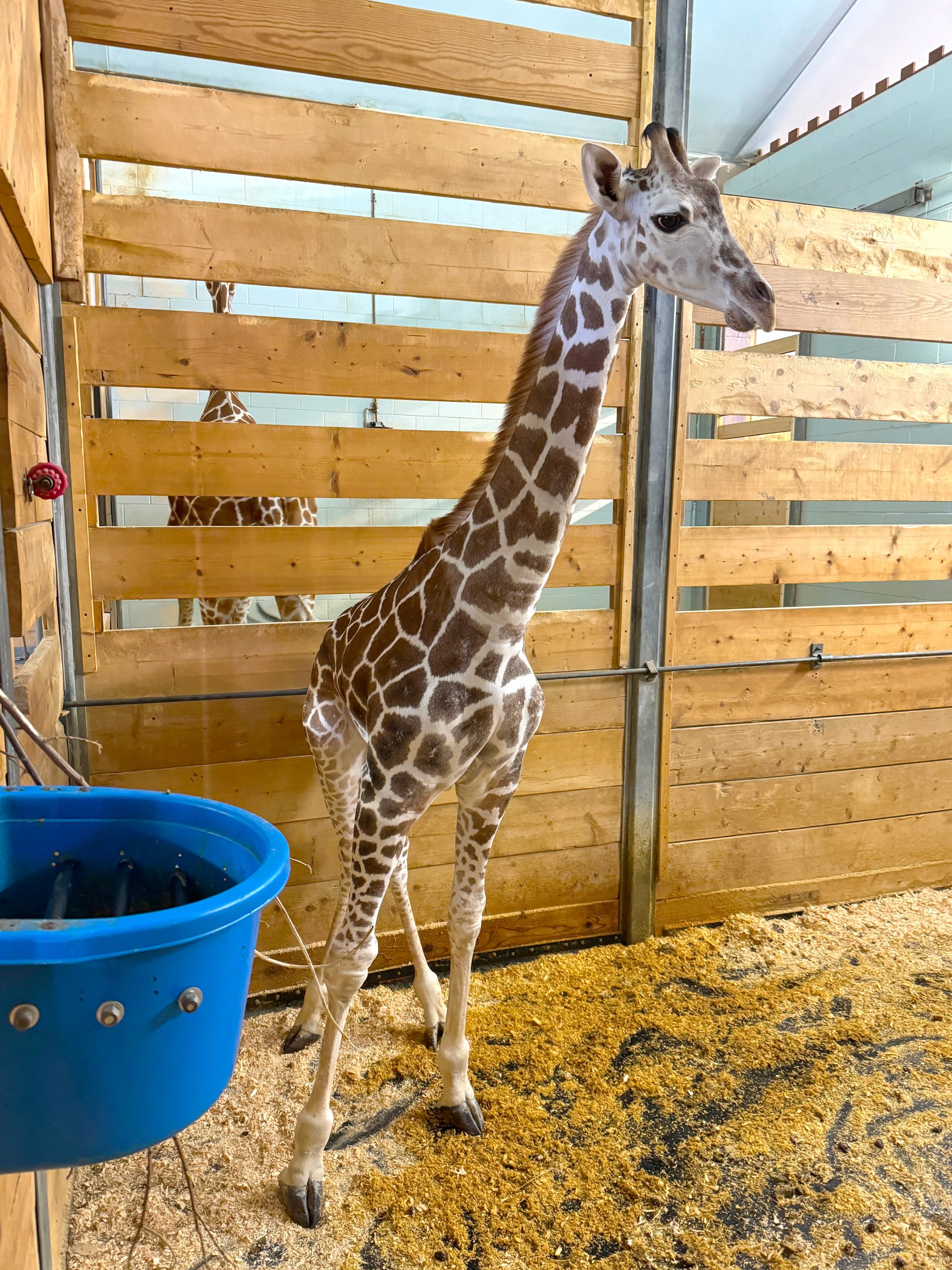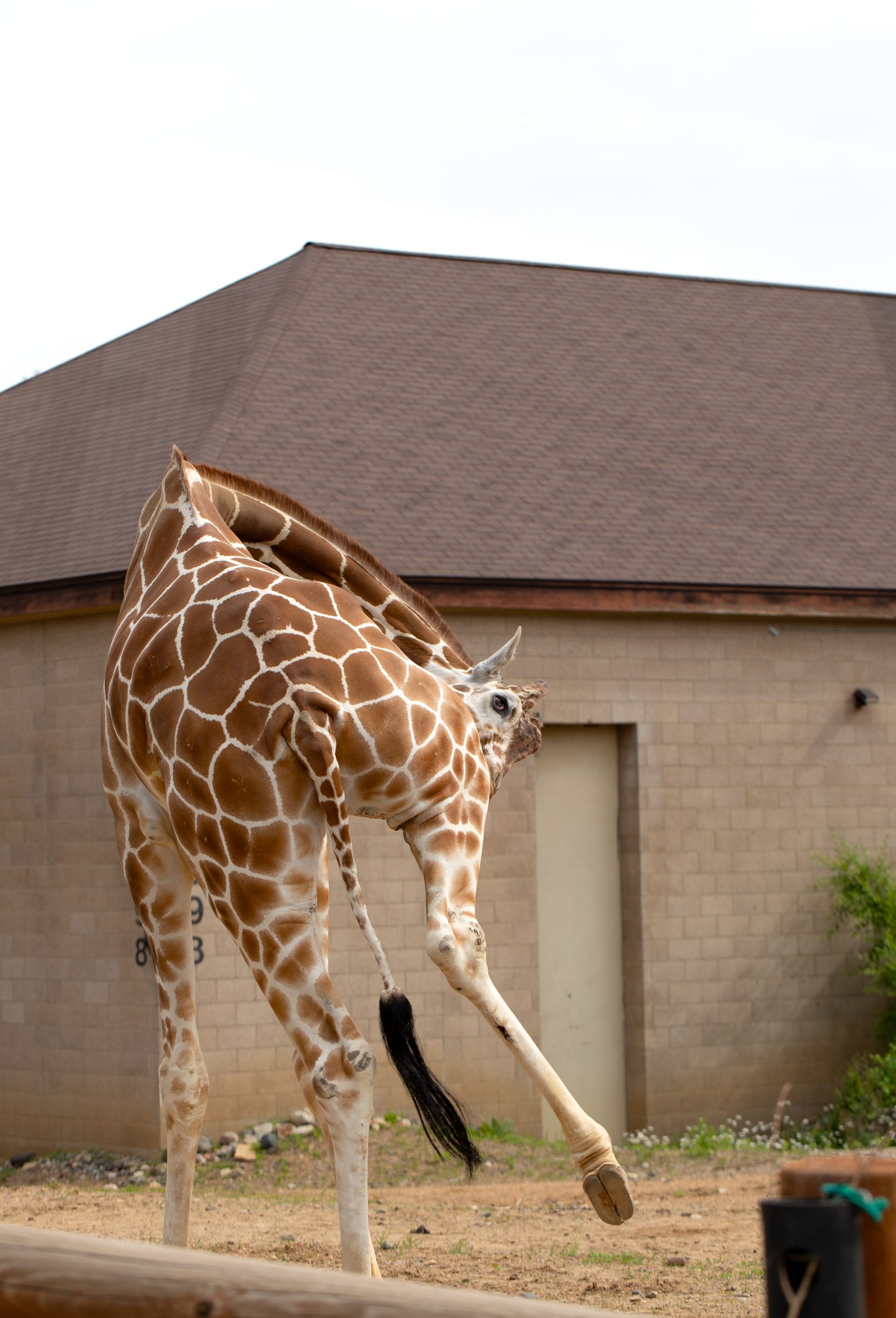
What’s the best time of day to come to Como? With more than a dozen free daily programs offered throughout the summer, the answer is all the time, and again and again. As summer heats up, make the most of every visit to Como with this roster of family-friendly programs and special events, all free to every visitor.
-
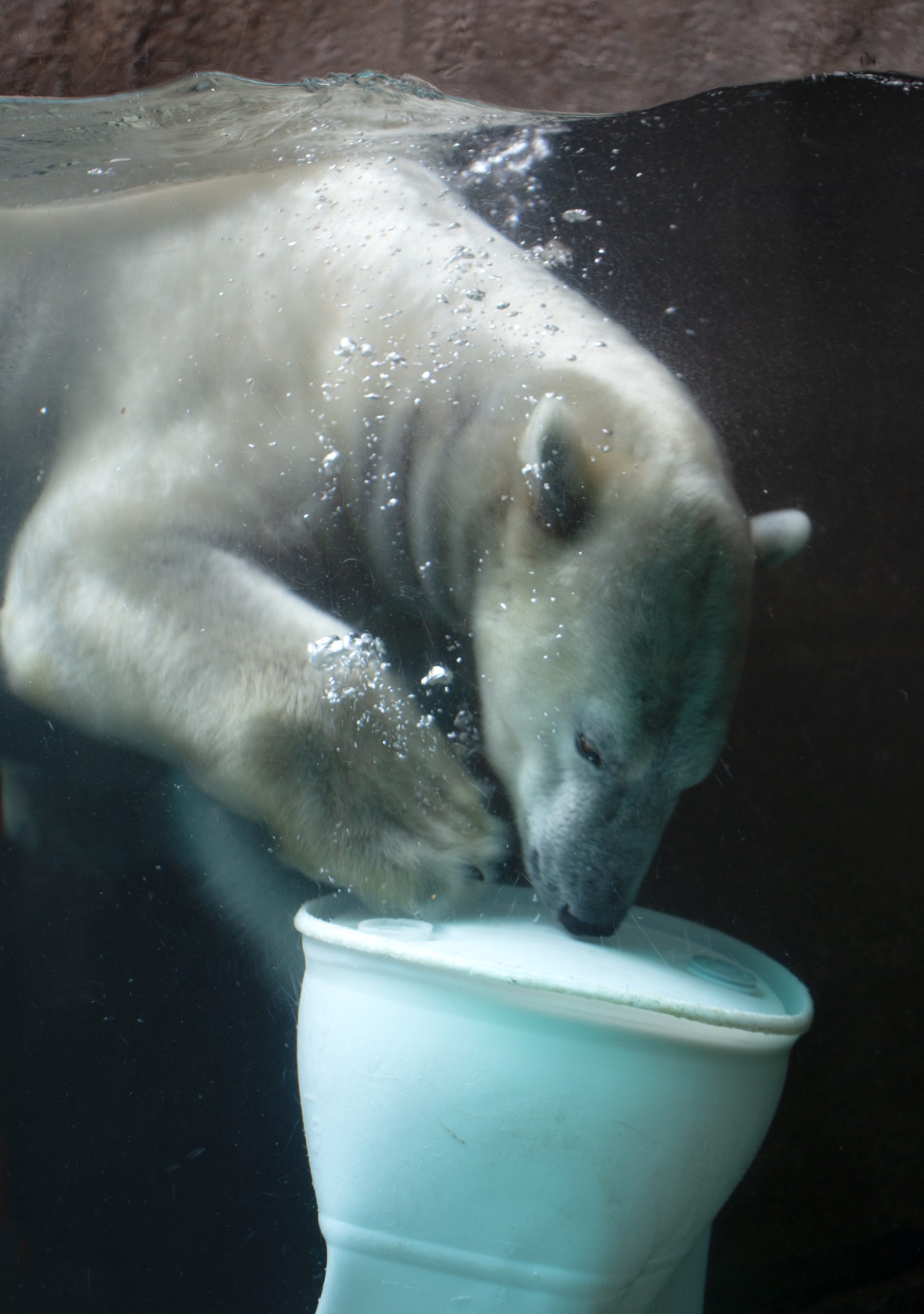
Polar Bear Program | 10:30 a.m.
Stop by Polar Bear Odyssey to see how Nan, Neil, and Kulu connect with their trainers every day, splashing down in the pools, and sniffing out special enrichments in their habitat.
-
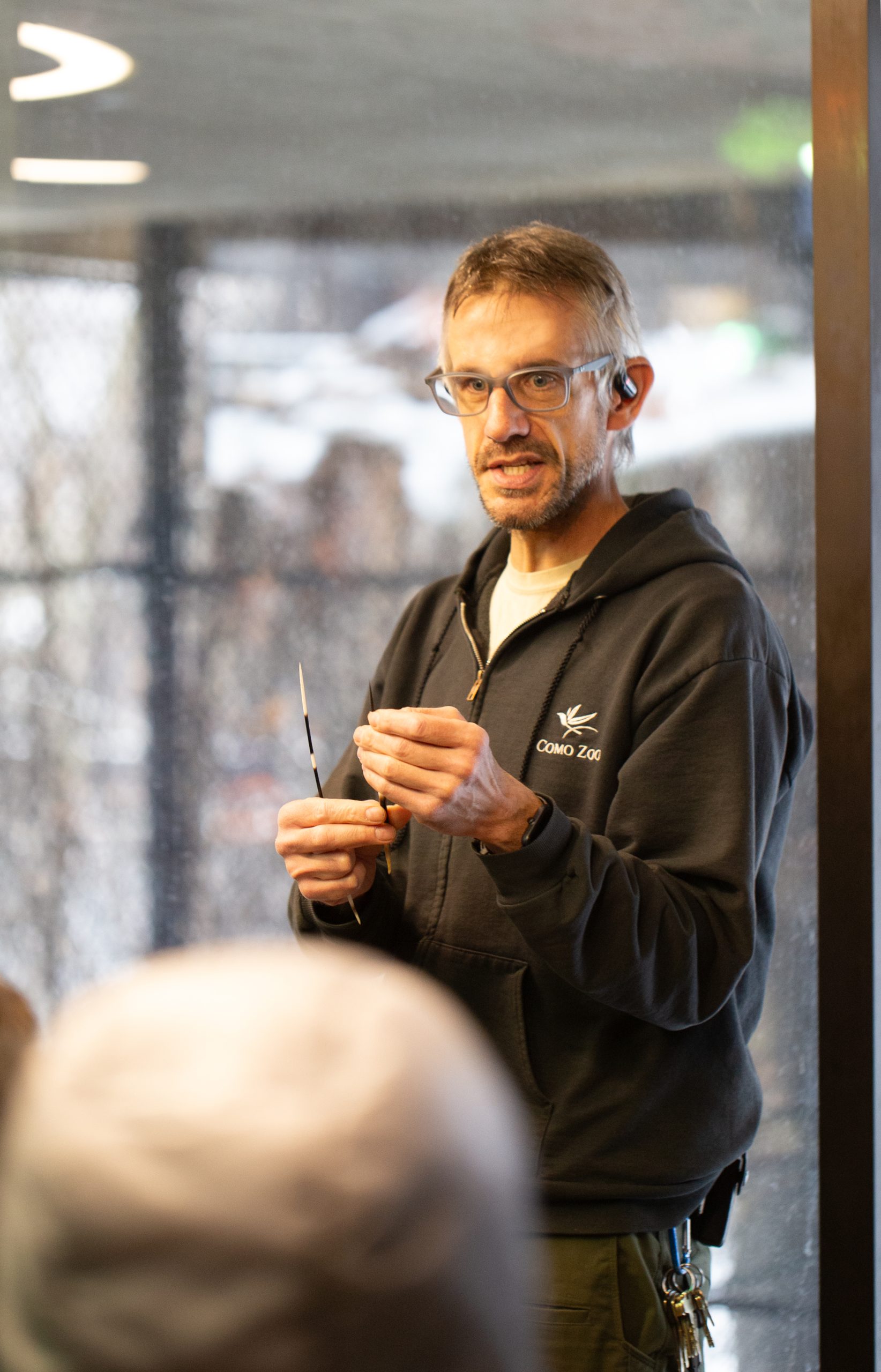
Zookeeper Talk | 11:00 a.m.
What’s it like to take care of the world’s most amazing animals? Ask one of Como’s zookeepers, who take turns sharing their behind-the-scenes insights about dozens of different animals at this daily event. Listen to Como’s public address announcements to find out where the day’s talk is taking place.
-

Blaze Sparky Show | 11:30 a.m. & 2:30 p.m.
A splashy Como tradition since 1956, the Blaze Sparky Show now highlights all of the pinnipeds that call Como Harbor home.
-
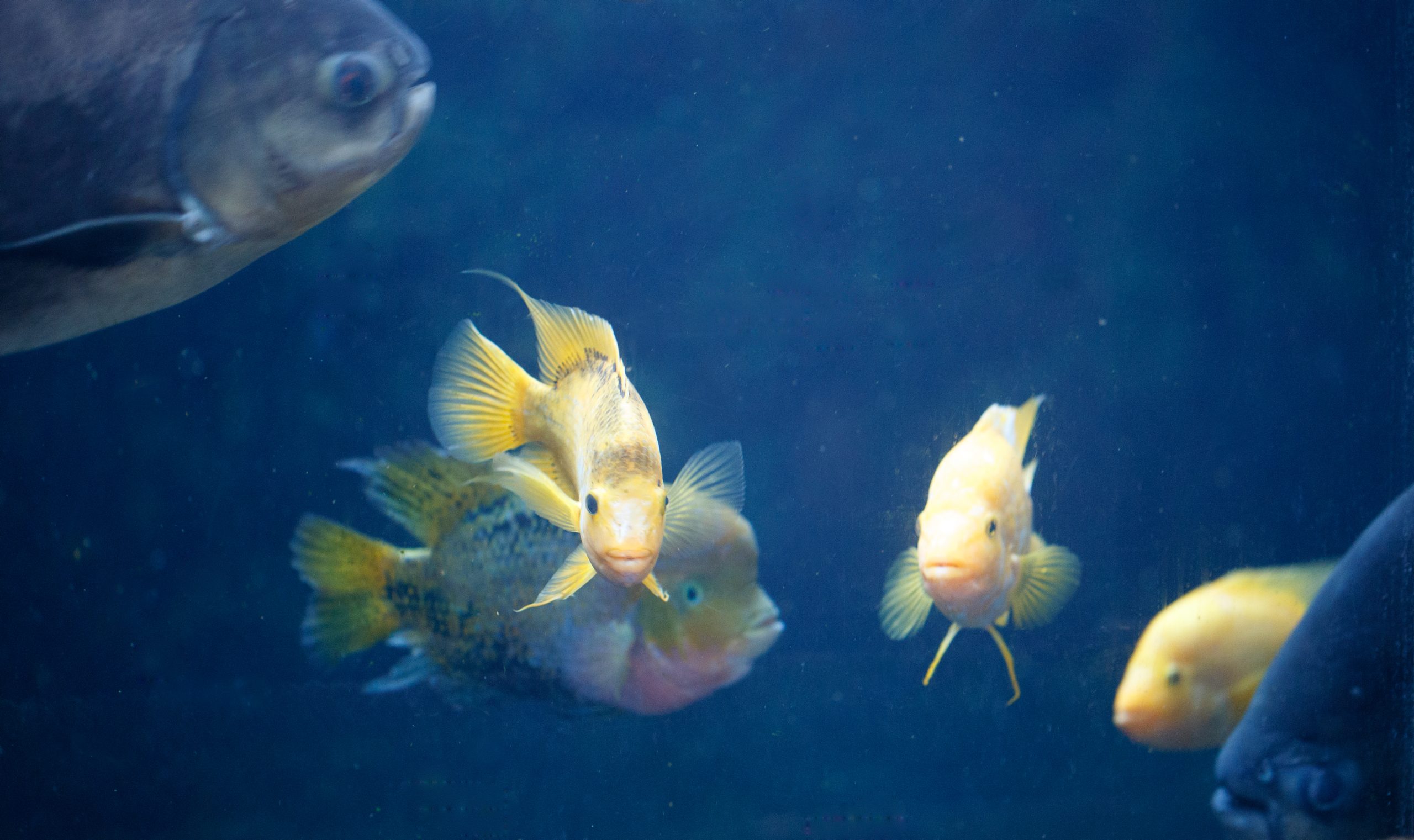
Fish Feeding in Tropical Encounters | Noon
Dive a little deeper into understanding the underwater world with this daily fish-feeding experience presented by Como’s interpretive staff.
-
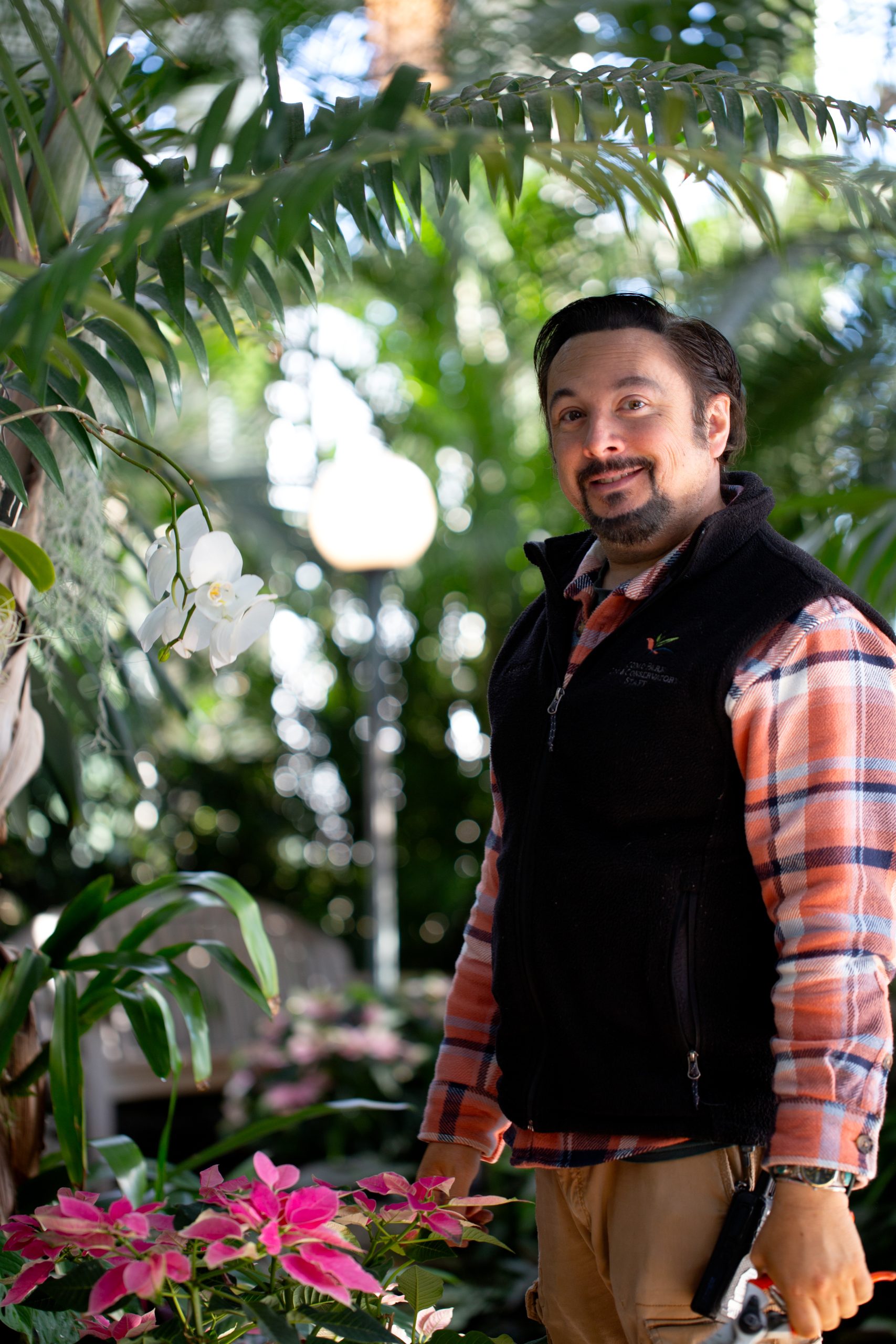
Gardener Chat | 1:00 p.m.
What does it take to keep the Marjorie McNeely Conservatory growing? Find out at this engaging Q and A, featuring a new topic in gardening and plant care every day.
-
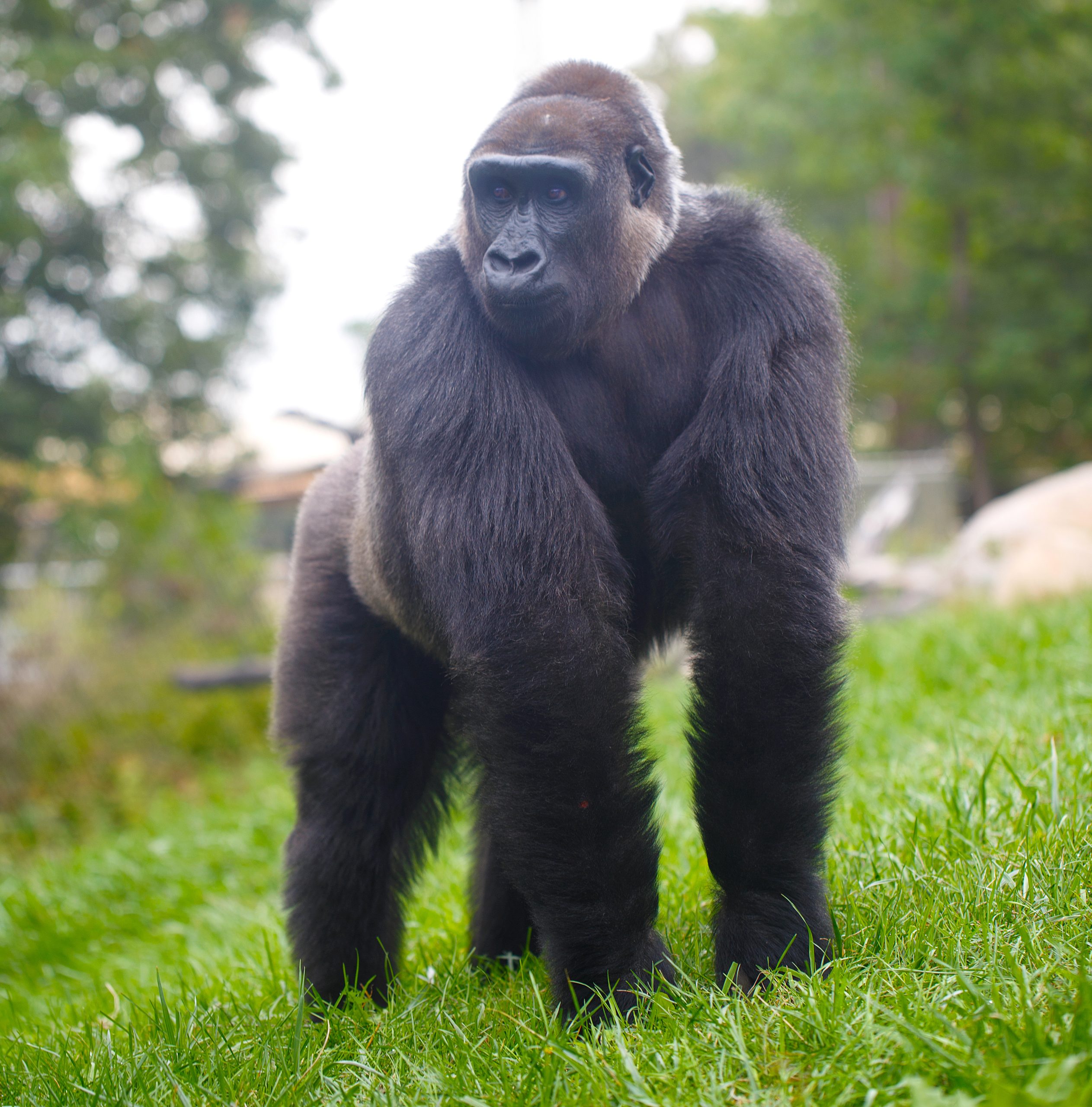
Gorilla Program | 1:30 p.m.
Meet the greatest of the apes face-to-face in Gorilla Forest, as primate keepers connect with Como’s western lowland gorillas, while exploring ways that you can help protect their wild cousins.
-
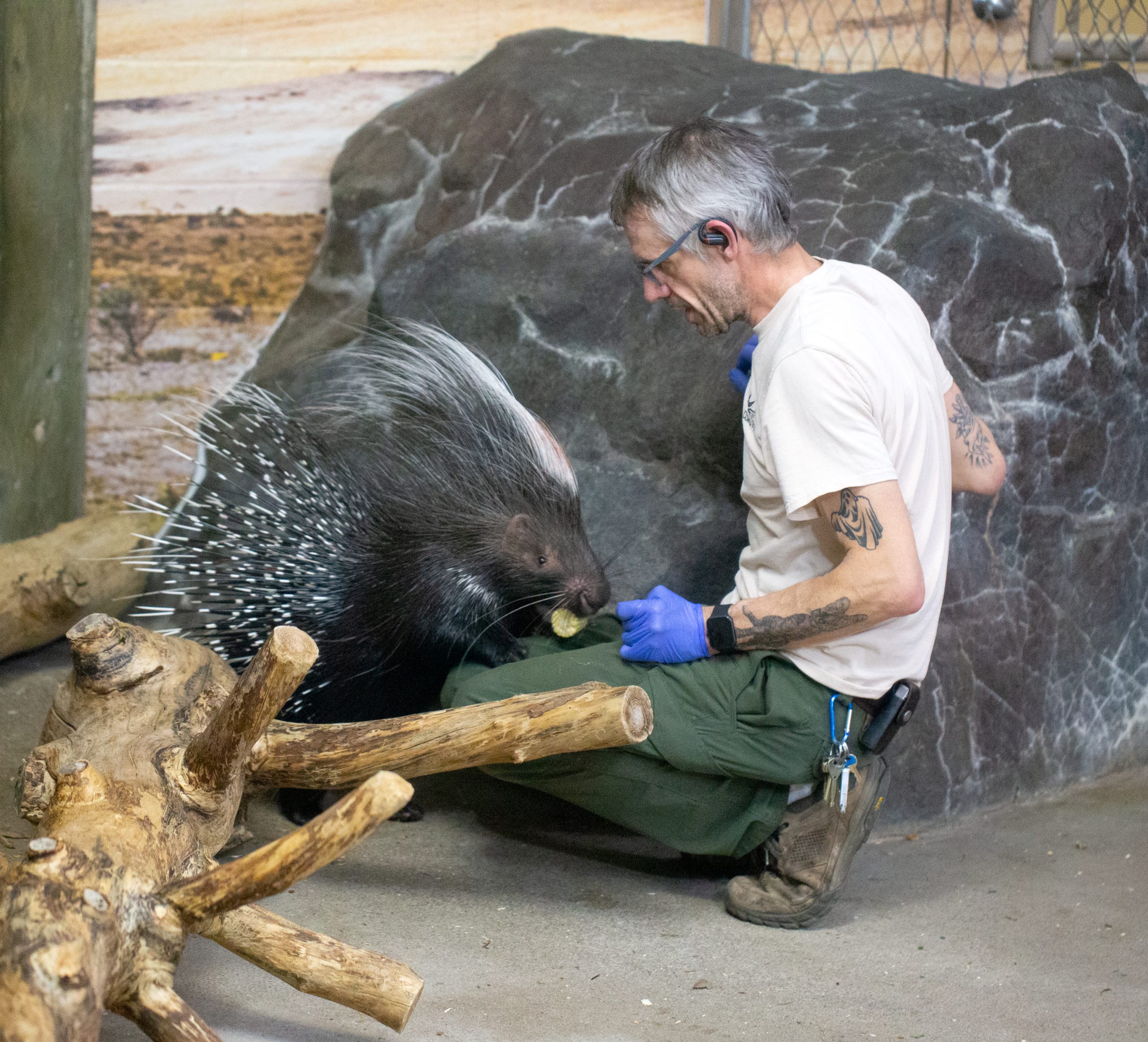
Porcupine Time | 2:00 p.m.
Como Zoo’s prickliest new arrivals, Russet and Copper, are the focus of this mid-day program, where you can learn all about the African crested porcupine.
-
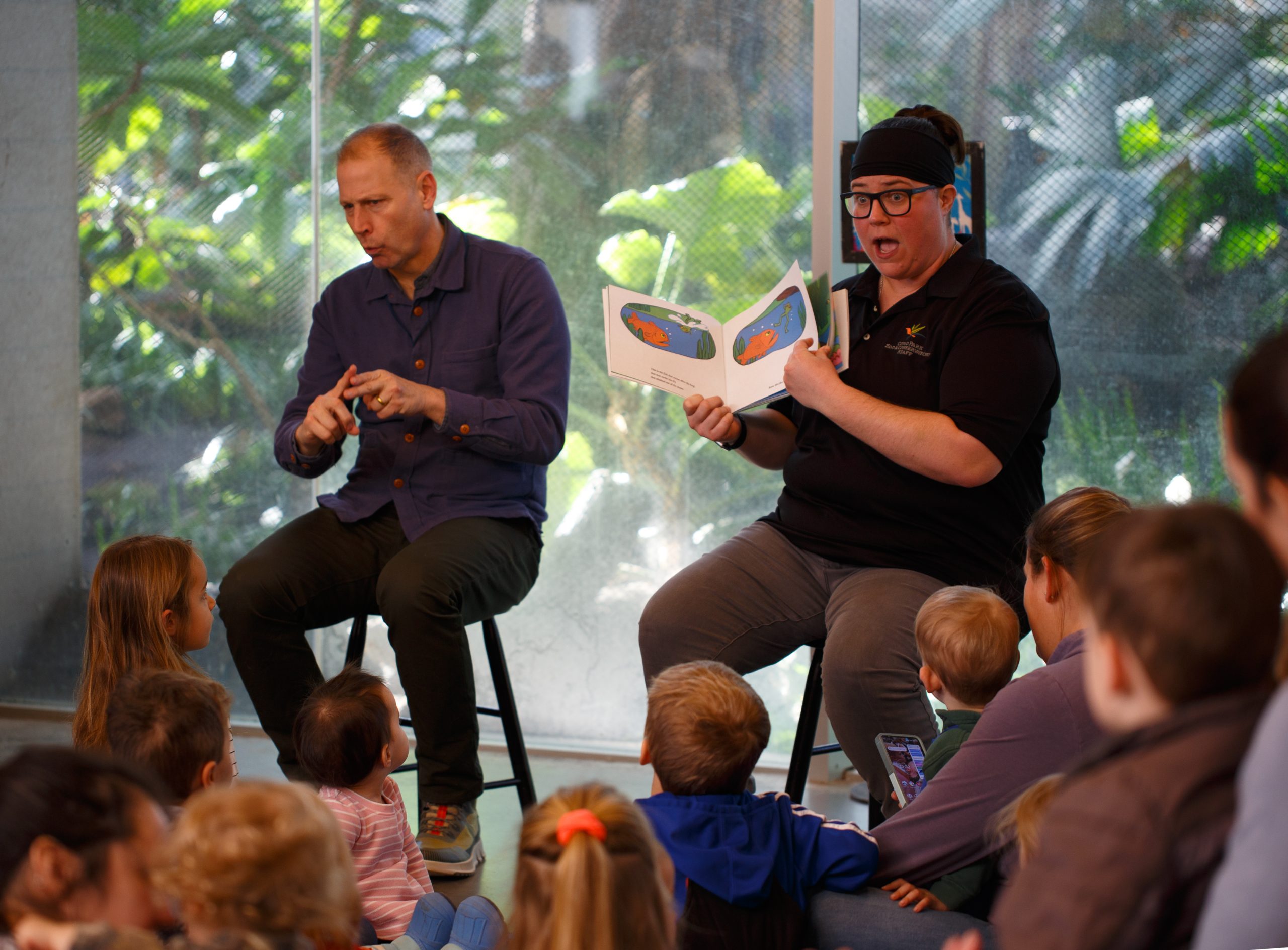
Story Time | 3:00 p.m.
Take a break in Como’s Visitor Center to listen to a nature-themed story perfect for preschoolers and other young learners.
-
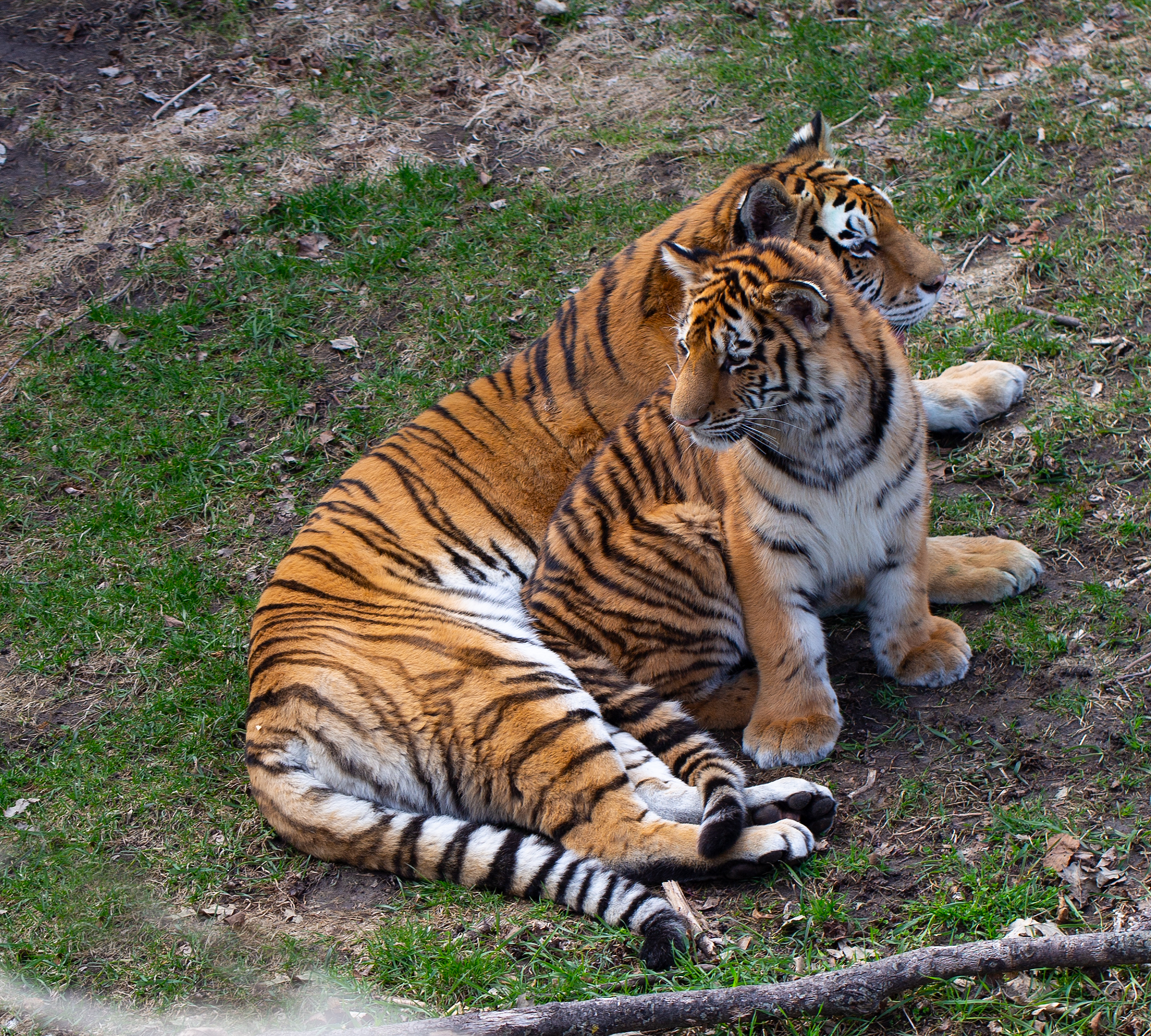
Tiger Talk | 3:30 p.m.
Tiger mom Bernadette and her twin cubs Maks and Marisa are the focus for this daily conversation, all about the care and feeding of Como’s large cats.
-
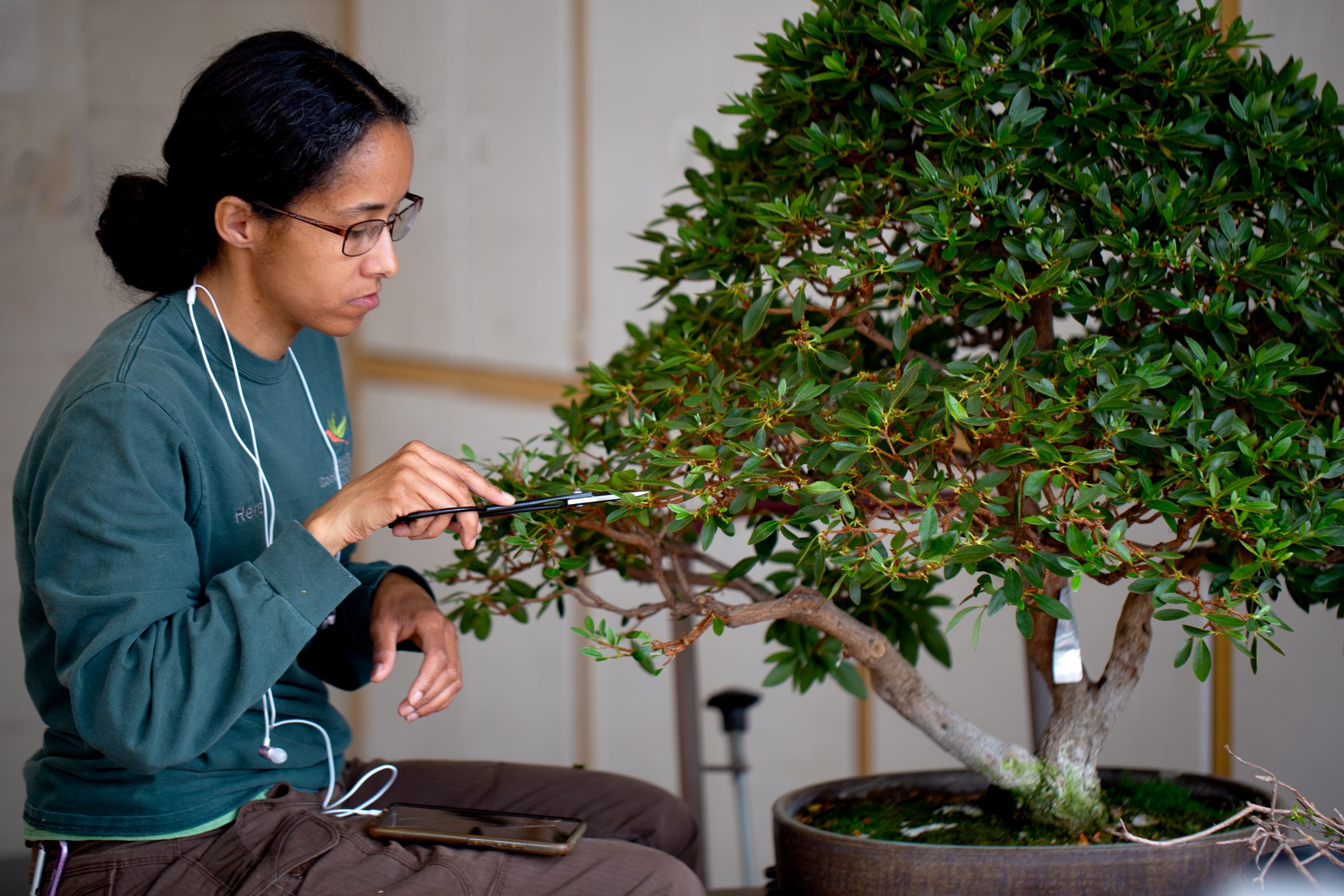
The Art of Bonsai | 4:00 p.m.
With one of the best collections of bonsai for public display in the Midwest, this daily program gives visitors the chance to learn more about the amazing trees in Como’s collection, and the history and philosophy of this ancient art form.
-
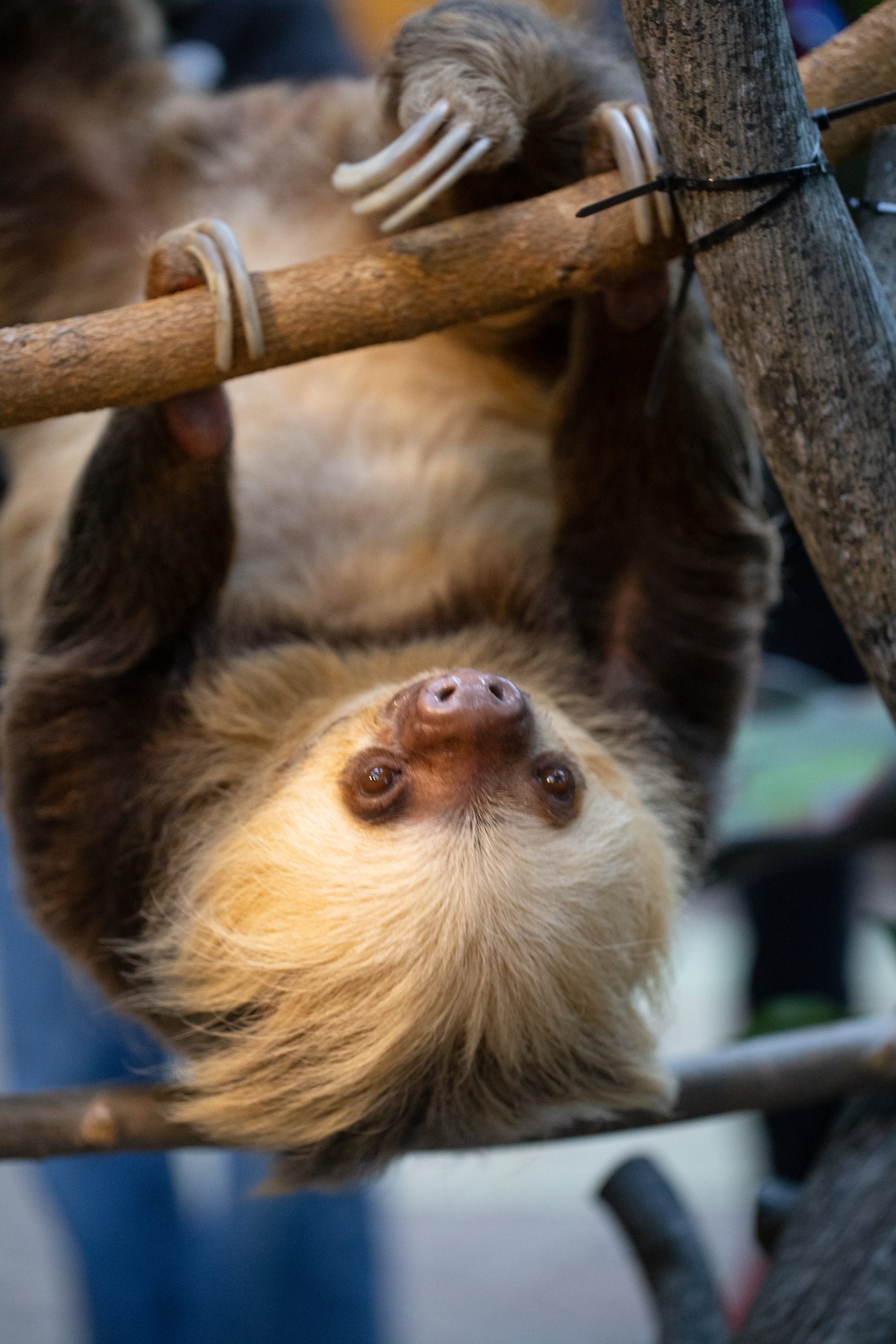
Chloe the Sloth Chat | 5:15 p.m.
Say goodnight to Chloe the sloth in Tropical Encounters, as she climbs down from her tree and into the arms of a Como keeper for the evening.
Special Programs
-
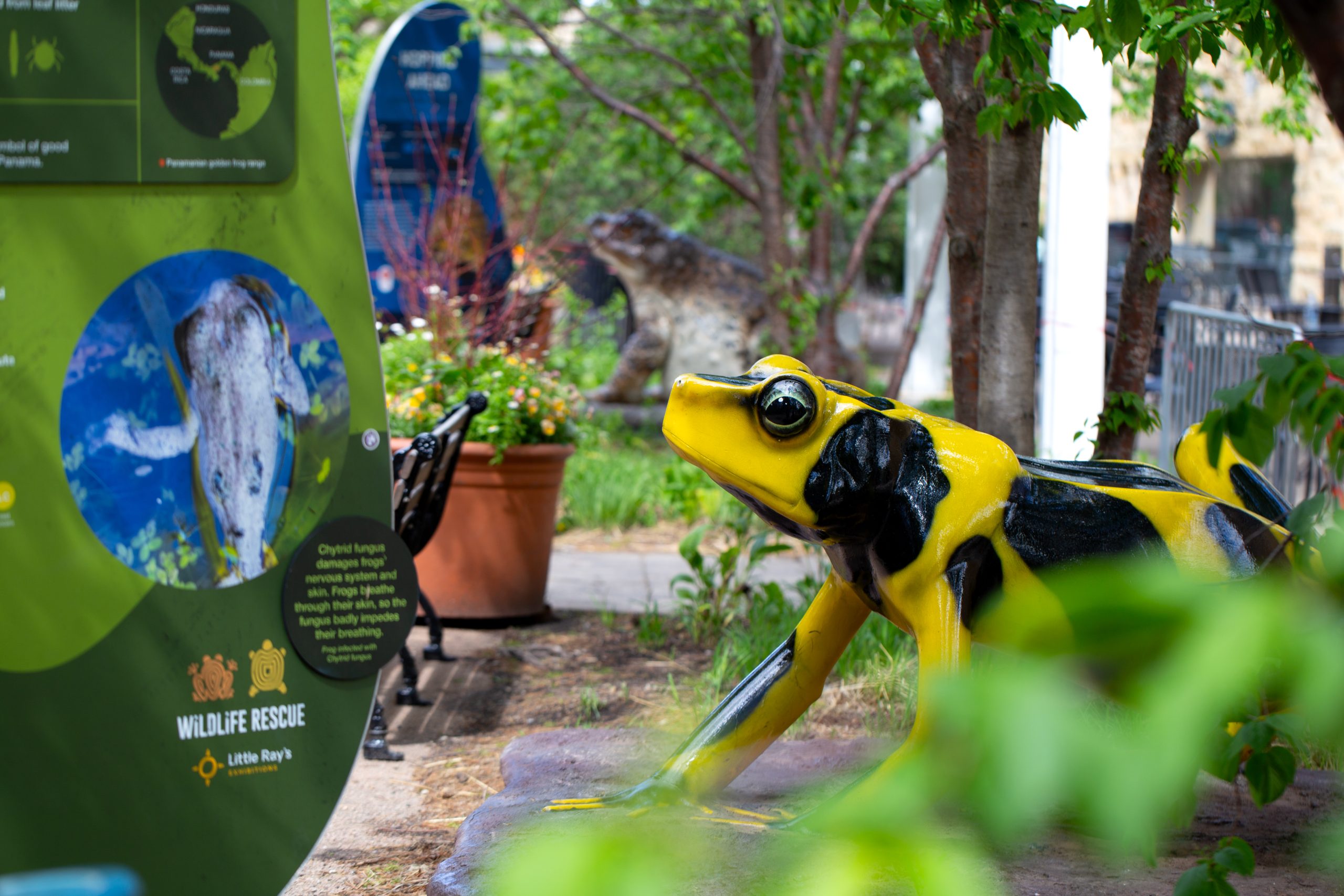
Wildlife Rescue: Tales of Conservation
Como’s latest free seasonal exhibit features 12 totally climbable animal sculptures from the black rhino to the Burmese star tortoise, highlighting endangered species that are now thriving in the wild thanks to committed acts of conservation.
-

Groovin’ in the Garden | Wednesdays from 6:00 p.m. to 8:00 p.m.
Put on your dancing shoes and pack a picnic for the Twin Cities’ favorite free summer concert series. Set against the beautiful backdrop of the Marjorie McNeely Conservatory, this outdoor concert series is fun for all ages, with favorite local acts, and fun activities for the kids. Mark your calendar for these upcoming events:
June 11 – Innocent Reggae Band – Roots Reggae
June 18 – Maria & The Coins – Singer-Songwriter Driven Pop Hooks
June 25 – Flamin’ Oh’s – Minnesota Music Legends
July 2 – Leslie Rich & The Rocket Soul Choir – 3-piece Rock Band
July 9 – Salsa del Soul – High-Energy Latin Dance Music
July 16 – Jellyjacket – All-Star Minnesota Rock & Roll Band
July 23 – Favourite Girl – Female Powered Rock Band
July 30 – School of Rock – St. Paul & Plymouth House Bands -
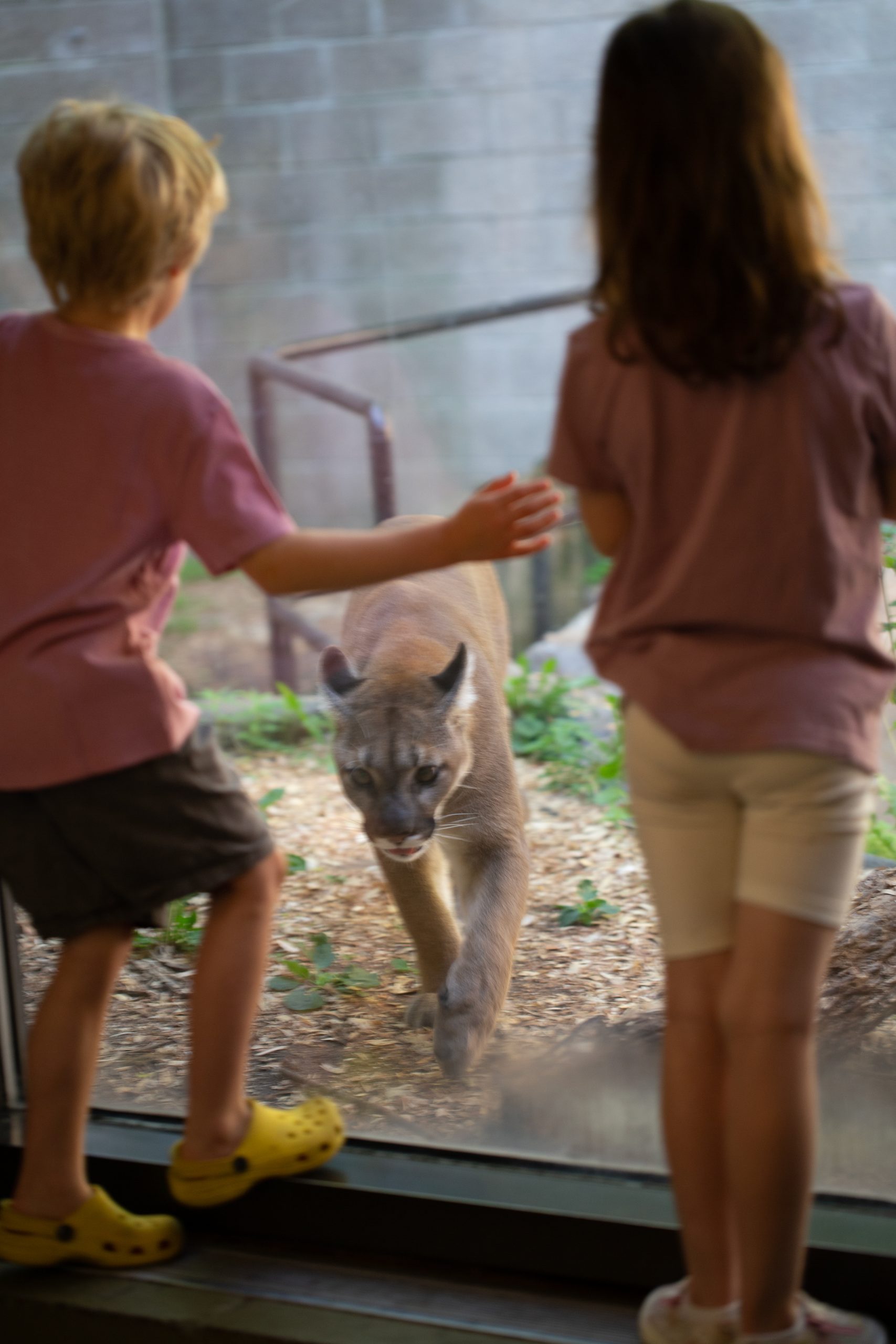
Autism-Friendly Early Entry
See Como Zoo without the crowds from 9 a.m. to 10 a.m. during these early access days:
June 7, June 18, July 12, July 23, August 9, August 20, September 13, September 21
-
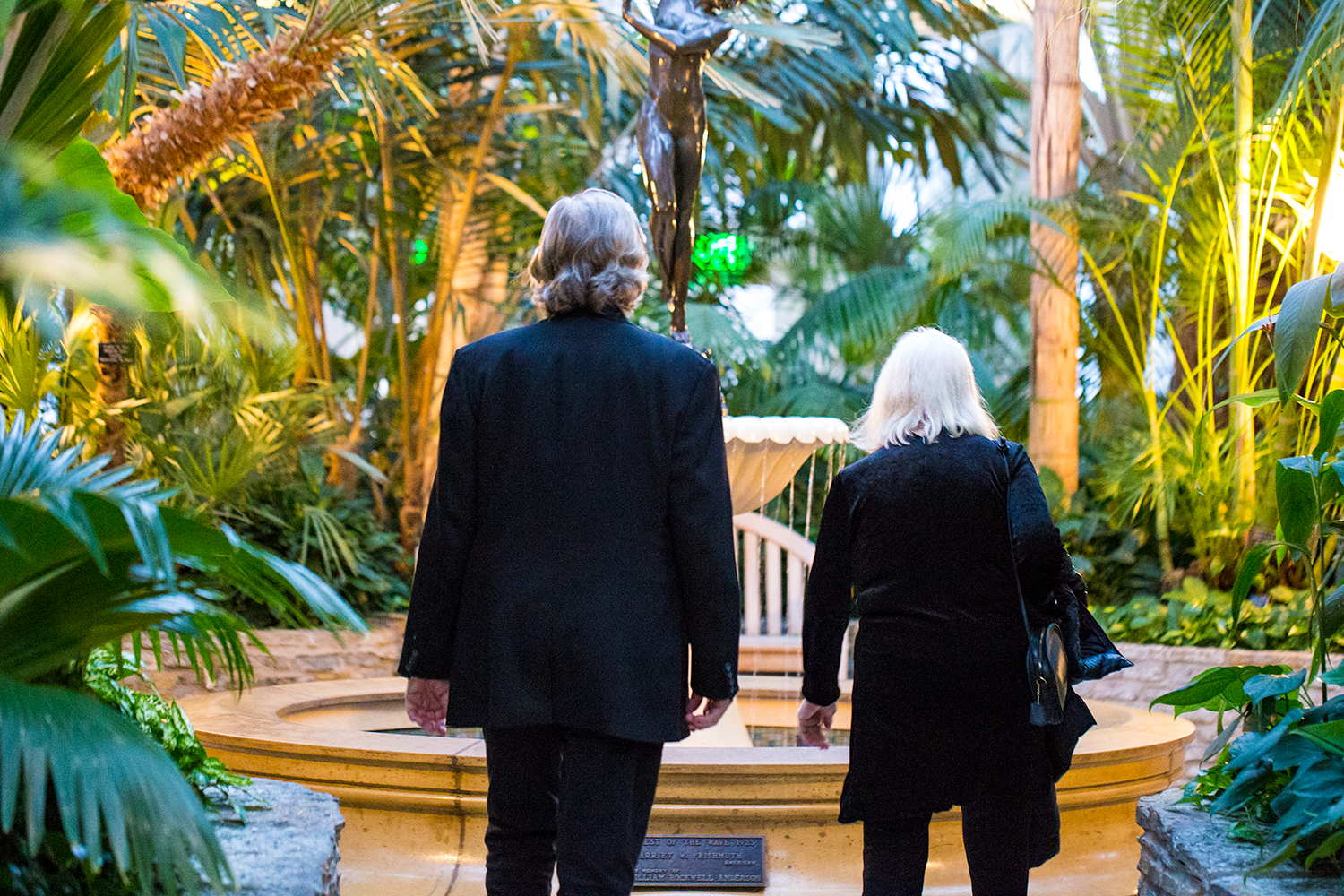
Senior Strolls
Take some time to smell the roses during these special entry times, set aside for seniors.
June 10 – 6:30 p.m.–8:00 p.m.
June 17 – 9:00 a.m.–10:00 a.m.
July 8 – 6:30 p.m.–8:00 p.m.
July 22 – 9:00 a.m.–10:00 a.m.
August 5 – 6:30 p.m.–8:00 p.m.
August 19 – 9:00 a.m.–10:00 a.m.
September 9 – 6:30 p.m.–8:00 p.m.
Conservation Champion Andrea Persson traveled to Sausalito’s Marine Mammal Center to learn the secrets of seal and sea lion care
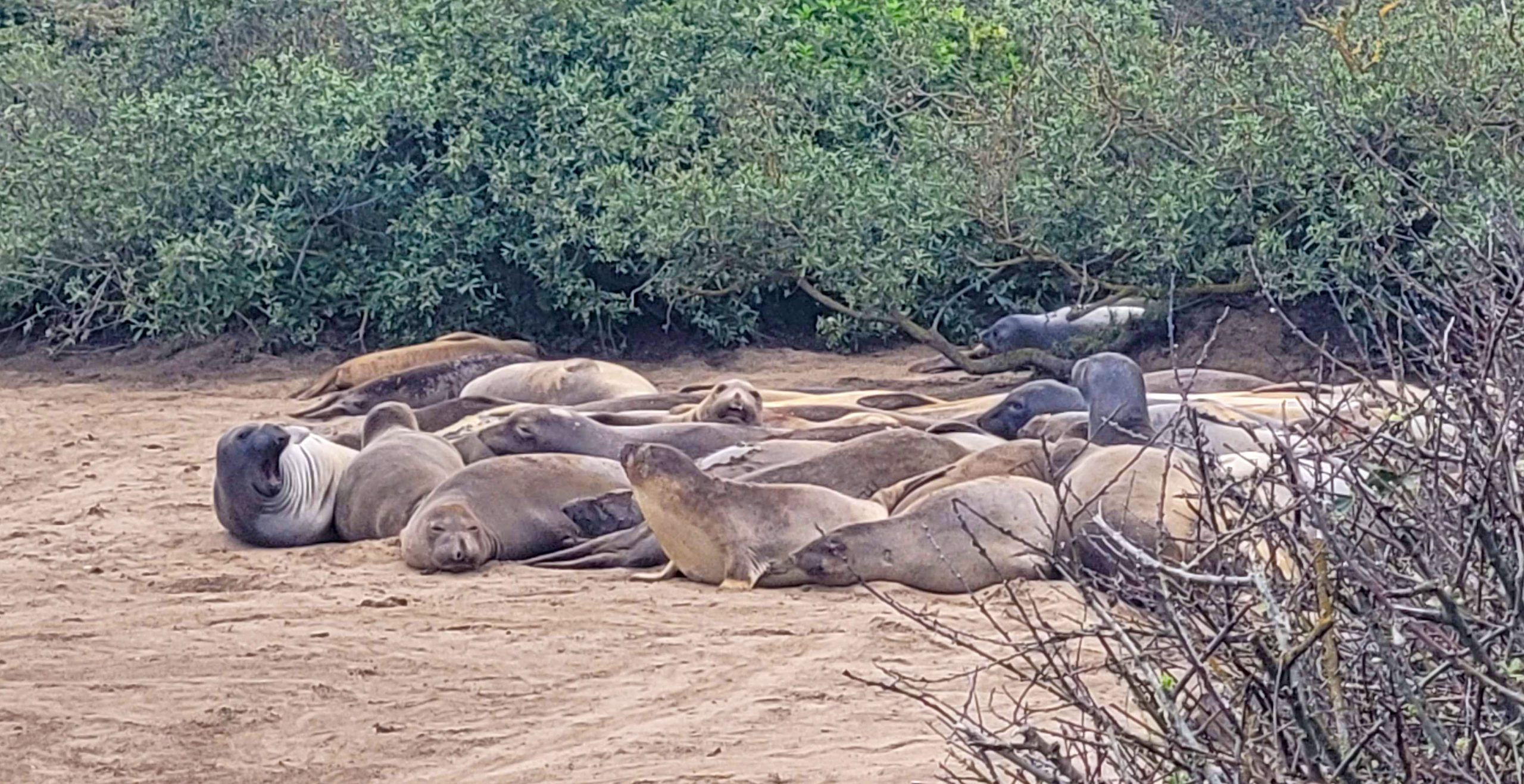
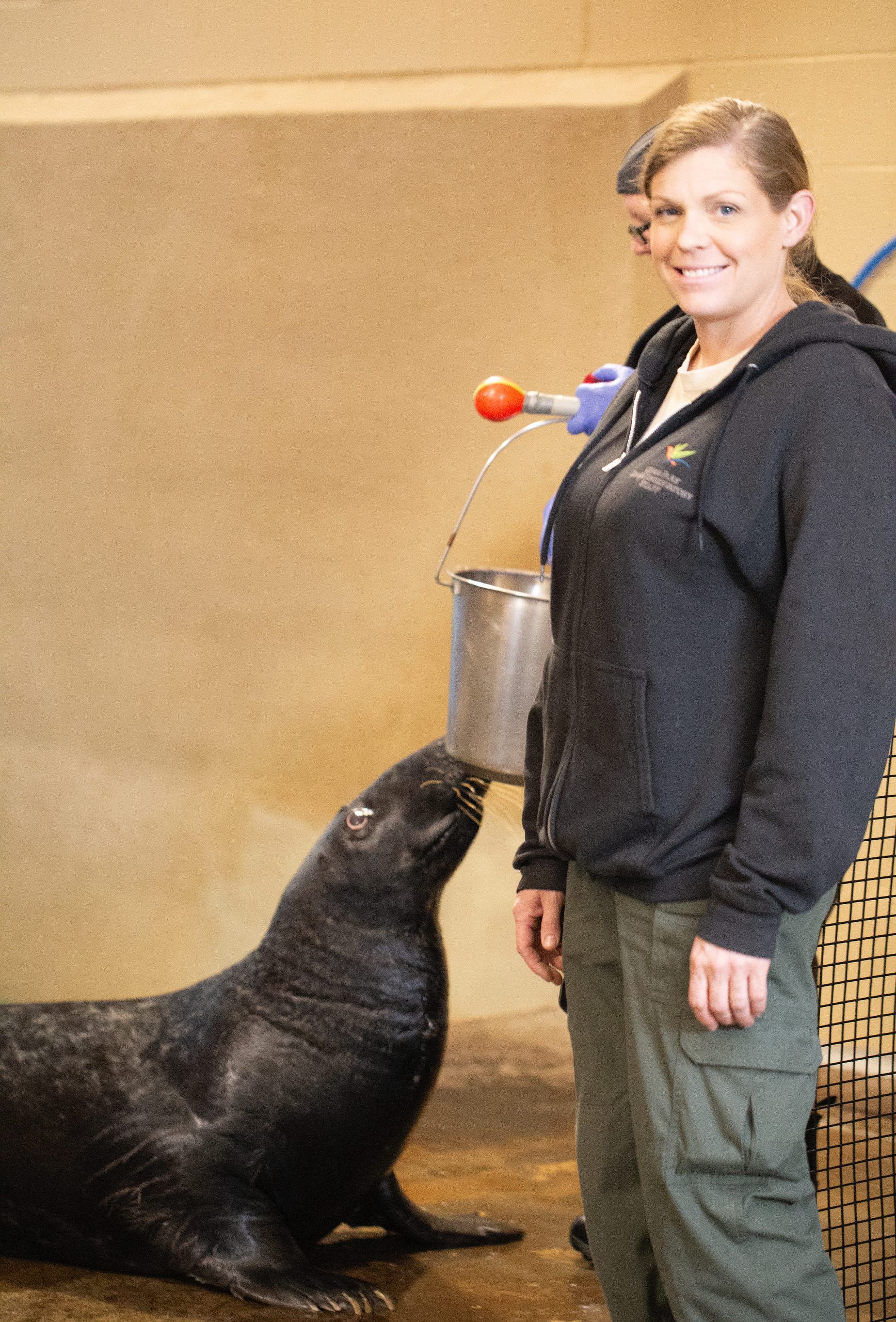
If you’ve been to a Blaze Sparky Show at Como Zoo, you know that sea lions like Sparky are capable of some amazing feats, from diving nearly 60 stories below the ocean’s surface, to holding their breath for up to 20 minutes at a time.
But some of the adaptations that work swimmingly in the sea can make veterinary care very complicated for seals and sea lions, particularly when it comes to anesthesia and other medical interventions. “They’re so trainable and willing to participate in their own health care that you can accomplish quite a lot when they’re awake,” says Como Zoo veterinary technician Andrea Persson. “But it can be much trickier when they’re sick and need to be immobilized, in part because of the dive response that allows them to conserve oxygen and also because we just don’t have to do it very often.”
That’s why Persson recently traveled to Sausalito, California, to attend an intensive veterinary training program at the Marine Mammal Center, the largest marine mammal teaching hospital in the country. Made possible by a grant from Como Friends’ Conservation Champions program, the five-day program allowed Persson to support the Center’s work, rehabilitating stranded seals and sea lions, while learning veterinary tips and tricks from experts who provide daily care to more than 80 elephant seals, harbor seals, and sea lions.
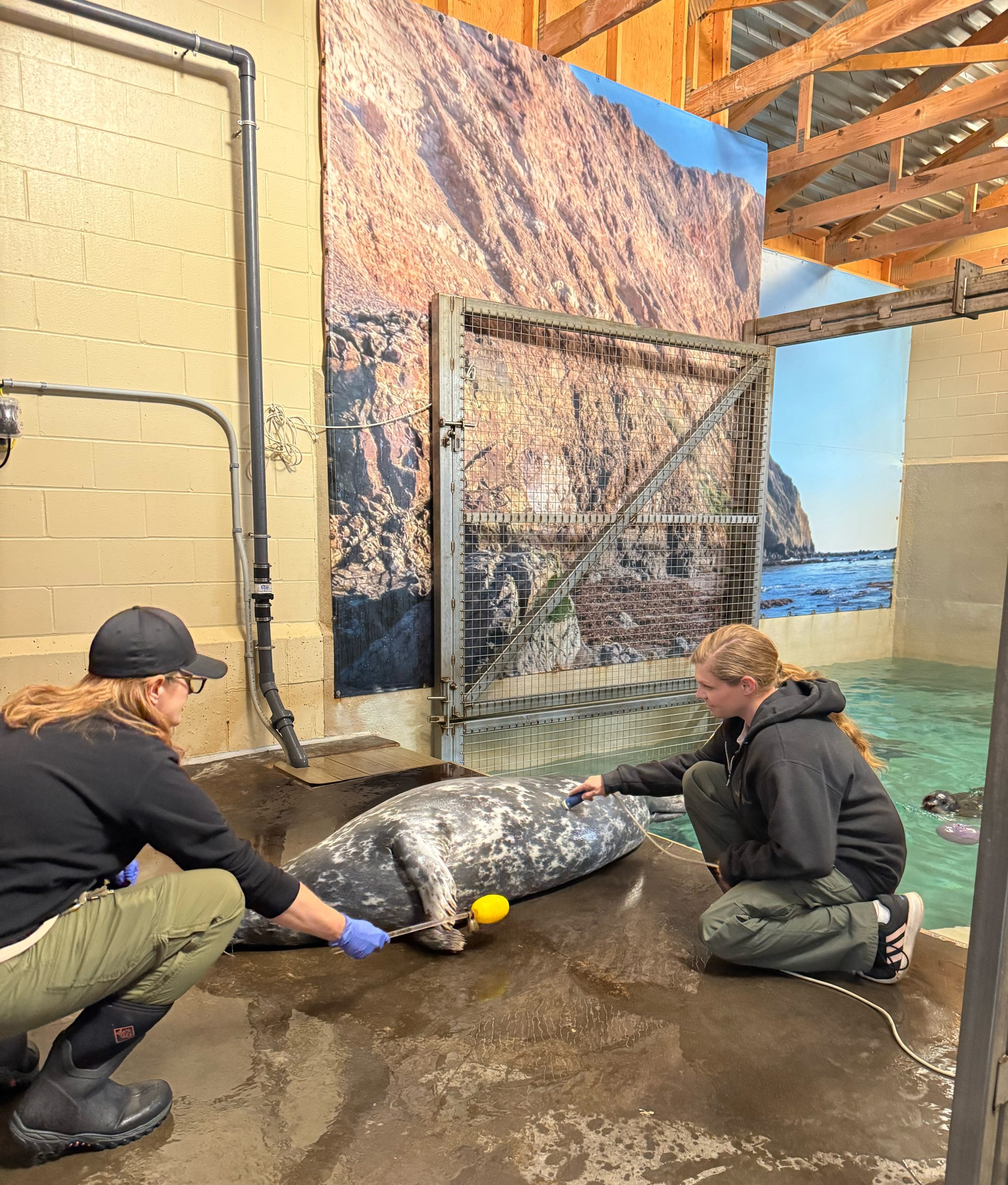
“Part of their mission is to expand the number of veterinary professionals that are equipped to deal with seals and sea lions, and it was a great opportunity for me to get concentrated hands-on experience,” says Persson, who cares for hundreds of different species at Como Zoo as part of her work with Como’s new on-site veterinary team. “One of my main objectives was to get good at collecting blood, because it’s one of the most important diagnostic things we can do with an animal, but it’s probably something I’ve done less than 10 times on a seal in my 20-year career.”
Drawing blood from a seal requires making a puncture near the animal’s spine. “One of my main objectives was to become proficient in blood collection. Blood samples are very important in providing information on the health of the animals we care for and with our relatively small population of seals at the zoo I had limited opportunities to refine my venipuncture techniques. It was great to be able to collect blood on multiple animals each day while I was at the MMC and I am now very confident in my ability to collect blood from our animals at the zoo.”
Since 1975, the Marine Mammal Center has rescued more than 26,000 marine animals along 600 miles of California coastline and in Hawai’i, typically answering more than 10,000 distress calls about sick, injured, or entangled marine mammals every year. During Persson’s stay in April, the Center was providing safe harbor to dozens of orphaned elephant seal pups, which are born at about 75 pounds and weigh nearly 300 pounds just a month later when they’re fully weaned from their mothers. In spite of their impressive size, young seals can often be separated prematurely when strong storms wash them off of beaches before they’ve learned how to survive on their own. Climate change makes the problem worse, as rising sea level and storm surges are more likely to sweep mothers and pups away from each other.
Distressed elephant seal pups are routinely rehabilitated at the Marine Mammal Center, but before they can be returned to the ocean, they need to be taught how to eat an adult diet of fish, squid, krill, and algae. “But you have to do it in such a way that you’re not habituating them to people,” says Persson. “It’s very difficult to get them to eat, because if they get even a little bit of water in their mouth with the fish they don’t know what to do, and they start gagging.”
The time Persson spent with pinniped pups may soon come in handy thanks to a new breeding recommendation for Como Zoo’s Atlantic gray seals, Wally and Medusa. And getting the chance to see wild harbor seals and sea lions on the California coast gave her even more appreciation for the species. “I would say the whole experience was invaluable, and gave me so many ideas to bring back to Como Zoo to improve care for our animals,” says Persson. “I’m very grateful.”
Private contributions from people like you are critical to support conservation efforts at Como Zoo and in the wild. Thank you!
As studbook keeper for polar bears, Allison Jungheim preserves the health and genetics of North America’s most majestic species
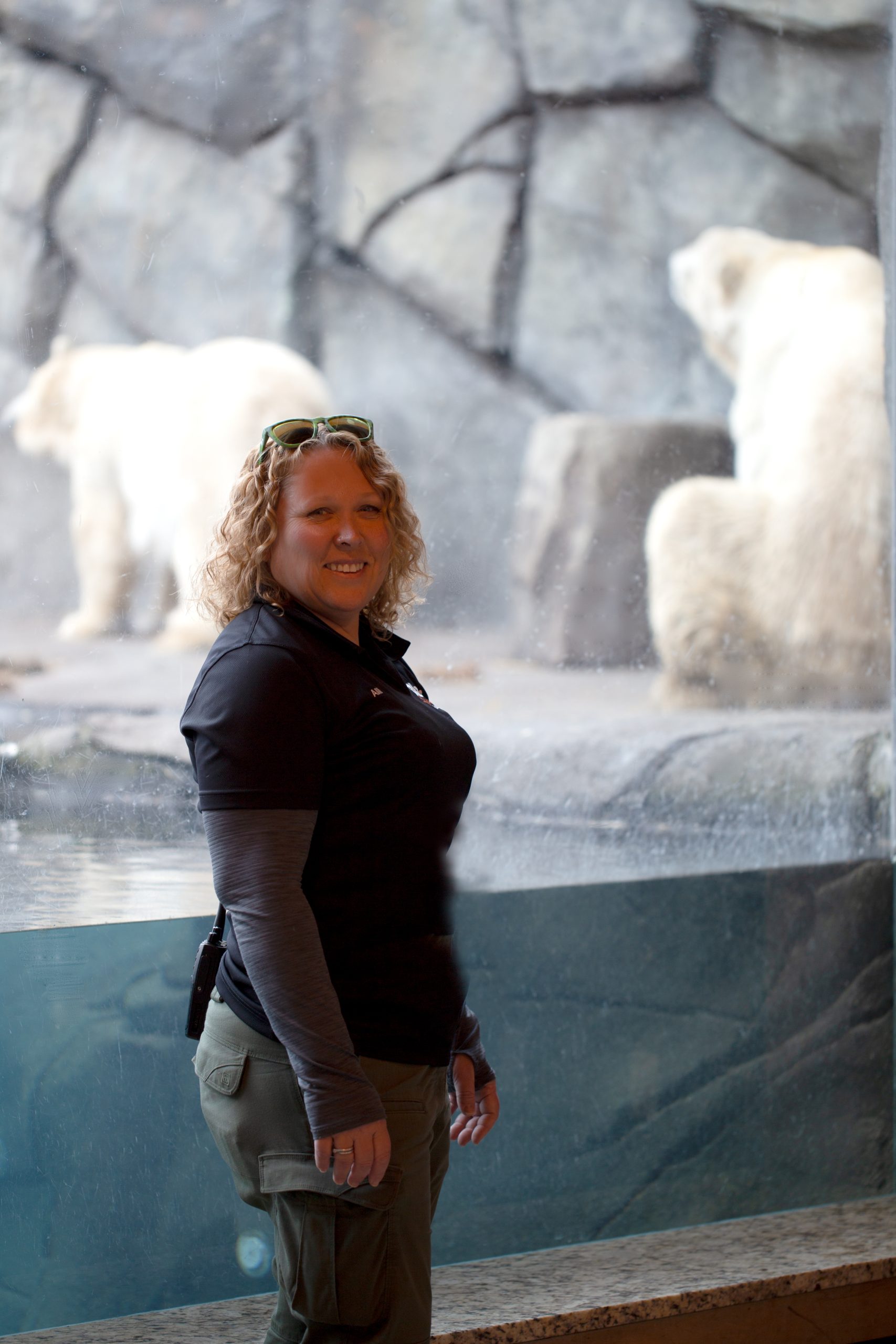
When she shares observations about the polar bears in her care, Senior Keeper Allison Jungheim can sound like she’s talking about her closest friends, bubbling about Nan’s bossy behavior, bragging about Kulu’s impressive weight gain (“At 940 pounds, we should probably stop calling him little Kulu”), and beaming at Neil, the mild-mannered male who first came to Como Zoo with his brother Buzz back in 2001. “He is my bear,” she says.
Jungheim brings the same enthusiasm to her role as studbook keeper for North America’s polar bears, responsible for tracking the genetic health and history of some 60 individuals living in partner zoos across Canada and the U.S. A project of the Bear Taxon Advisory Group through the Association of Zoos and Aquariums, the studbook is one of the ways that zoos work together to ensure that managed populations of polar bears are living their best lives.
Similar to your family’s own electronic medical records that allow for more coordinated health care, “keeping all of that data in one place is super important for the longevity of animals,” Jungheim says. “The studbook also gives me the ability to look back at historic animals and current animals, to see who’s related to whom, and who should breed with whom.”
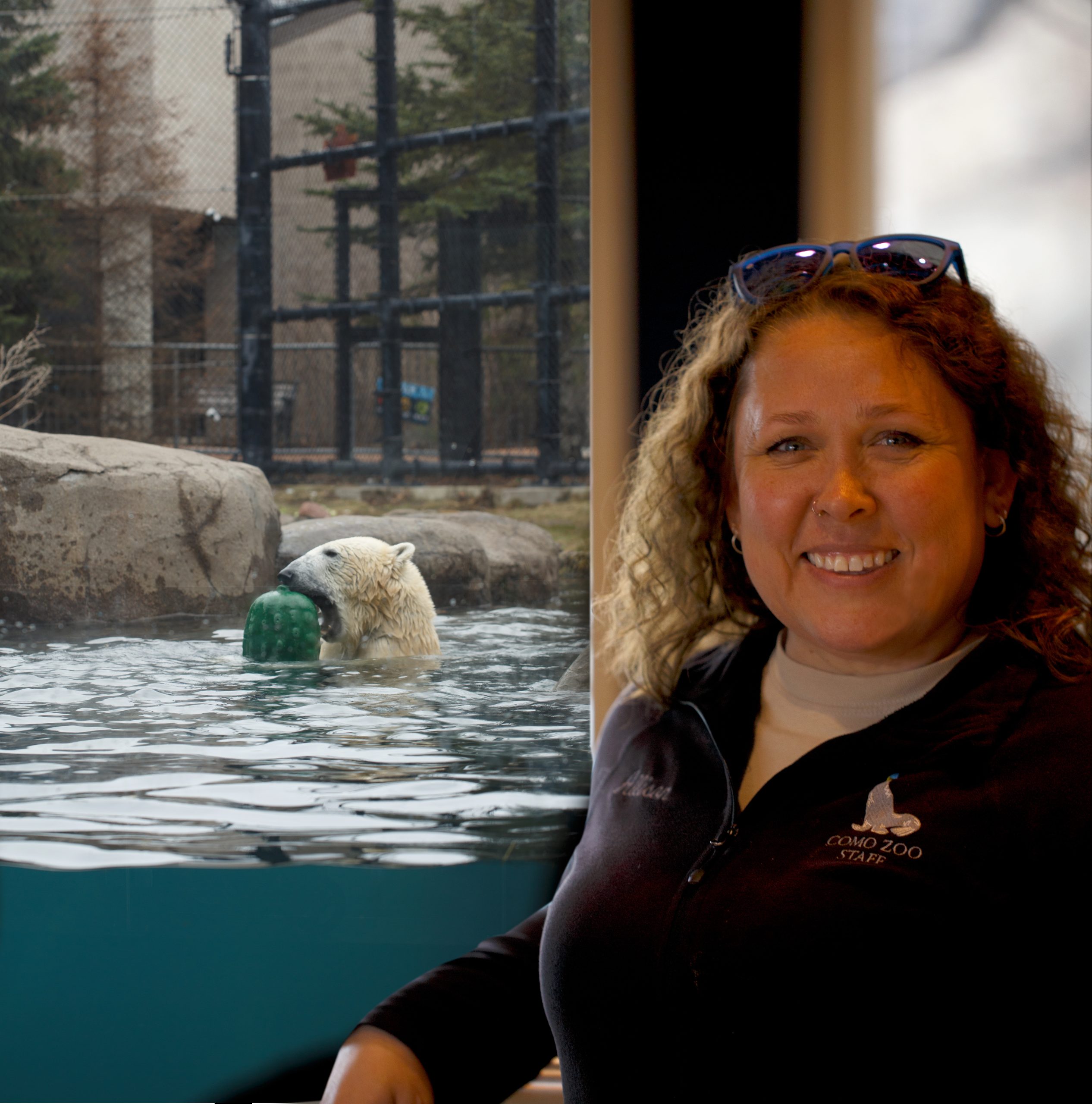
While Como Zoo’s keepers have earned national recognition for their success at reducing polar bear repetitive behaviors and developing tools for improving polar bear blood draws, Jungheim’s longtime leadership in polar bear preservation is a volunteer effort. “I don’t get any extra money or funding for managing the polar bear studbook, but it’s worth it to be part of the bigger picture, helping polar bears around the country, and not just here at Como.”
Polar bears require just the right conditions for successful breeding, both in zoos and in the wild. While polar bears will typically mate in early spring, they’re one of more than 130 animal species with delayed implantation, meaning that fertilized eggs don’t implant in the uterus until months later. The delay allows females to build up the fat reserves they’ll need to support themselves and their cubs during a long denning period. “But if the female doesn’t gain enough weight, or have good enough body condition, she may not implant that embryo or embryos at all,” explains Jungheim. The long dormancy period means that if one breeding pair is unsuccessful, zoos don’t have much time to establish a new pairing.
“That’s one reason why collaboration with other zoos is so important,” she says, noting that the polar bear community of keepers, managers, and veterinary staff have regular virtual meetings throughout the year, sharing breeding and denning news, and exploring new strategies. “One of the things we’re trying is to create more choice for mates by pairing more than just one male and one female,” she says. “Our thought is that by giving mate choice, it gives the male the chance to share the love with other females, and increases competition for breeding, and hopefully, increases success rates.”
With that strategy in mind, Como Zoo is getting ready to welcome a new female bear from a partner zoo, who might make a good breeding partner for Kulu. “With an aging population of bears, we’re trying to shake things up,” Jungheim says. If the pairing works, she may even have a couple of new names to add to the polar bear studbook.
Funding from Como Friends enabled Allison Jungheim to travel to attend an in-person polar bear conference, strengthening the network of connections zoos rely on to help bears live their best lives.
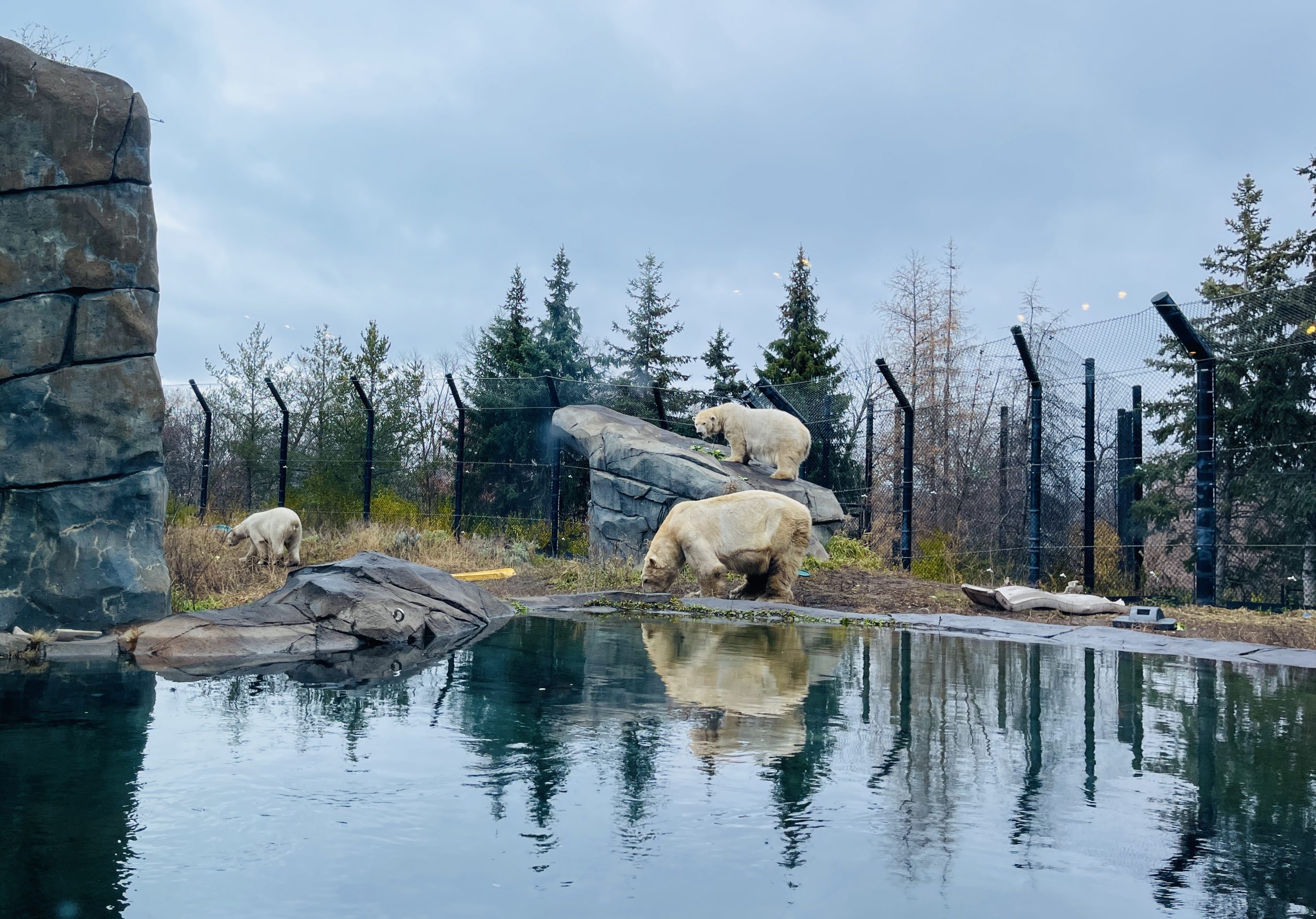
Celebrate Party for the Planet at Como on
April 26 and 27 | Presented by Xcel Energy
There’s no better place to celebrate Earth Day 2025 than Como Park Zoo & Conservatory, where our annual Party for the Planet is a two-day weekend celebration for visitors of all ages. Powered by our friends at Xcel Energy, this year’s Earth Day theme, “Our Power, Our Planet,” celebrates the movement toward renewable energy. With family-friendly activity stations, and splashy public programs like our Blaze Sparky Show, Party for the Planet is a great way to learn more about what you can do to protect our environment on Earth Day and every day.
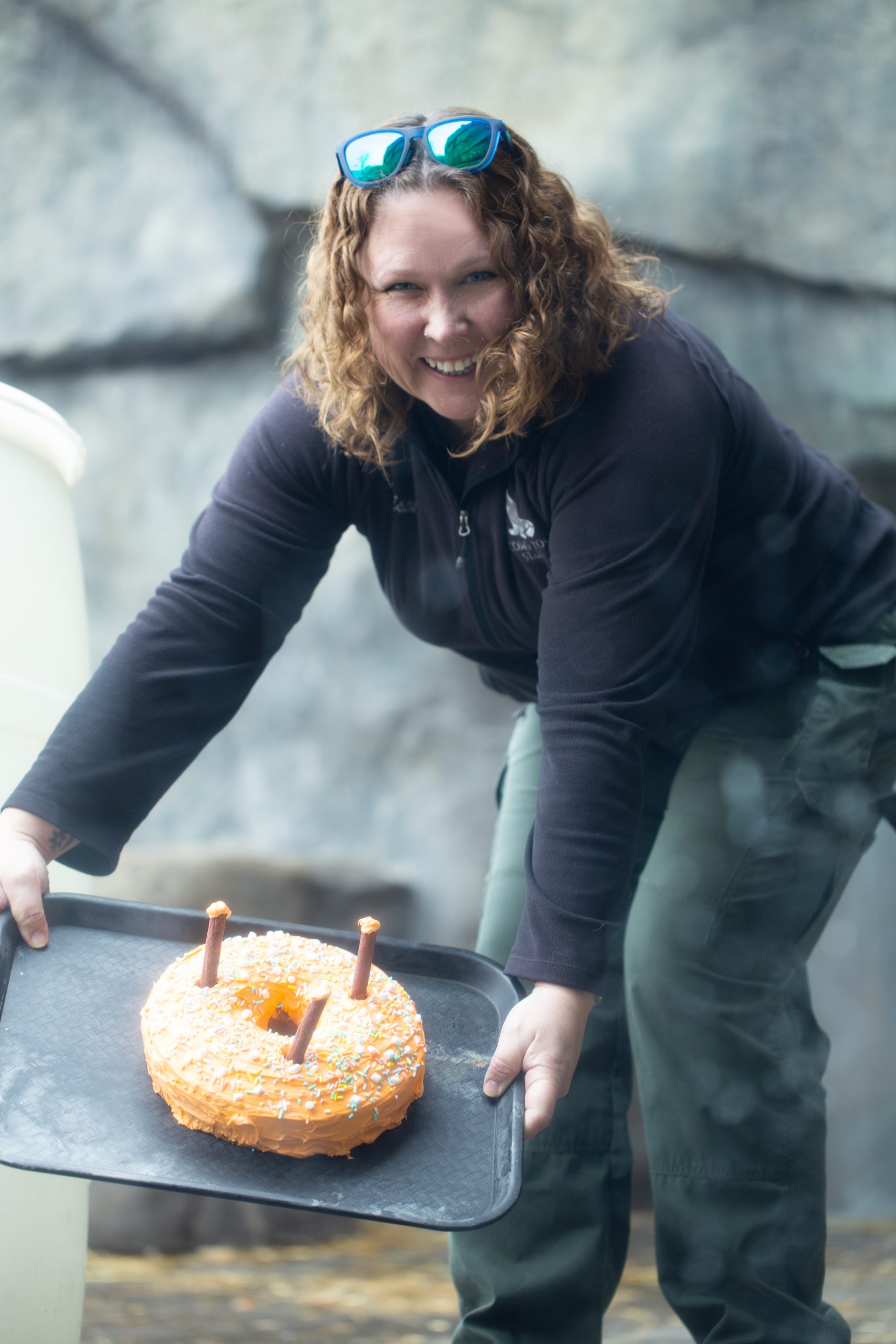
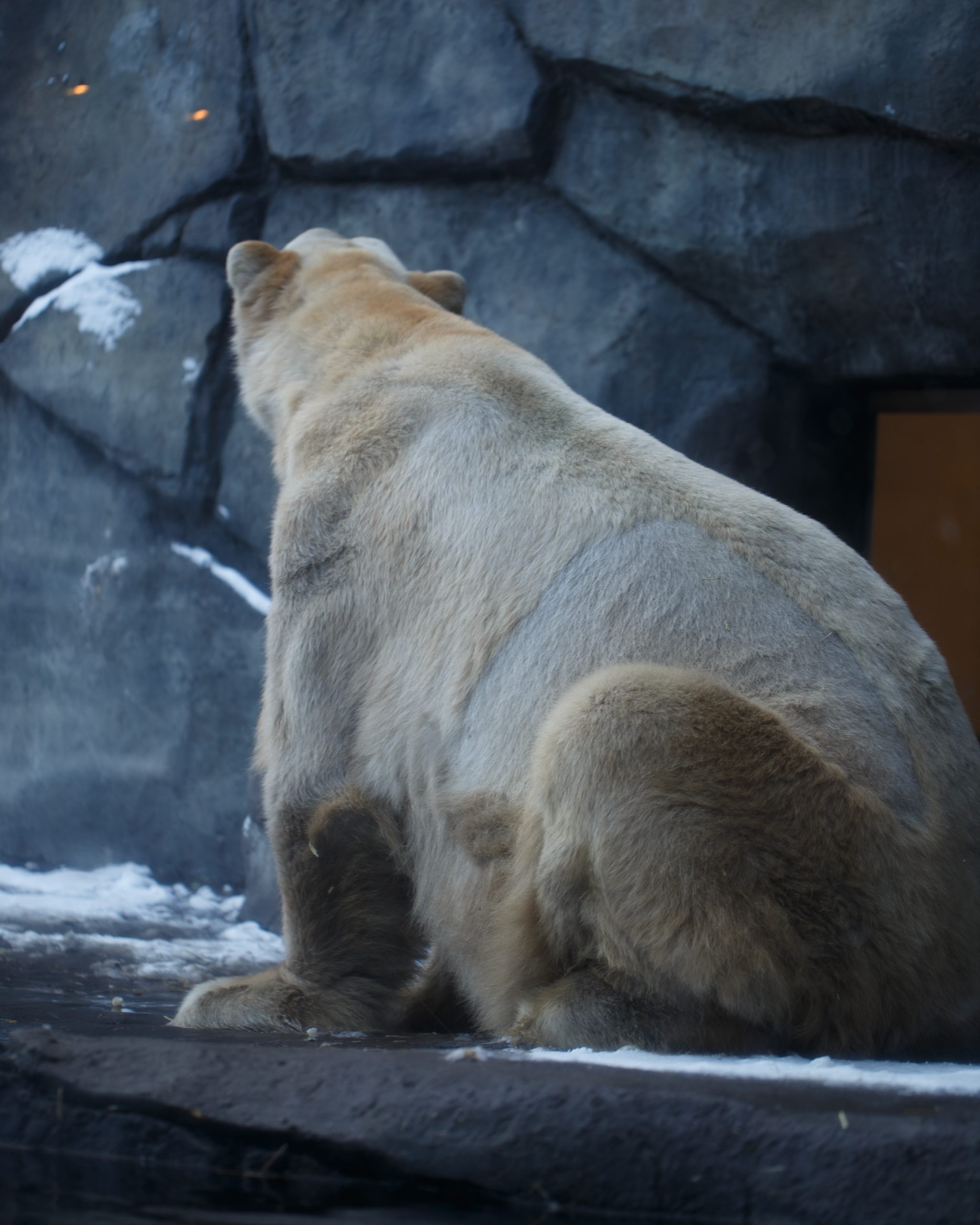
Como’s redesigned Residency Program is bringing the power of plants and animals to third graders across the state
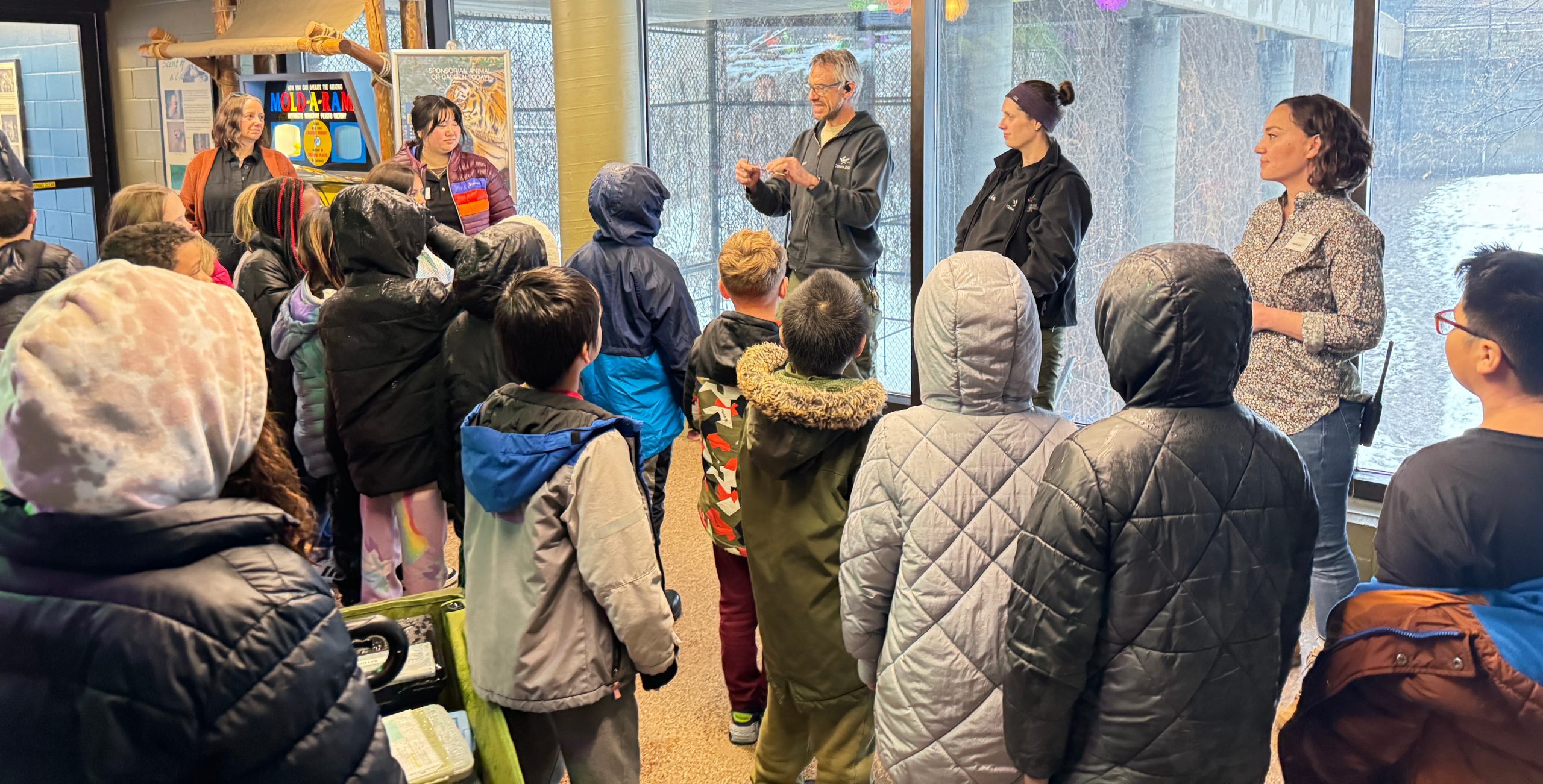
Residency Program students from Roseville’s Central Park Elementary School recently welcomed two new African crested porcupines to Como Zoo’s Large Cat Building by making artwork for their habitat. The porcupine pair were recently relocated to Como following the closure of SeaQuest in Roseville.
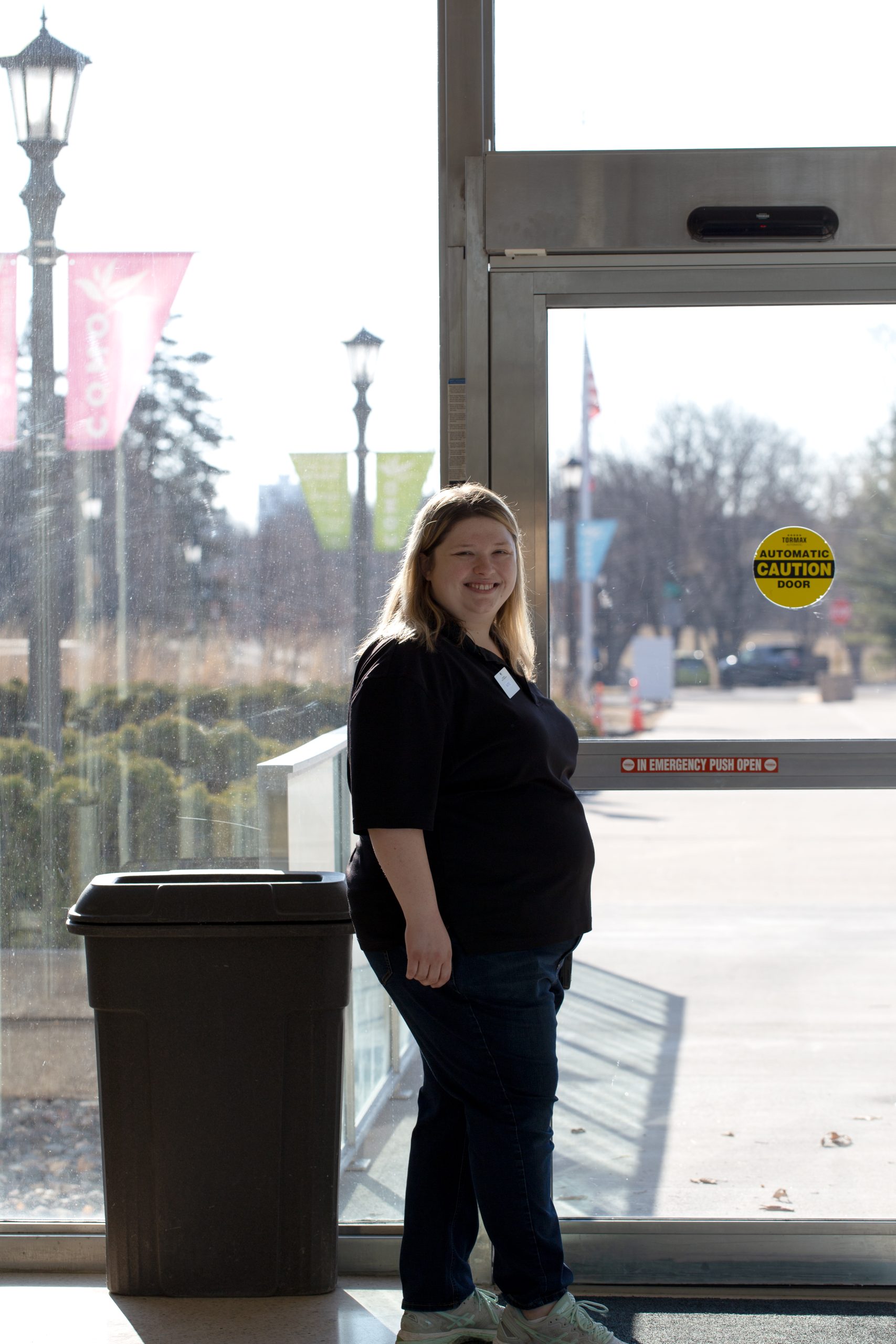
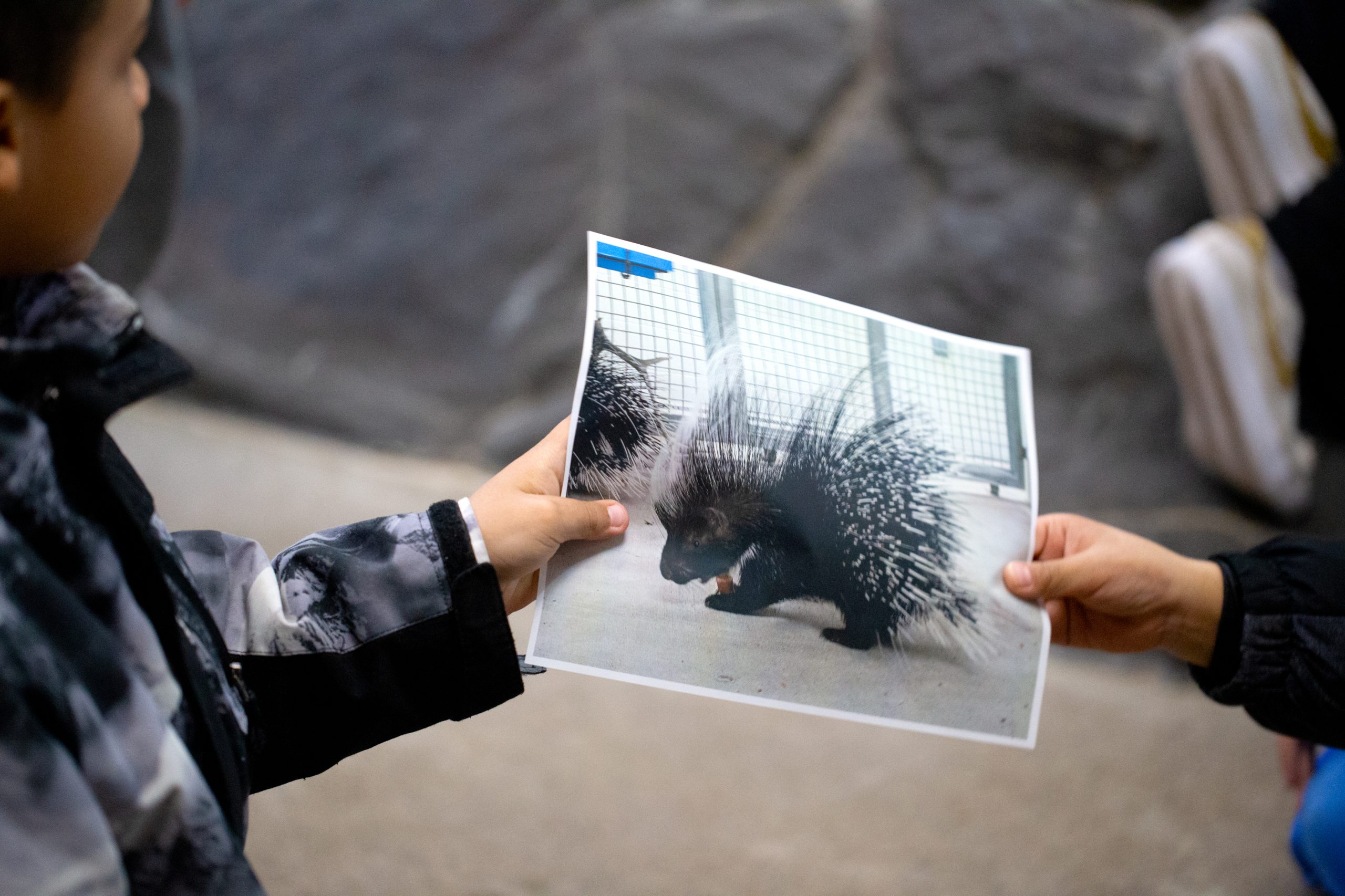
Melrose, Minnesota, is more than a 90-minute drive to Como Park Zoo and Conservatory—longer during rush hour—which makes a field trip to the Twin Cities out of the question for most classrooms.
But thanks to Como’s new and improved Residency Program, 25 third graders in Ms. Brown’s class at Melrose Area Elementary School recently got the chance to spend quality time with Katie Raeker, an educational specialist who knows nearly everything there is to know about Como’s plants and animals. During the course of four days in April, Raeker visited the class for nearly five hours every day, bringing live plants, biofacts, fun animal profile videos and boxes and boxes of art supplies to teach a program called Exploring Ecosystems, that compares the biomes of Minnesota to those of the Brazilian rainforest.
“What’s really fun about teaching kids in greater Minnesota is that they often have first-hand experience with the animals I often bring up in class,” says Raeker. “If I show them a pair of antlers, they know the difference between a deer and a moose. And if I ask ‘How many of you have seen a wolf?’ lots and lots of hands go up. Compared to the kids we teach in the Twin Cities, it leads to very different conversations.”
Taking Como’s education curriculum on the road is the latest iteration of Como’s Residency Program, an immersive conservation program offered free of charge to area schools and made possible by Minnesota’s Legacy Amendment. Several years ago, this popular program got its start by inviting classrooms around the Twin Cities to relocate to Como, using both Como Zoo and the Marjorie McNeely Conservatory as the backdrop for days of cross-disciplinary learning. Put on pause during the pandemic, the Residency Program resumed in January 2025, simultaneously offering on-site experiences for third grade classrooms around the Twin Cities, and off-site programs for third graders across the state.
In fact, the same day Raeker was teaching in Melrose, Residency Program Specialist Grace Coughlin was leading a group of third graders from Roseville’s Central Park Elementary into a new habitat in the Large Cat Building that is now home to two new porcupines. Large cat keepers Hans Jorgensen and Caitlin Allessi greeted the group, and invited them to decorate the glass enclosure with big rolls of craft paper and magic markers.
“So many of the teachers have been telling us how grateful they are for the opportunity to have an art component to the program,” says Residency Coordinator Madeline McCullough. “The other thing we’re hearing is that they really appreciate our multi-modal approach with our curriculum. There’s movement throughout the day, videos and slideshows and pictures, class discussions, and very tactile experiences with biofacts and plants. The curriculum makes them feel supported, and it works to reach many different types of learners.” Another strength of the program: McCullough, Coughlin, and Raeker are all former classroom teachers, skilled at shaping lesson plans to fit the needs of participating classrooms.
With a waiting list of schools eager to sign up, Como has prioritized Title I classrooms where a significant portion of students are from disadvantaged backgrounds, or are eligible for free or reduced-price lunch. In addition to the free classroom experience, Como reimburses local schools for the full cost of bus transportation to campus, ensuring that cost is no barrier to participation. While nearly half of the programs happen right on Como’s campus, for many participating students, it’s their very first trip to Como Park Zoo and Conservatory. “Even though Como is in the backyard for a lot of our participating schools, a lot of kiddos have never been to a zoo before,” says Coughlin. “It’s really fun to show them around and to see their faces the first time they see a giraffe, or watch a sea lion swimming in the water.”
The focus on third graders helps area schools meet state science standards, while connecting with kids in the sweet spot for conservation education. “It’s the perfect age for this program, because they’ve been in school enough years that they have the basic skills down, and they’re a little bit more independent so they can be critical thinkers and sponges for information,” says Raeker.
“Also third graders have no filter, and they have so many interesting questions,” says Coughlin. “Kids are always excited to find out that Como is free and open every day. And a lot of them really want to know when they can come back with their parents.”
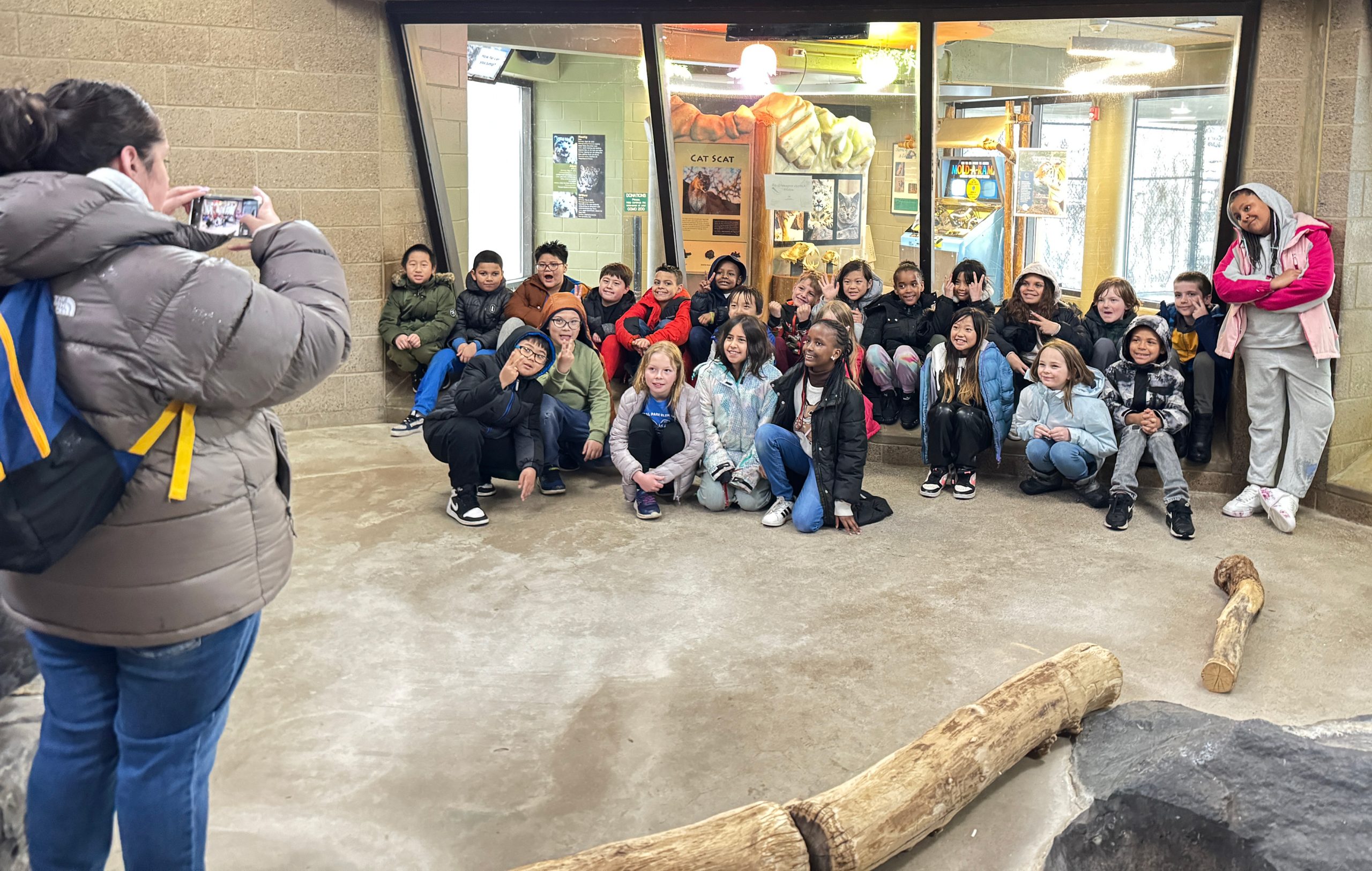
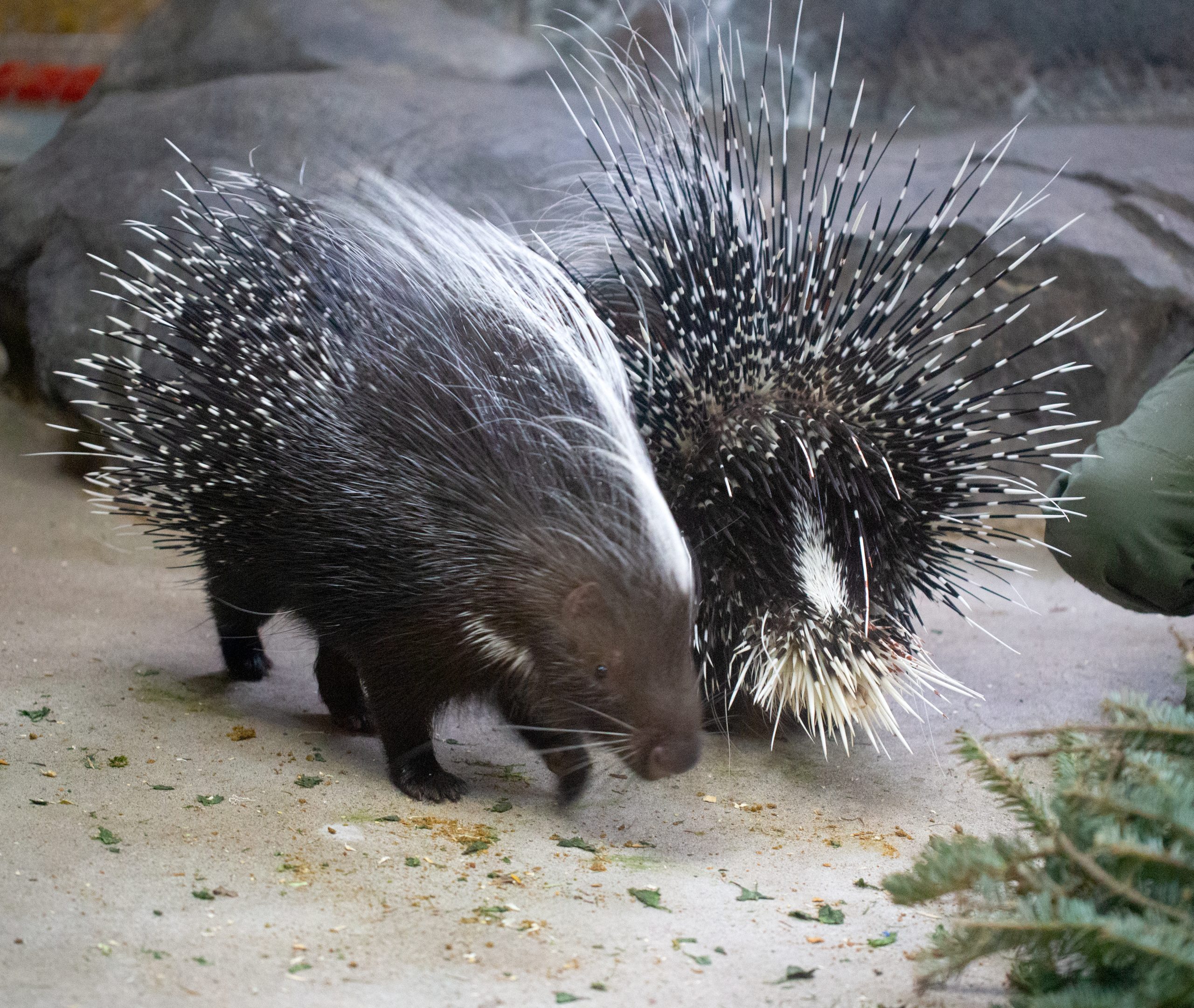
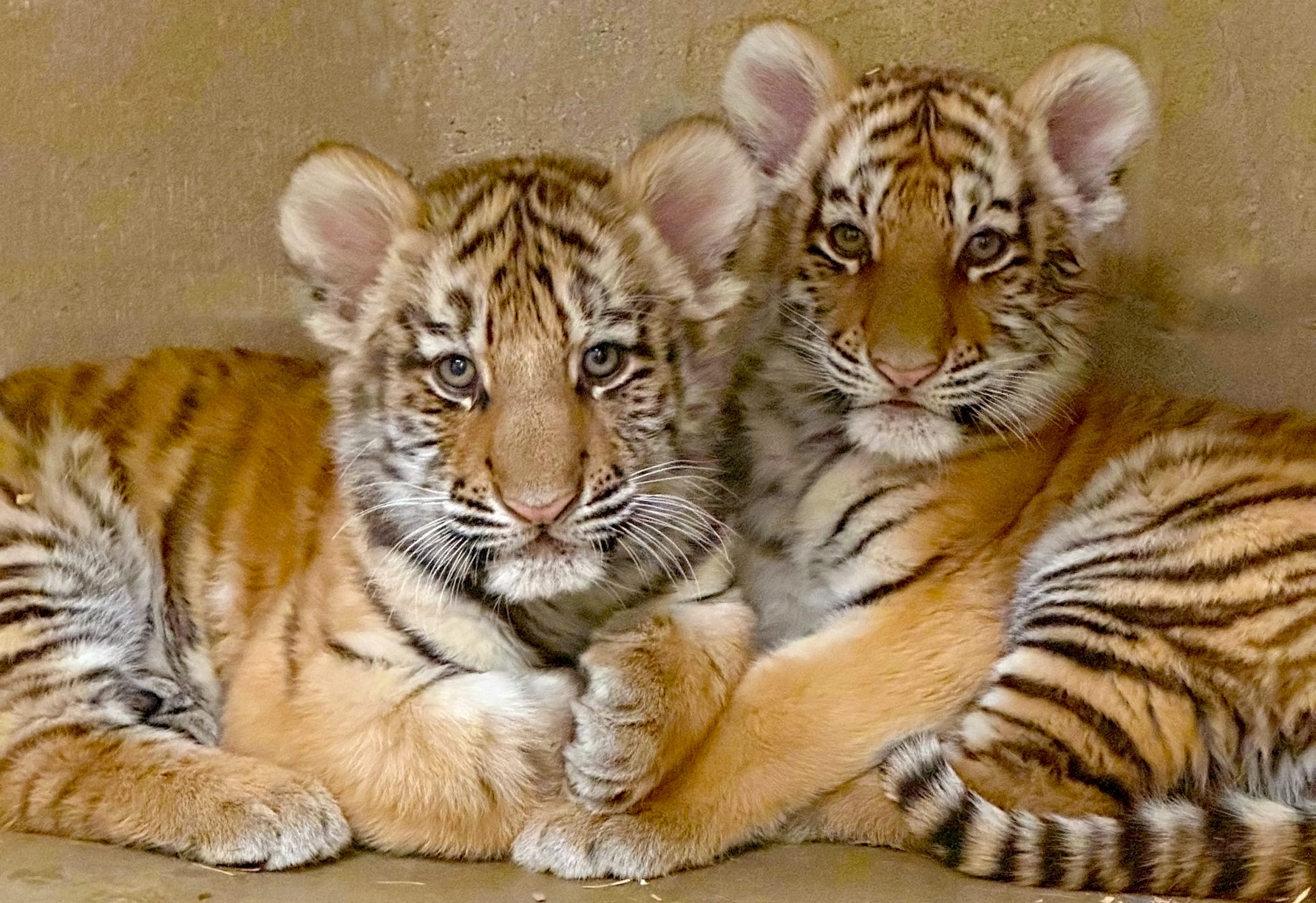
This winter, get to know a few of Como Zoo’s newest arrivals
Como long-time volunteers and supporters suggested the names for the two cubs—Maks (pronounced Max) and Marisa, both associated with strength and tenacity. The name Marisa is also a nod to Marisa Paulat, a retired Como cat keeper who was instrumental in the care of large cats during her 43 years at the zoo.
Marisa and Maks
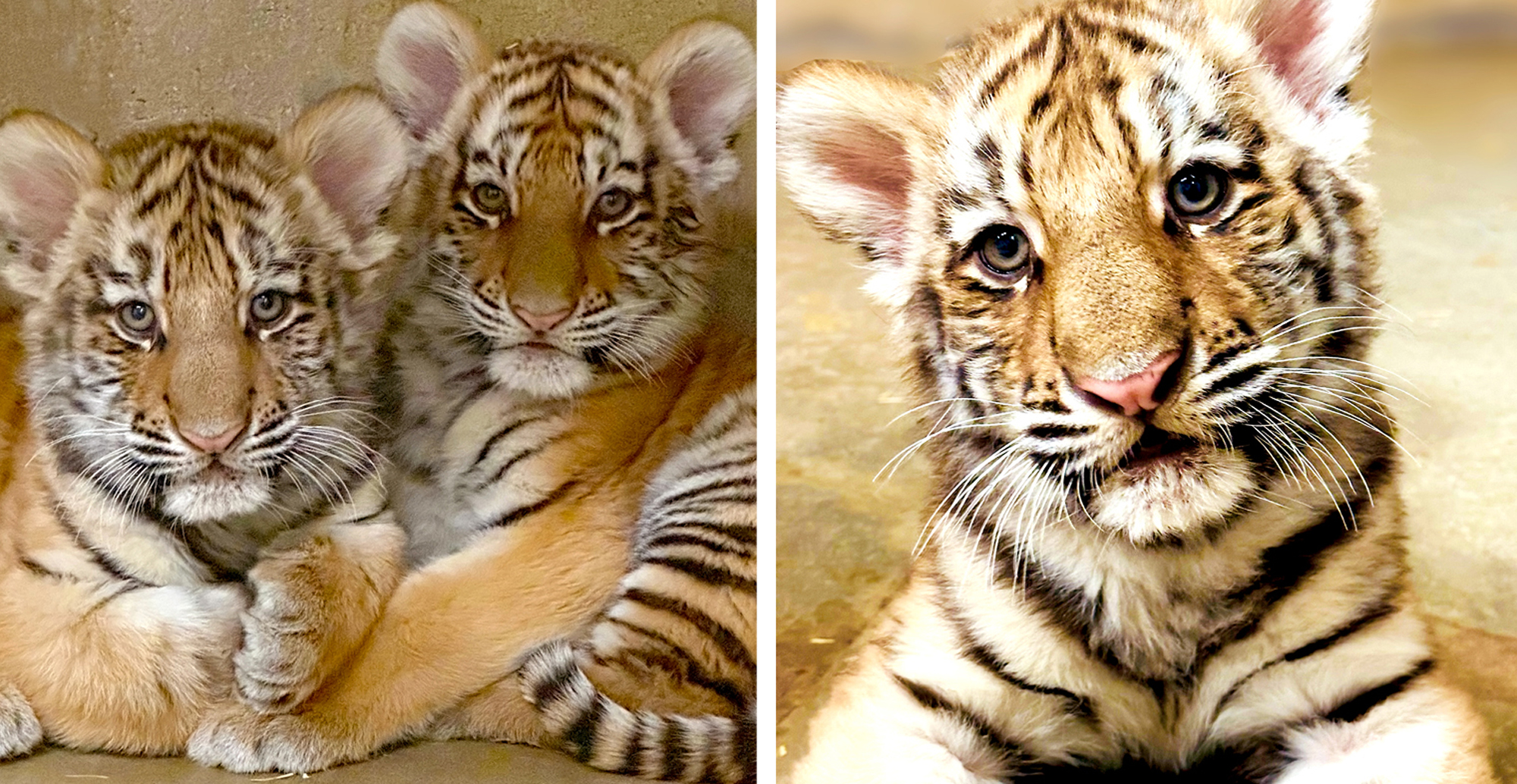
-
Amur Tigers
Marisa and Maks | With a diet composed entirely of other animals, tigers are one of the world’s most ferocious apex predators. But for new cubs Marisa and Maks, born at Como Zoo on August 29, it’s going to take a little more time before they fully embrace their places at the top of the food chain.
“You might think as large carnivores that they would just come to whoever had food but that’s not the case,” says Como Zoo senior keeper Jill Erzar. “Cats are very observant, so when they noticed their mom was a little uneasy seeing us at the beginning, they hung back and took it all in. But now Marisa gets so excited about being fed that she lets out the cutest little scream. The two of them are just incredibly adorable.”
The first tigers born at Como Zoo in more than 41 years, the tiger twins have spent the season bonding behind the scenes with their mother, Bernadette, and growing accustomed to their keepers, who’ve been introducing the playful pair to new enrichment items. “We started with really small things, like squash and pumpkins and cabbages and easy things that they could sink their little claws into,” Erzar says. “Now they’re at the point where they love cardboard boxes—they rip them apart and run from place to place dragging the shreds behind them.”
The cubs represent a significant success story for the Amur Tiger Species Survival Plan (SSP), a program of the Association of Zoos and Aquariums (AZA) aimed at the conservation and management of this critically endangered species. “This is a significant milestone for Como,” says Michelle Furrer, Como’s campus manager. “The birth of these tiger cubs showcases the dedication of our animal care team, and the naming process has strengthened the bond between our animals, staff, and the amazing volunteers who work tirelessly to support Como Park Zoo & Conservatory.”
Large cat keeper Hans Jorgensen says the cubs notched an important milestone in December, and have now received all the vaccinations they’ll need for the year ahead. “They’re huge, they’re unhandleable, and they’re healthy, which is just what you want to see,” he says. The twins are expected to be big enough to begin exploring their outdoor habitat in early spring.
Willow
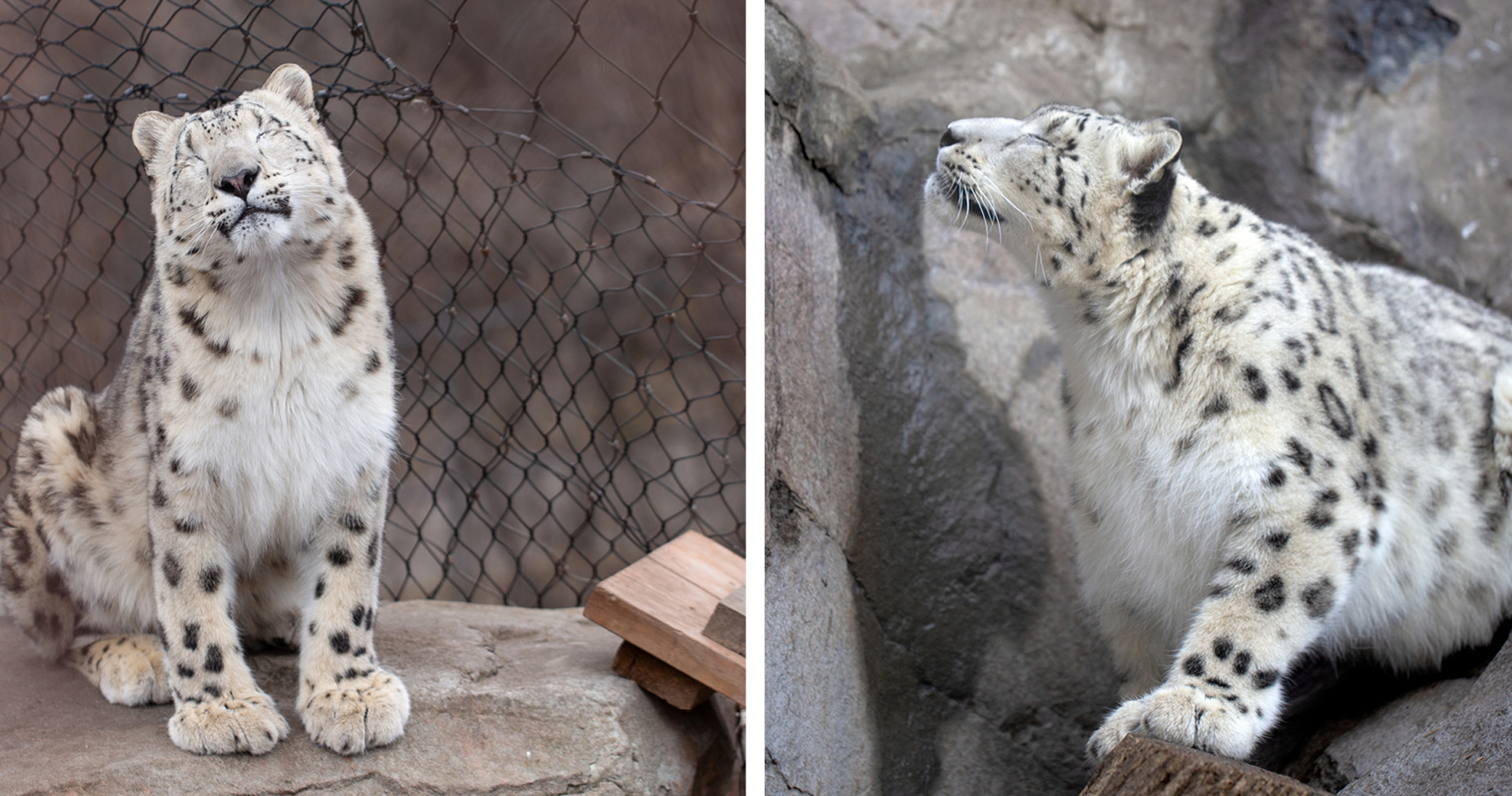
-
Snow Leopard
Willow | Como Zoo’s youngest snow leopard has been making leaps and strides learning about her habitat, thanks to two new ramps that now make navigating a little simpler for her. Born blind, Willow was introduced to her outdoor habitat last spring, climbing to the upper reaches of the rock structure. With all the food, water and shelter she needed to be comfortable, she chose to stay there for weeks, causing concern from some visitors, but not for the keepers who know her best. “Willow was at an age that we needed to let her start figuring some things out for herself, and she quickly became very comfortable with the upper section of the exhibit, and so she did not feel there was any need to try and explore more to get down at first,” explains large cat keeper Hans Jorgensen. To help teach her how to shift, keepers Jorgensen and Caitlin Allessi came up with a ramp system to help ease her transition between the inside and outside of her exhibit, a solution that Willow embraced with ease. “Within 36 hours, she’d figured it all out, and now we like to brag that she’s our best shifter,” Jorgensen says. Seeing the young snow leopard build confidence and awareness of her surroundings has been exciting to watch, says Allessi. “She moves around so well you’d never know she’s blind, which is really nice to see.”
Walter
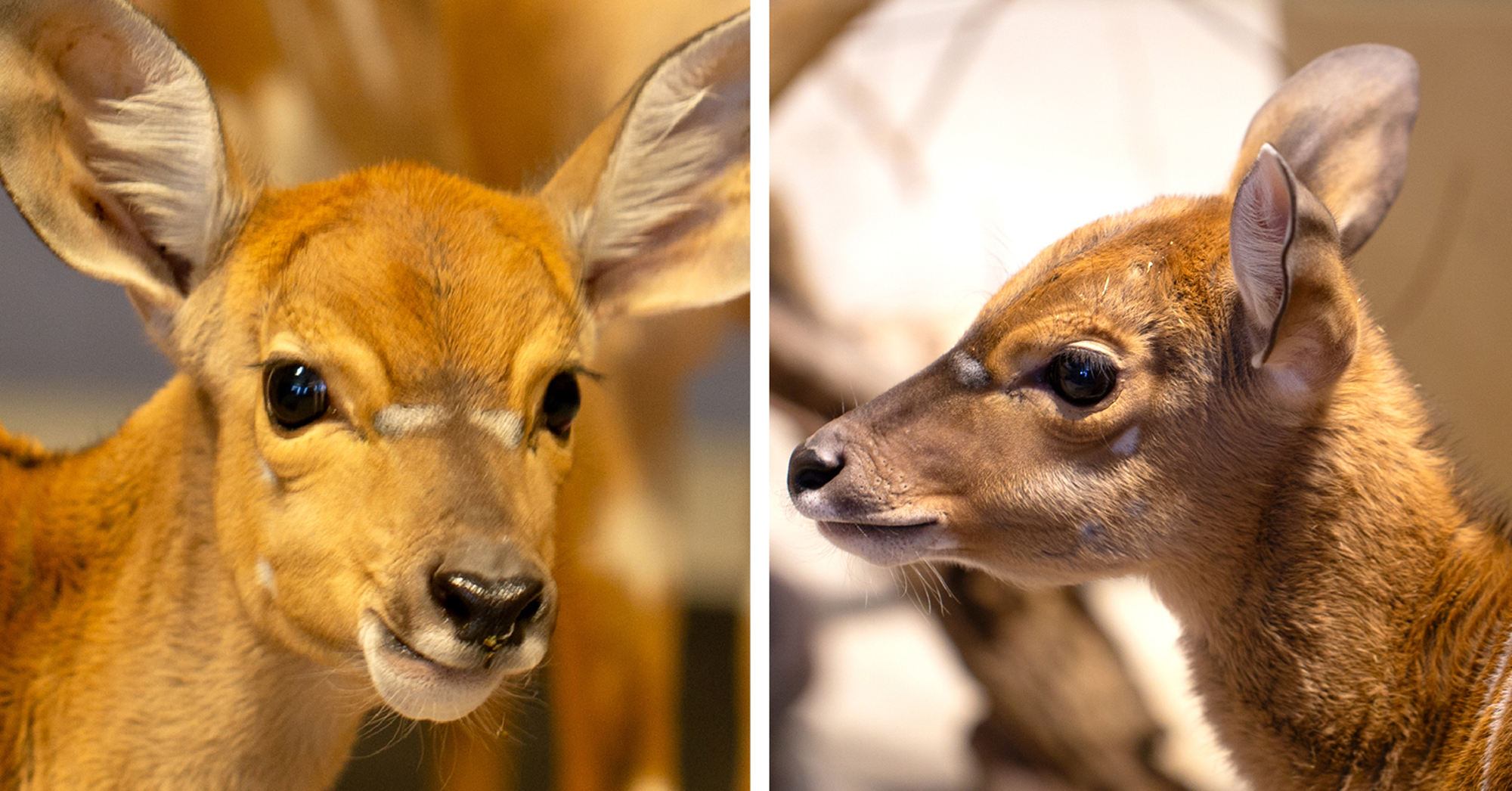
-
Nyala
Walter | Weighing in at just 14 pounds in September, it’s taken newborn nyala Walter just a few months to triple his weight—a growth trajectory seen in the wild, too. “Female nyala like Walter’s sister Meadow will typically stay with their mothers for life, but males will often leave their natal herd around six or seven months and can be reproductive fairly early on,” Erzar explains. Males are also known for developing the nyala’s distinctive spiral horns and darker coat. Walter, whose name was chosen by Como Friends donors on Give to the Max Day, is the second offspring for mother Stevie and father Stanley, who passed away in January.
Yoshi
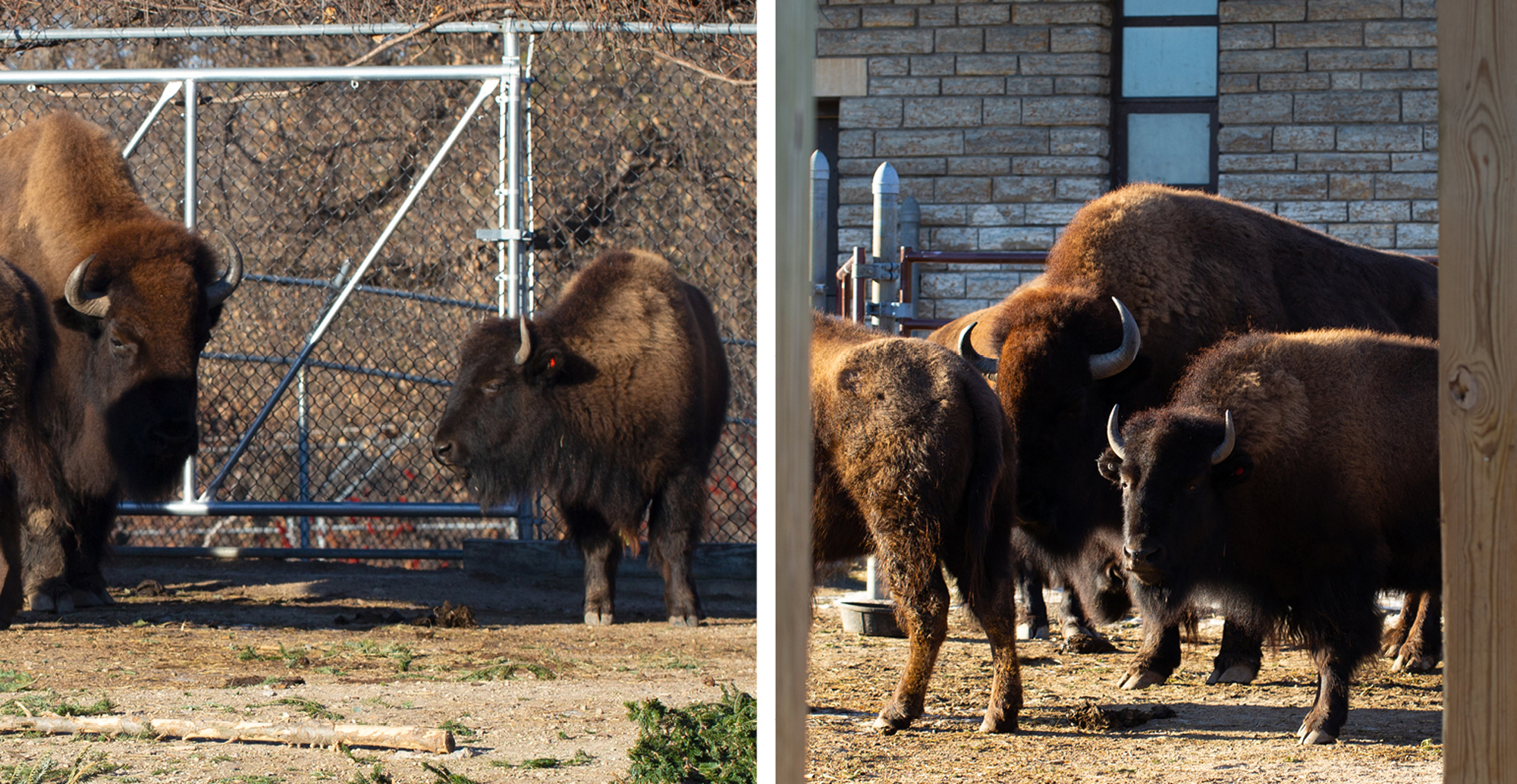
-
Bison
Yoshi | When one-year-old Yoshi arrived at Como’s bison habitat in January, it took her no time at all to bond with two-year-old Ruby, another young bison from Minnesota’s Bison Conservation Herd. “They were very excited to meet each other initially, and when you visit the zoo, you’ll see them side by side,” says keeper Aaron Nelson. “Because they’re both young, and have been in a larger herd setting, you’ll also see some more natural behaviors out of them, like one we call bluff charging, to establish dominance over us.” While Como Zoo’s hoofstock keepers have a healthy respect for the young bison, who will grow to be over 1,000 pounds, “we also think it’s pretty cute, that little bit of attitude and spunk. They’re letting us know that they’re big, and they’re in charge.”
Reggiano and Ilsamar
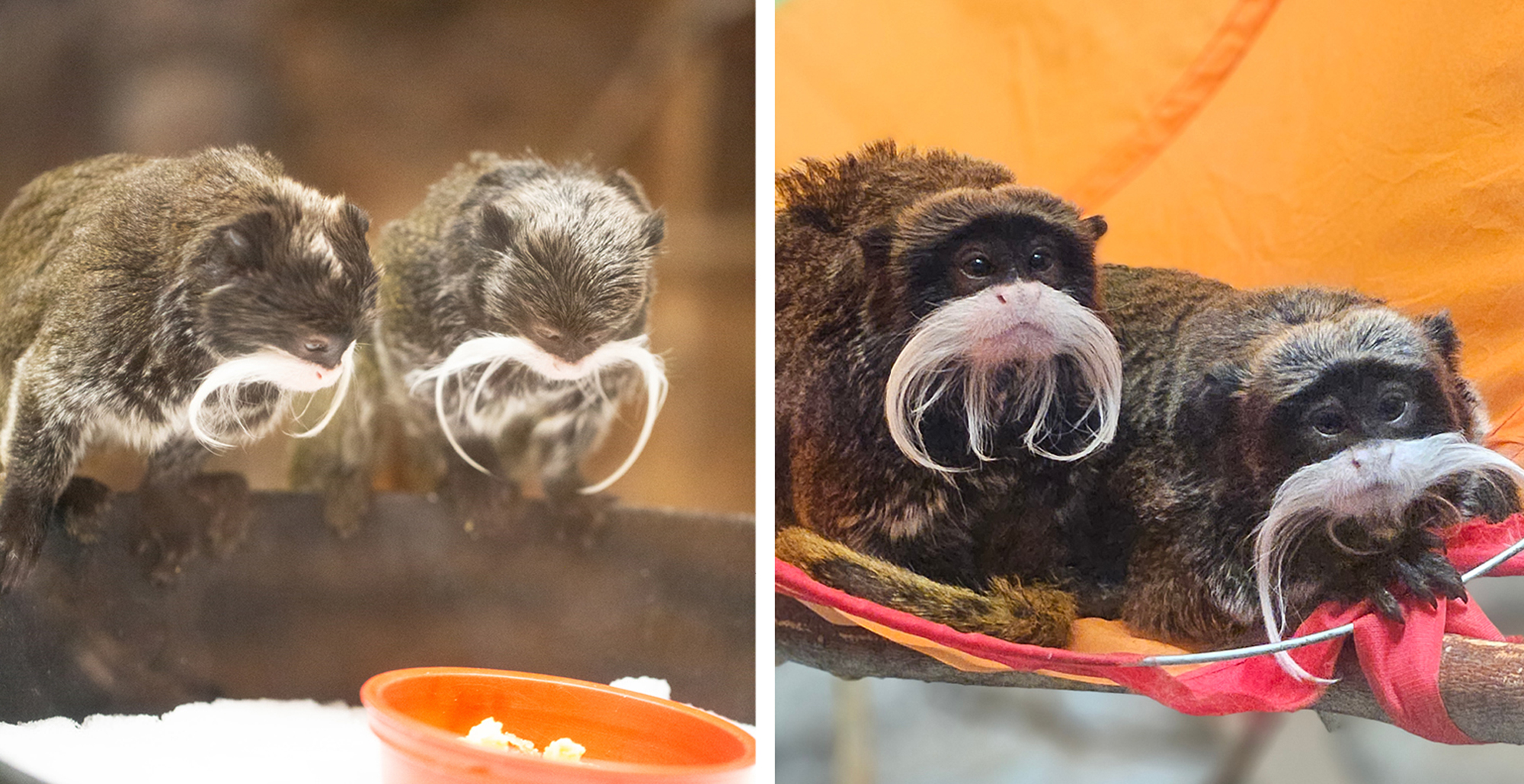
-
Emperor Tamarins
Reggiano and Ilsamar | Trying to guess the gender of Como Zoo’s emperor tamarins can be a bit tricky—the males, females and young of this endangered species all have very distinguished mustaches. This season Como welcomed two new individuals—Reggiano, a 3-year-old from the Buttonwood Park Zoo, and Ilsamar (Ilsa), a 2-year-old from the Dallas Zoo—as a new breeding pair put together by the AZA’s Species Survival Plan. While it’s too soon to say if their partnership will be a success, primate keepers have observed breeding behavior between the two.
Snow Cone
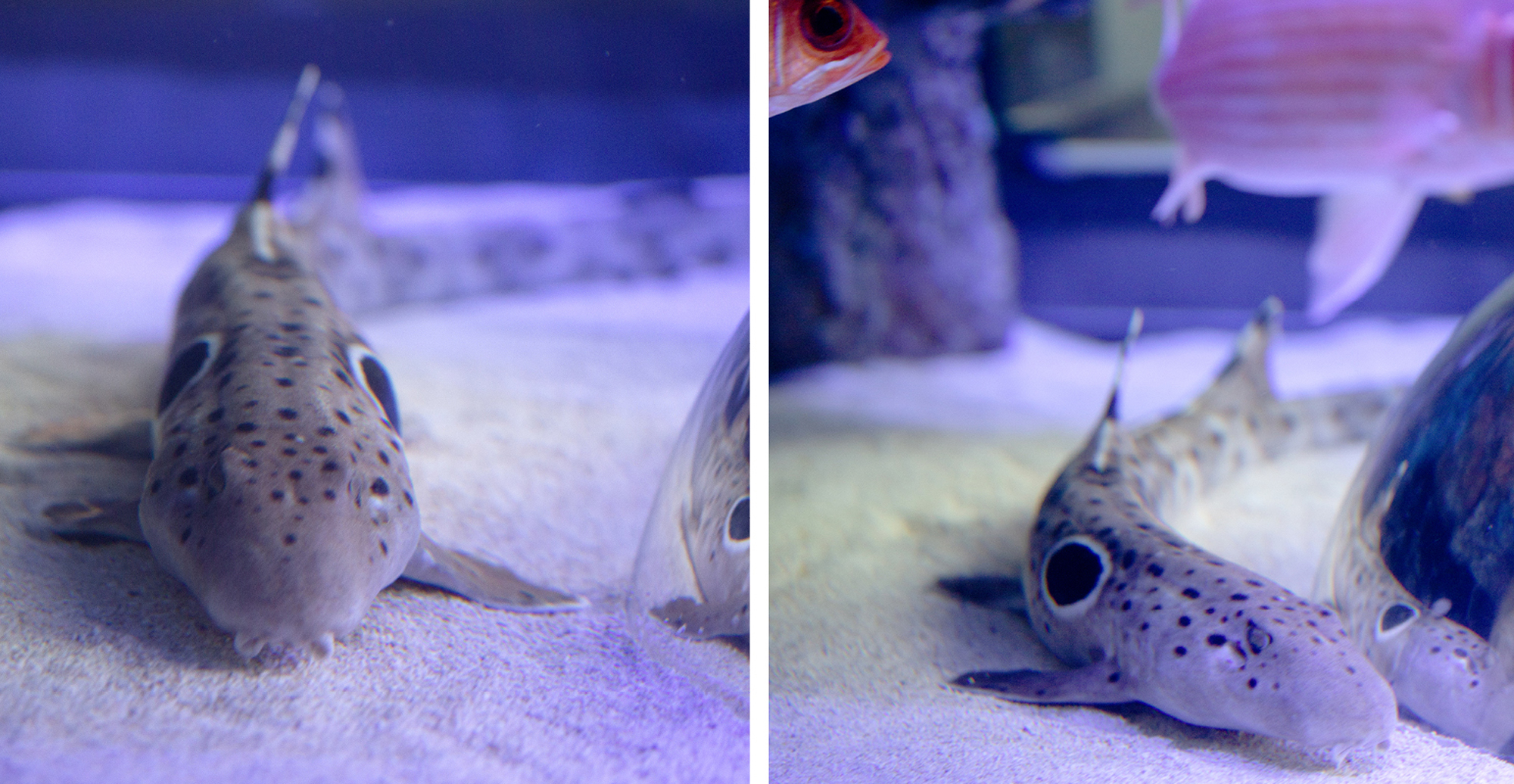
-
Epaulette Shark
Snow Cone | The newest resident of Como Zoo’s Aquatic Animals Building is Snow Cone, an adolescent epaulette shark. Now living in the building’s largest new tank, visitors can see that this nocturnal shark species exhibits some surprising behavior—appearing to “walk” across the ocean floor with its fins. A denizen of isolated tidal pools, epaulette sharks have adapted to survive severe oxygen depletion by shutting down some neural functions.
Moutig
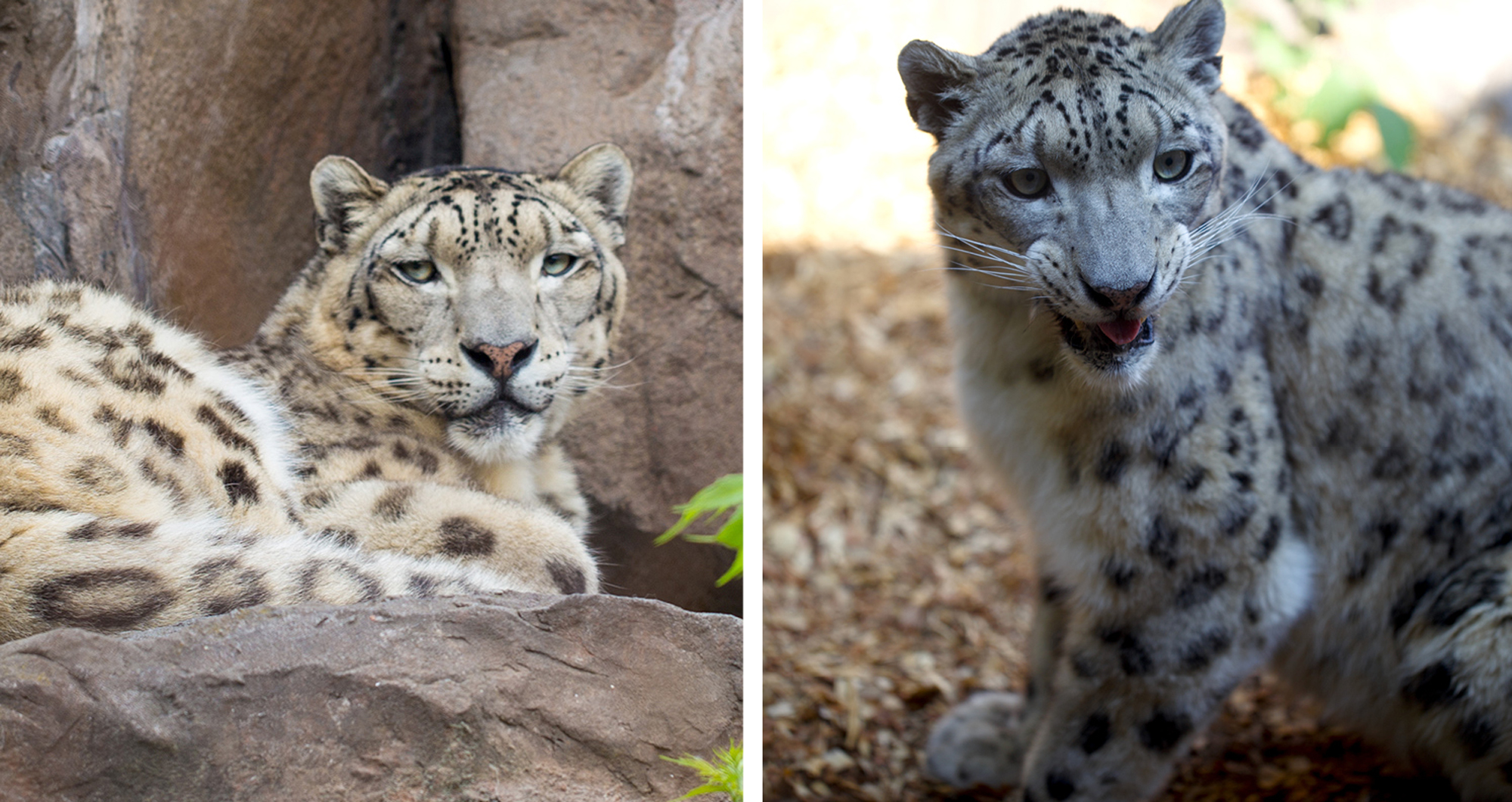
-
Snow Leopard
Moutig | And finally, one familiar face at Como Zoo is about to make a move. Male snow leopard Moutig will be moving to the Bronx Zoo as part of a breeding recommendation for this endangered species. A curious cat known to keepers for his distinctive vocalizations and his strong dislike for Como Zoo’s neighboring lions, Moutig first came to Como Zoo in 2016 from France as part of an international effort to diversify the genetics of European and North American snow leopards, and was selected to make this move by representatives from the snow leopard species survival plan. While keepers Hans Jorgensen and Caitlin Alessi are sorry to see him go, Jorgensen jokes, “He’s a big city cat, and with his vocalizing he could make it big on Broadway.” Au revoir Monsieur Moutig!
Send an un-fur-gettable Valentine’s Day delivery to the animal lovers in your life with this adorable trio of specially priced mini plush animals. For just $25, this sweetheart deal includes your choice of mini plush tiger, flamingo, or polar bear plus a Valentine’s card and candy hearts. Or sweeten the deal with two for just $45, or three for $65.
February 9 is the last day to order online for delivery. Stop by Garden Safari Gifts at Como to pick up your Valentine’s package through February 14!
For orders of two or more minis, please list additional animals in the comment field.
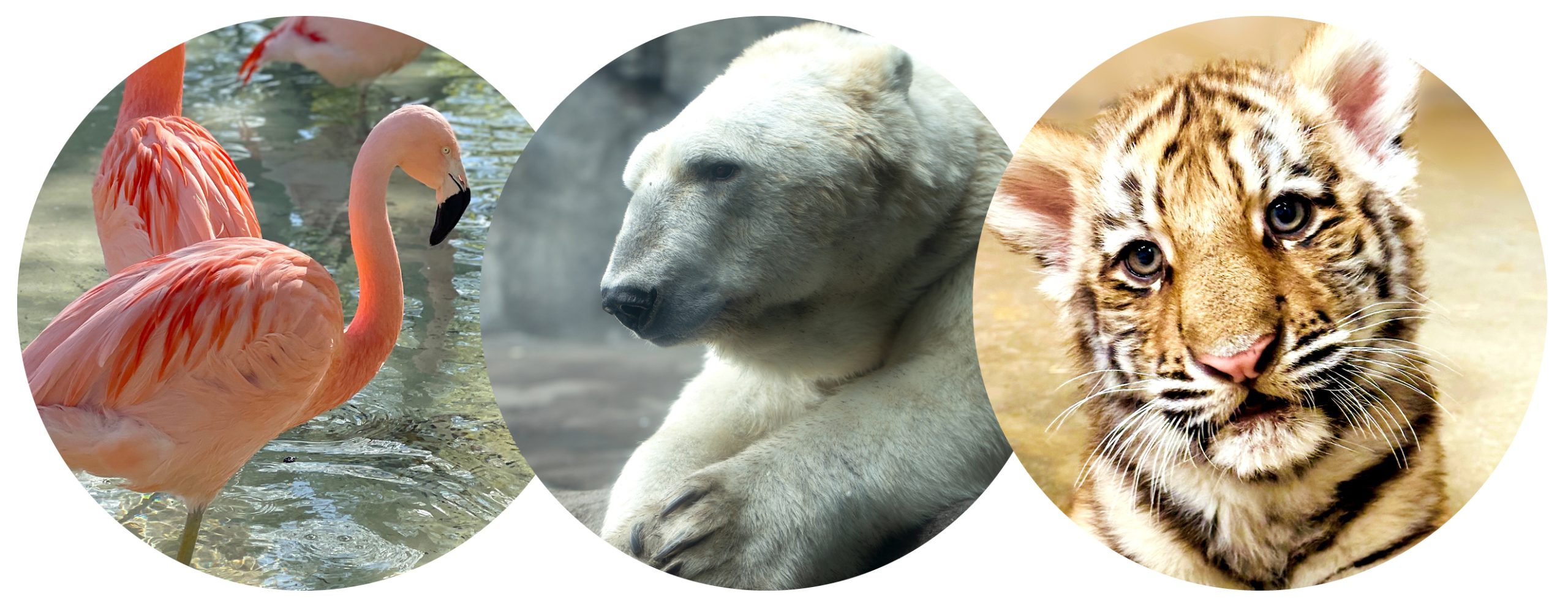
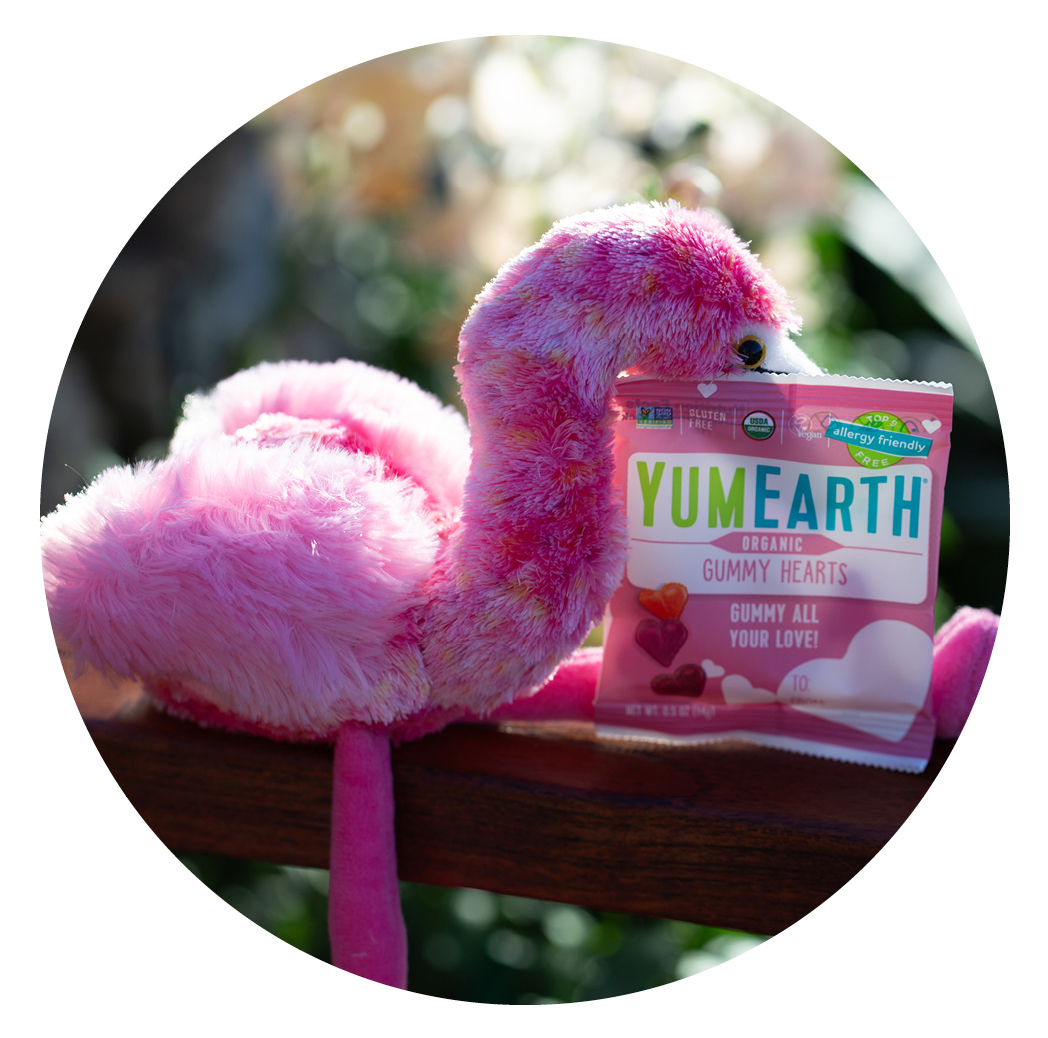
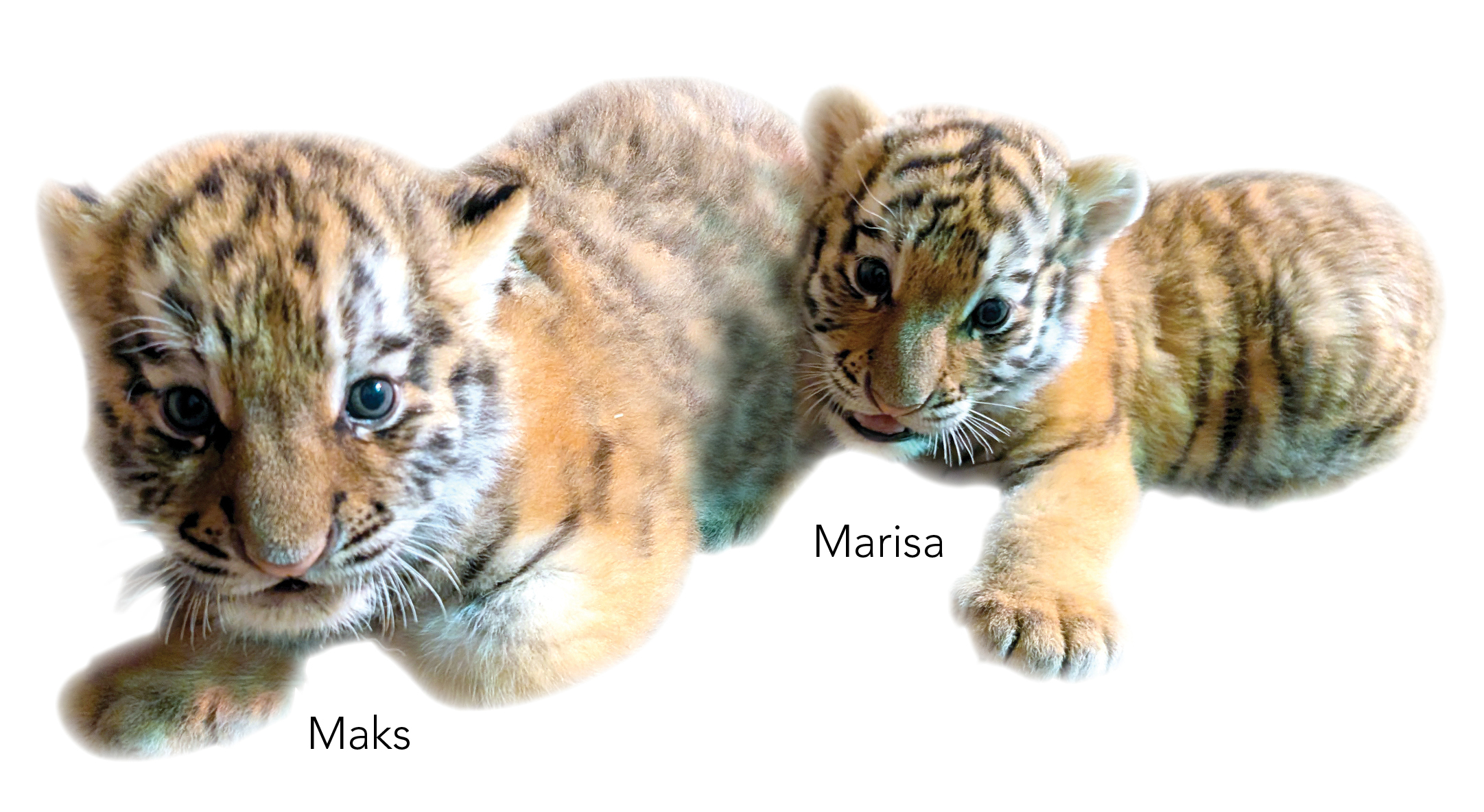
Como Brings Conservation to Life
From the first breaths taken by Como Zoo’s new tiger cubs, to the tender care that’s giving extra years to elder animal ambassadors like Nan the polar bear, Como Park Zoo and Conservatory is on a mission to bring the value of conservation to life in every season.
On Give to the Max Day, your generosity helps bring conservation to the forefront every day at Minnesota’s most visited cultural destination. From crucial breeding programs to preserve our planet’s most endangered animals, to sustainable habitats that tell deeper stories about the Earth’s diversity, your support helps Como Park Zoo and Conservatory welcome the next generation to discover the wonders of nature through unforgettable face-to-face encounters, fantastic education programs, and always-free admission.
And thanks to a matching gift from the Como Friends Board of Directors and a generous donor, your gift will be doubled, dollar for dollar, up to $53,200.

This year, Give to the Max Day supporters helped choose the name of Como Zoo’s new baby nyala, born in September, by picking their favorite—Harvey, Stanford, or Walter. The winning name with the most votes is Walter!
Thanks to your support for Como Friends, a new generation is discovering career options in animal care and horticulture
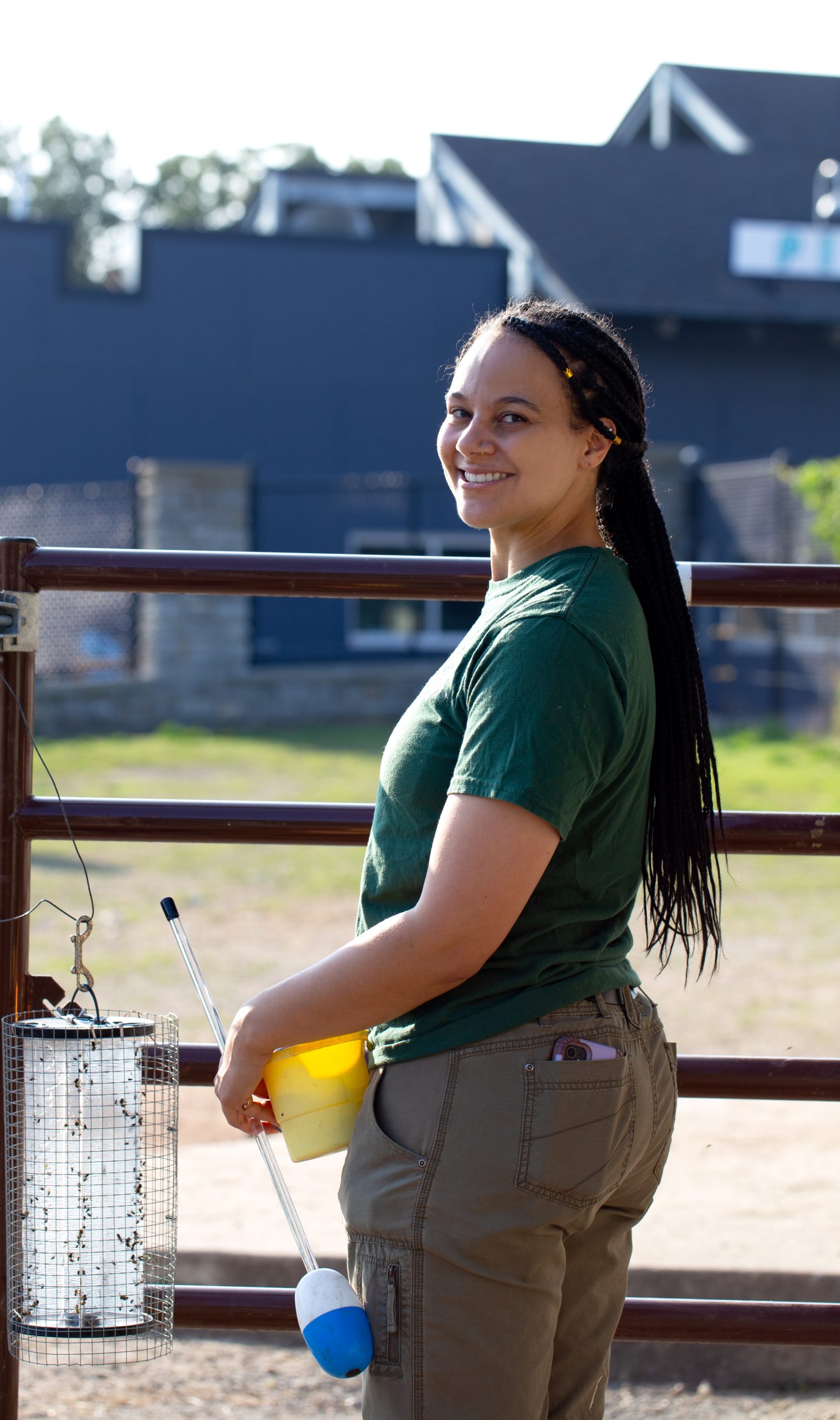
For Como Zoo apprentice Sophia Dady, the trick is building trust with Ruby, the newest bison to live in Como’s historic barn. Over the course of the last year, Dady’s calm demeanor (and hundreds of carrots) have helped her to build a bond with the young bison, teaching her to follow a training target. This new husbandry skill now allows keepers to get a closer look at different parts of Ruby’s body, depending on where the target is positioned.
While few zoo interns ever get the chance to take on an important long-term project, animal training is all in a day’s work for Dady. A member of St. Paul’s Right Track apprentice program, Dady is one of 9 zookeeping and 4 horticultural apprentices at Como this year, earning 20- to 40-hours-a-week pay while they take on entry-level responsibilities throughout Como Zoo and the Marjorie McNeely Conservatory.
Though unpaid internships and volunteer conservation roles have often been the career path to jobs in animal care, the Right Track program helps to remove the economic barriers to participation for youth from cost-burdened households. “Right Track is designed to ensure that you don’t have to work without pay, or have multiple side jobs, to take advantage of a career-building opportunity,” says Lianna Sanders, the Como project manager who oversees the Right Track apprentices.
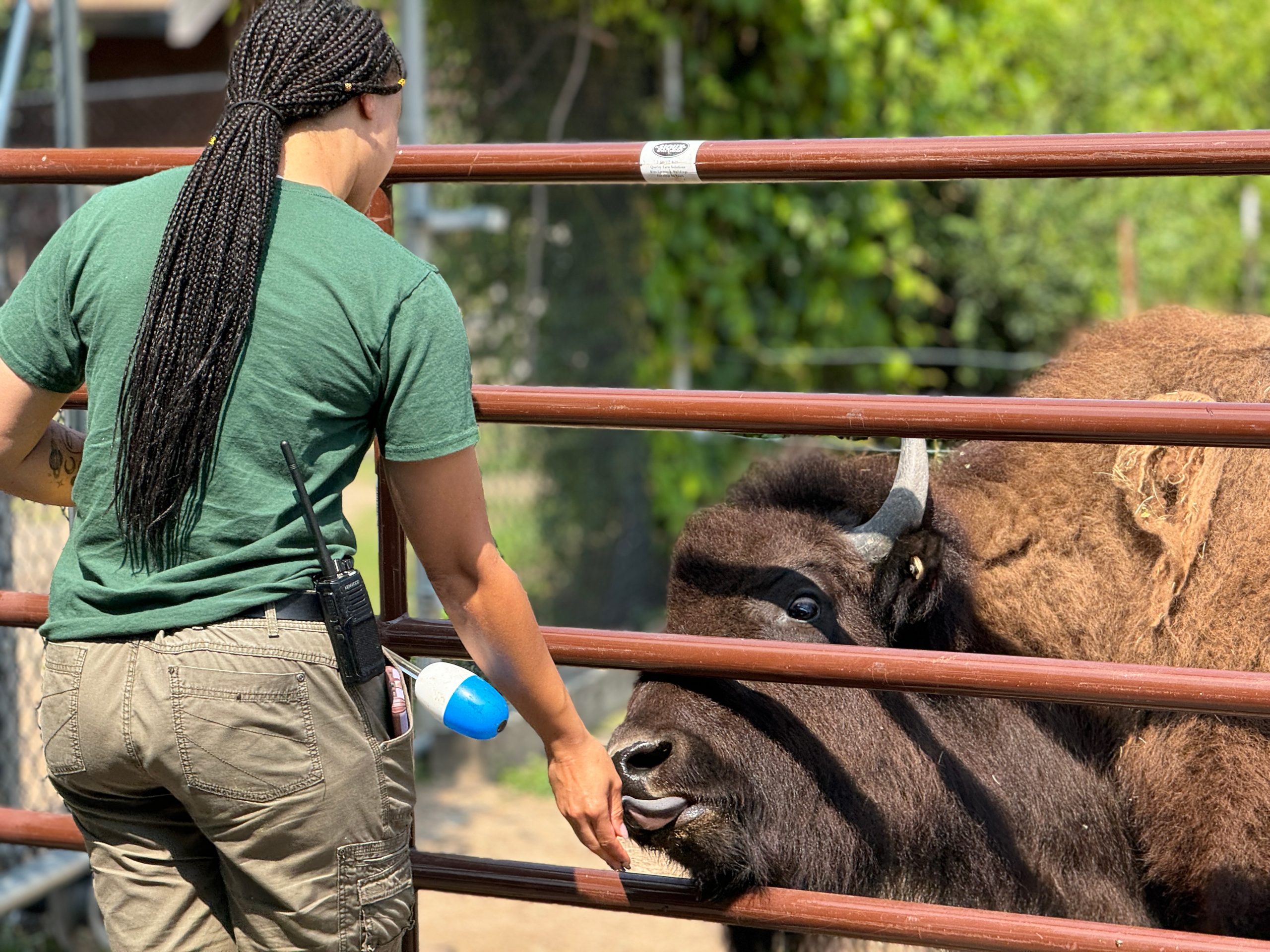
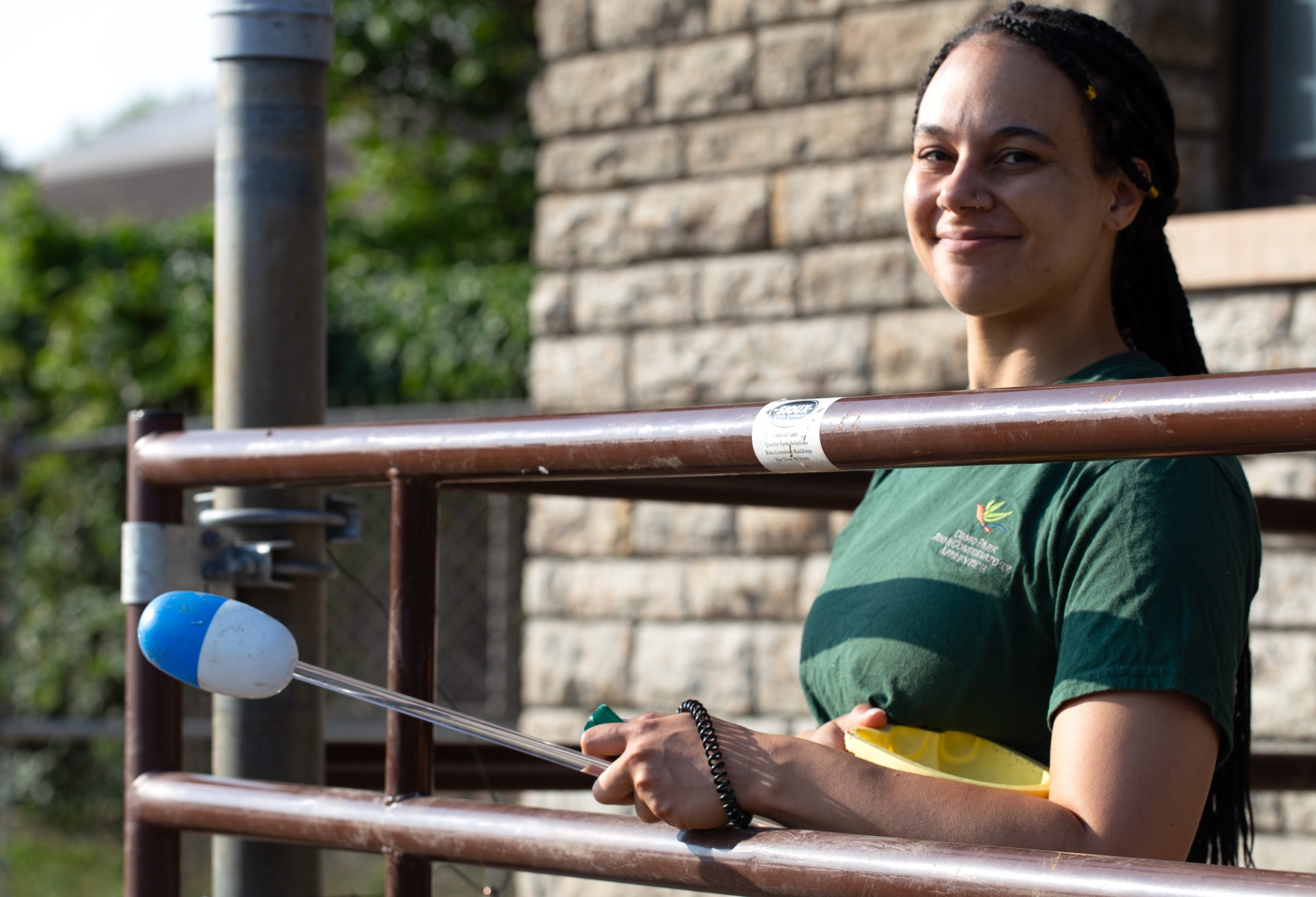
This year, Como has expanded the Right Track program to include horticultural apprentices like Willow Stephens, who recently had the opportunity to collaborate with horticulturist Rylee Werden on the design and installation of the Fall Flower Show. Hands-on experiences like that, and having the time it takes to dive into a potential career is another important part of the program, which also allows young people to attend college during their apprentice tenure.
Being fully immersed in animal care at Como has allowed Dady to take part in everything from primate training to observing behind-the-scenes veterinary care, while also attending Right Track professional development sessions in resume writing, financial literacy, and more. “Because the zookeepers see you more often, they trust you and allow you to take on your own projects, which is so important,” Dady says. “You’re given a bit more independence to find out what you like to do and what you’re good at, which is important as you’re developing your career.”
RightTrack apprentices earn a living wage while working in a variety of roles at Como. Additional funding from Como Friends helps apprentices purchase uniforms, heavy work boots, and other tools to be successful and safe on the job.
Great Late Breaking News: Como Zoo Right Track Apprentice Gabby Metzler (pictured below) was recently hired at the Fort Wayne Children’s Zoo as a marine mammal and aquarium zookeeper. And Sophia Dady has been hired as a temporary zookeeper at Como Zoo in the Tropical Encounters habitat as well as their small animal, reptile, and amphibian Animal Support Building.
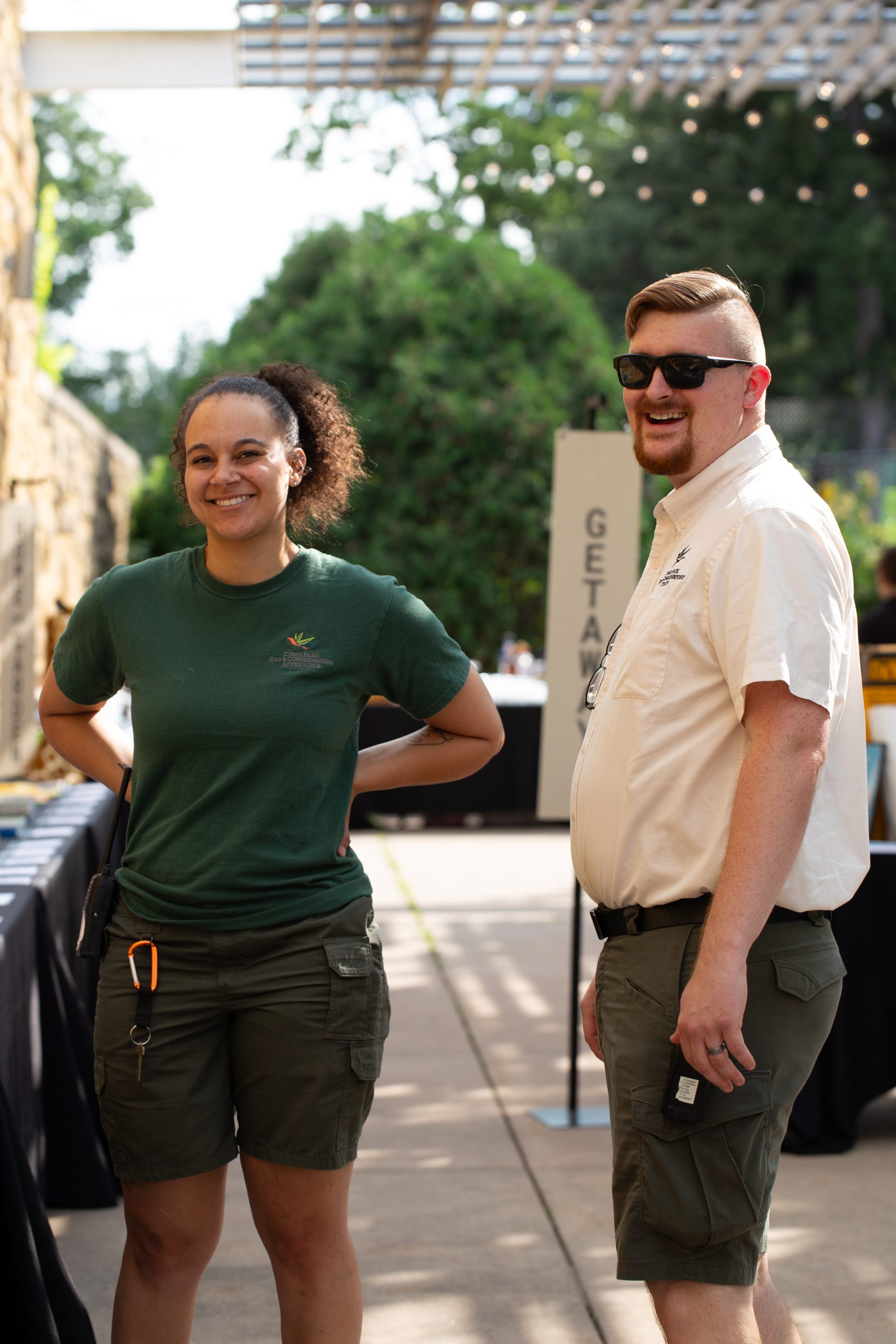
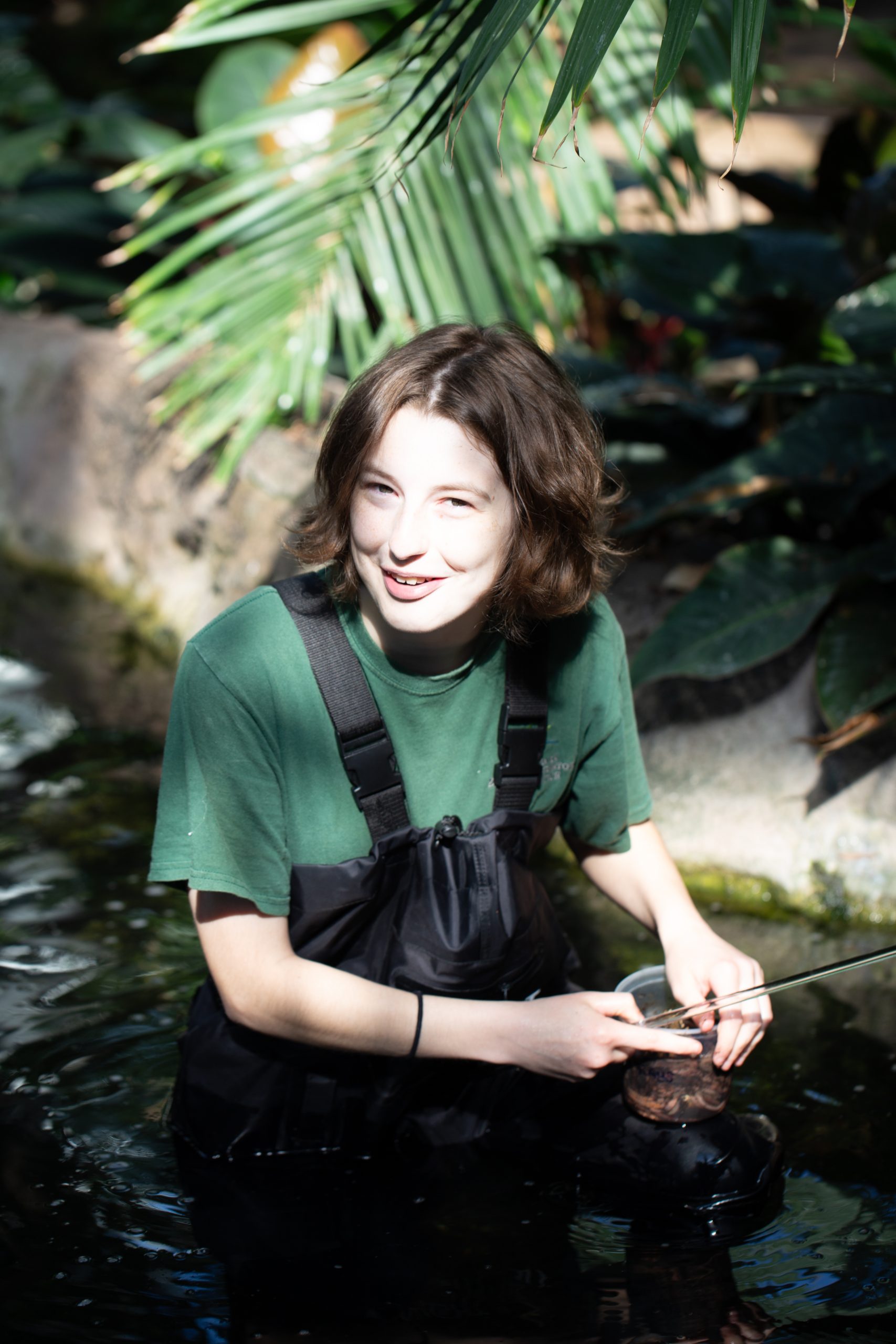
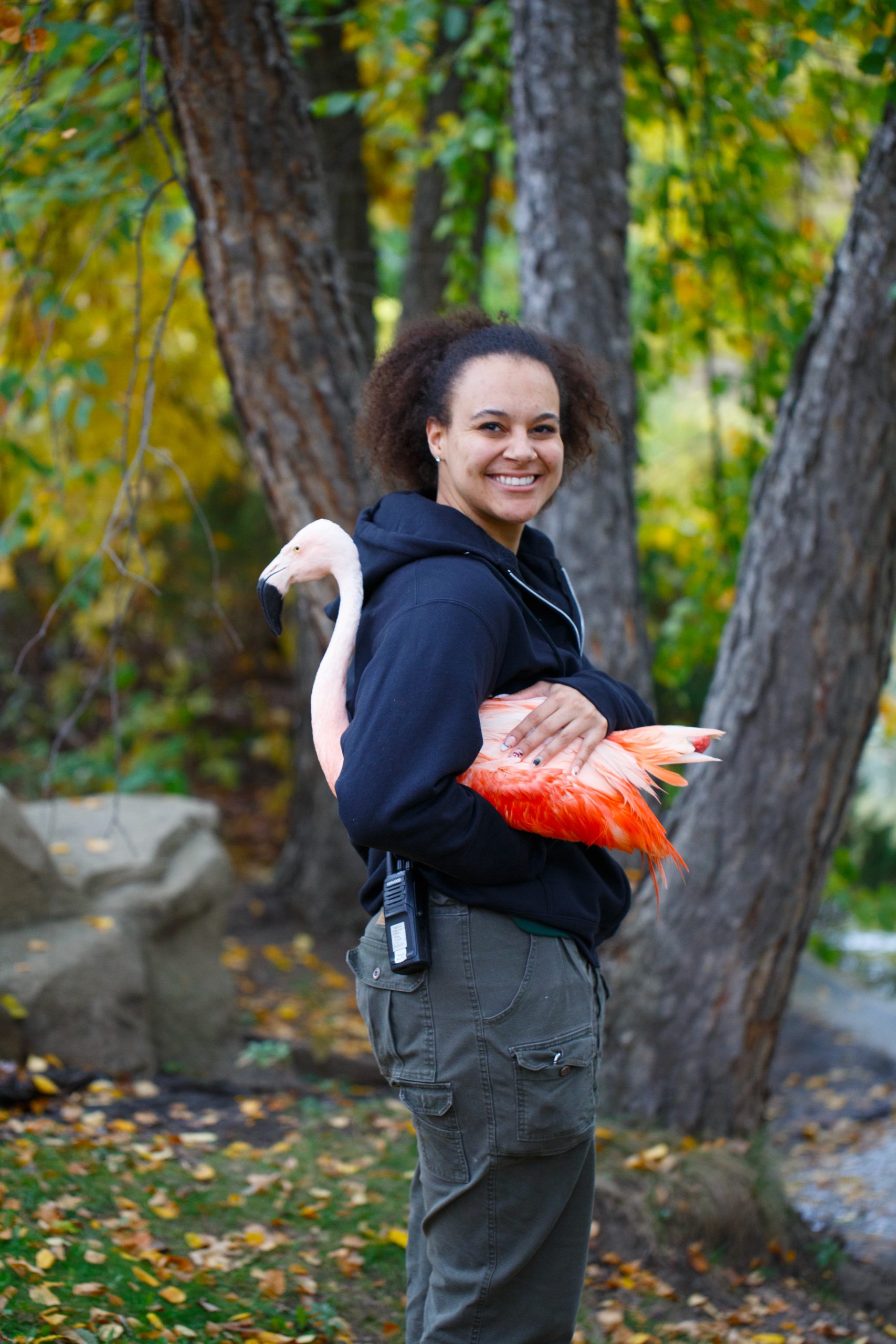
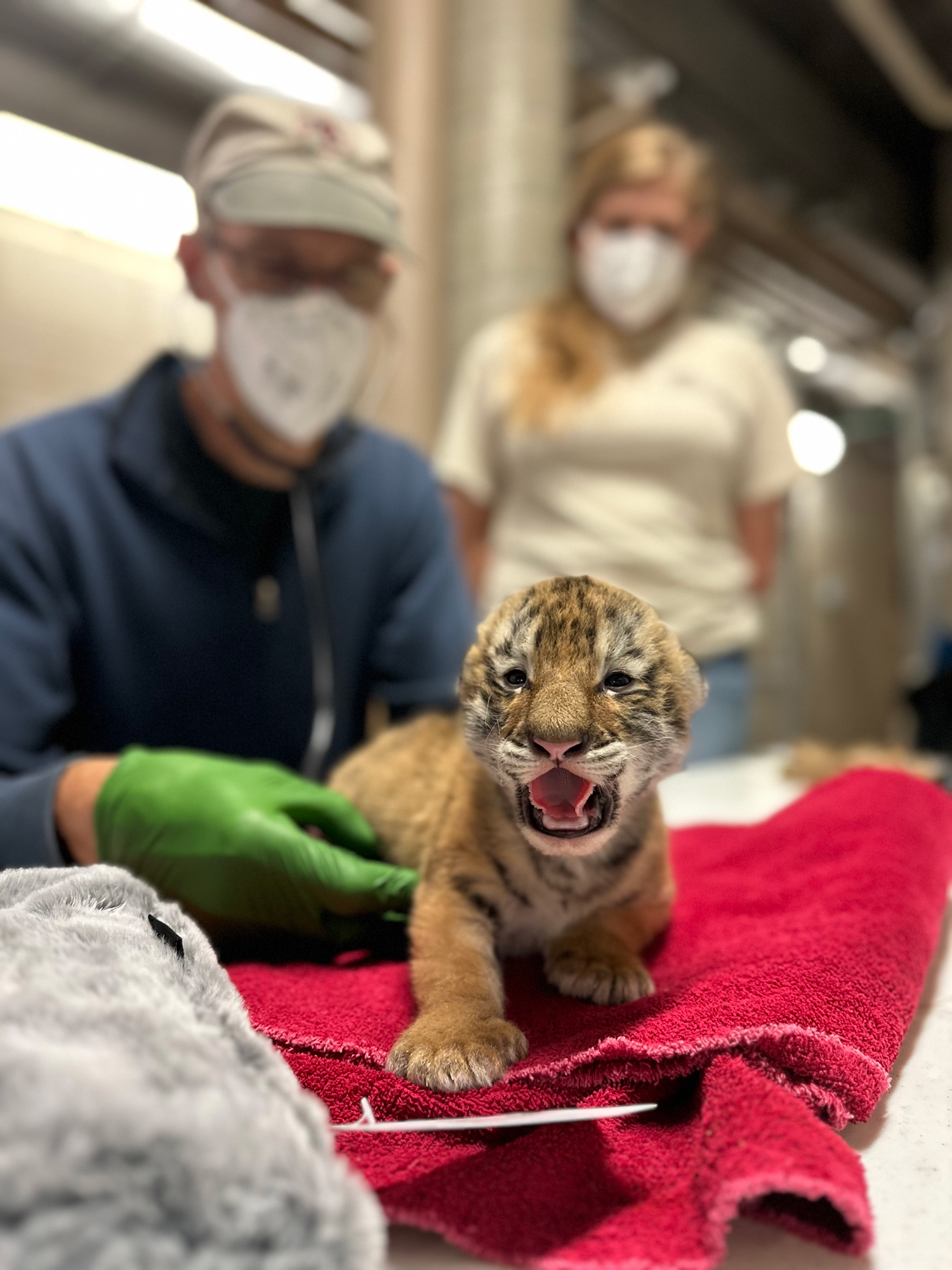
TWO CRITICALLY ENDANGERED AMUR TIGER CUBS BORN AT COMO PARK ZOO & CONSERVATORY
St. Paul, MN, [September 4, 2024] – Como Park Zoo & Conservatory is thrilled to announce the birth of two critically endangered Amur tiger cubs on the morning of August 29th. These cubs—a male and a female—are the first tigers born at Como Zoo in more than 41 years, marking a historic and exciting moment for the zoo and its conservation efforts.
The cubs’ mother, Bernadette, is 7 years old and was born on September 14, 2016, at the Milwaukee County Zoo in Wisconsin. She joined Como Zoo from the Oregon Zoo in October 2023. The father, Tsar, is 11 years old, born on July 6, 2013, at the Sedgwick County Zoo in Kansas. Tsar has been a resident of Como Zoo since February 2019. This is the first time both Bernadette and Tsar have become parents.
The pairing of Tsar and Bernadette was made following a breeding recommendation from the Association of Zoos and Aquariums (AZA) Amur Tiger Species Survival Plan (SSP), a program dedicated to the management and conservation of Amur tigers in accredited institutions across the country. With a gestation period of approximately 104 days, the arrival of these cubs offers new hope for this critically endangered species.
“This is an extraordinary milestone for Como,” said Michelle Furrer, Como Park Zoo & Conservatory’s Director. “The birth of these tiger cubs is not only a testament to the dedication and expertise of our animal care team but also a beacon of hope for the conservation of Amur tigers worldwide. We look forward to sharing their growth and milestones with everyone who visits Como Park Zoo & Conservatory.”
Both mother and cubs are in good health and will remain in their private, calm maternity den for the next few months. This period is crucial for mother-cub bonding and for the cubs to grow strong enough to explore their outdoor habitat safely. Zookeepers and veterinary staff are monitoring the new family closely via cameras, observing Bernadette being a diligent and attentive mother—cleaning, feeding, and keeping the cubs warm.
“These cubs represent a significant success for the Amur Tiger Species Survival Plan and for the future of the species,” said Wes Sims, Director of Animal Care & Health at Como Park Zoo & Conservatory. “Our team is incredibly excited about the birth of these two tiger cubs, especially since they are the first offspring for both parents. It’s a testament to the dedication and hard work of our team that these amazing animals have successfully bred in our care.”
While Bernadette and her cubs will remain off-exhibit for some time, Tsar will continue to be visible to visitors in his habitat. Como Park Zoo & Conservatory will provide regular updates on Bernadette and her cubs through its social media channels, offering the public a chance to follow along as the cubs grow.
Amur tigers, also known as Siberian tigers, are the largest tiger subspecies, with males reaching up to 400 pounds. They once roamed across Siberia but are now confined to a small region around the Amur River in the Russian Far East. With fewer than 500 individuals remaining in the wild, they face critical threats from habitat loss, poaching, and human-wildlife conflict.
In addition to celebrating the birth of these cubs, Como Park Zoo & Conservatory also seeks to enhance its facilities through a proposed Big Cat Habitat project. This initiative represents a significant opportunity to advance Como’s mission of education and conservation. The project aims to improve the welfare of these majestic creatures while providing visitors with more enriching and immersive experiences. The habitat will include ADA and energy efficiency upgrades, ensuring accessibility for all community members. Como is actively seeking funds through a State Bonding appropriation to bring this project to life and ensure future generations can continue to connect with these ambassadors of their species.
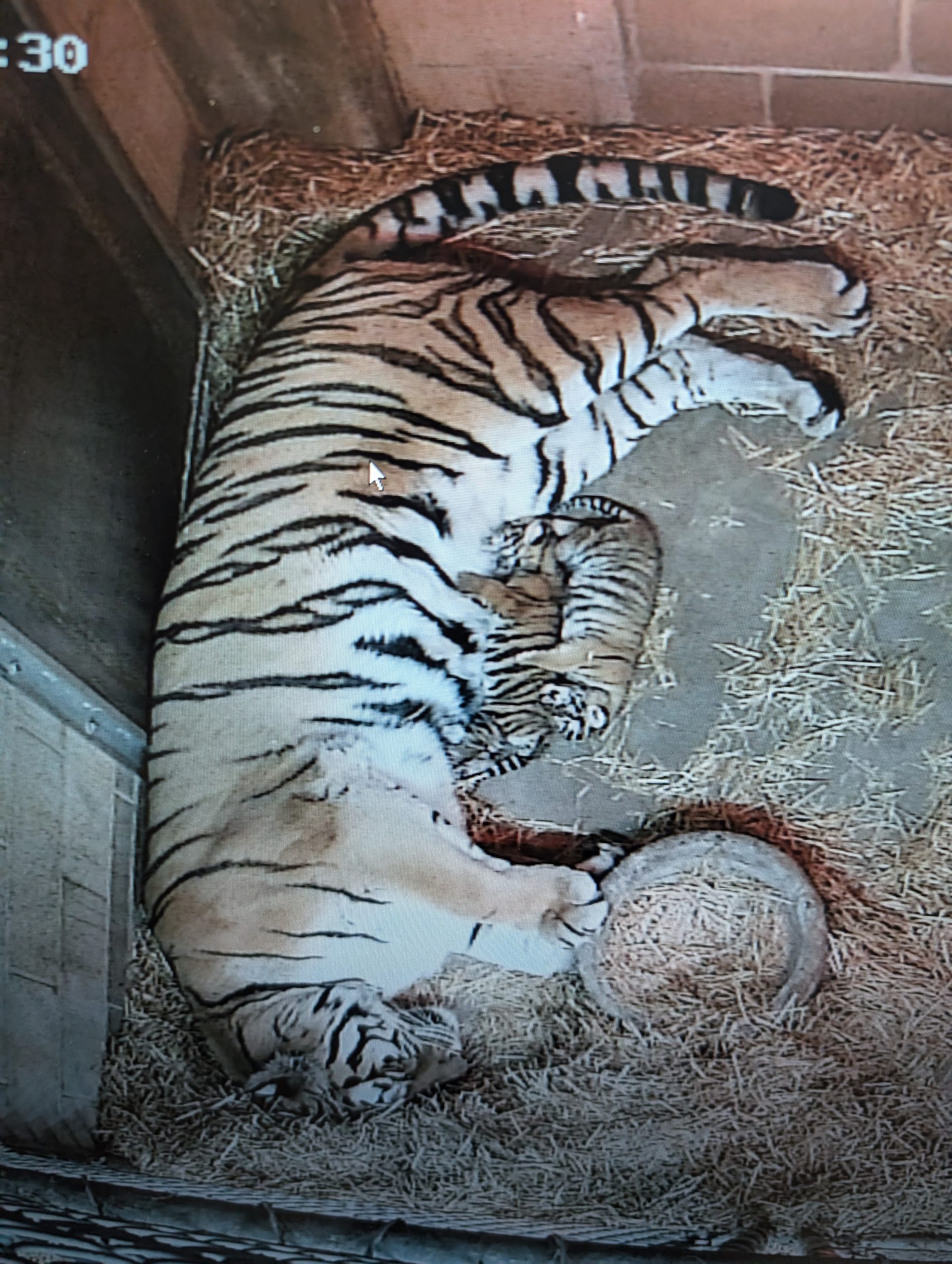
The following story appeared in the Summer 2024 Edition of the Como Friends Insider, the quarterly newsletter for Como Friends supporters. Give today to stay up to date on all things Como, with behind-the-scenes conversations with zookeepers, horticulturists and educators who carry out Como’s conservation mission.
Experts from the Tiger Species Survival Plan think Como Zoo’s male tiger, Tsar, and Bernadette, a female who recently came to Como from the Oregon Zoo, would make a great match. But after a few months of behind-the-scenes meet and greets, the two tigers are still taking things slow.
In fact, that’s the strategy that large cat keepers Hans Jorgensen and Caitlin Allessi have been sticking to since Bernadette made the move to Como Zoo a few months ago. Since tigers can be ferocious with each other—even their mates—keepers have been keeping their encounters as short and positive as possible. Solitary by nature, tigers are the rare breed of animal that depends on induced ovulation, which means that females don’t release their eggs until after successful breeding behavior has taken place.
While Bernadette showed signs of being in estrus earlier this spring, and the pair have successfully copulated on multiple days, keepers continue to keep a close eye on their interactions. “Even a few months after being introduced, there’s still risk involved, so we monitor their behaviors closely both when they’re together and when they’re separated,” says Allessi. While there’s no predicting if the pair will have success, tiger gestation typically takes just 100 days. “Will there be cubs? We can’t say at this point,” says Jorgensen. “But they both appear to be receptive to the possibility.”
(Photos of tiger cubs and Bernadette in their den taken by Senior Keeper Jill Erzar, and Zookeepers Hans and Caitlin.)
The tallest mammal on earth, giraffes also have the longest legs in the animal world, with an average “inseam” of 72 inches. As young giraffes grow, healthy limb development is a critical step in supporting their full adult weight of more than 2,000 pounds.
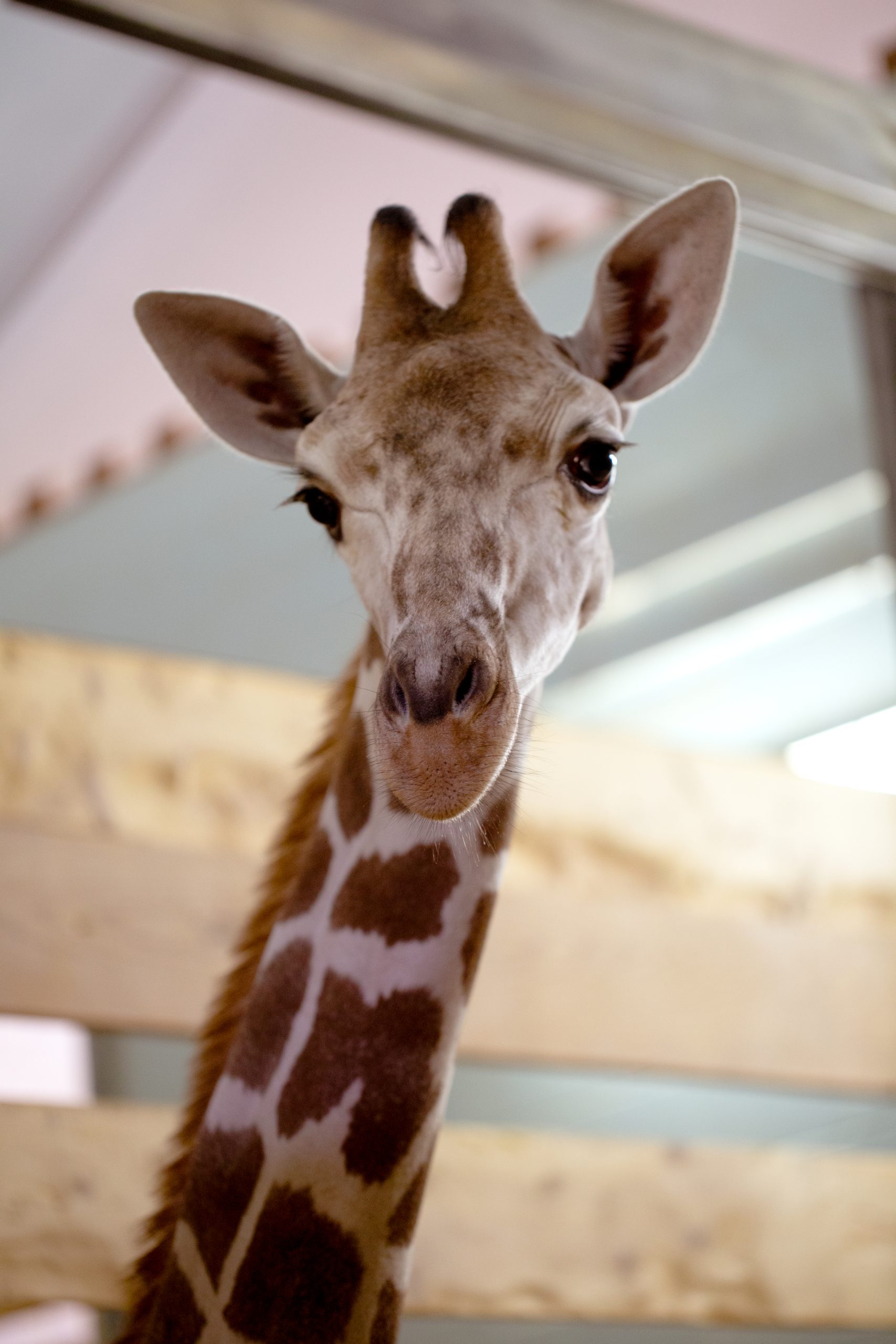
That’s why Como Zoo keepers and veterinary staff have been keeping a close eye on Ivy, a reticulated giraffe calf born in November to mother Zinnia. Like all young giraffes, Ivy was up and walking within minutes of her birth, but as she’s grown, keepers have noticed an unusual bend in the bones of her ankles.
“Over time, we started noticing that her legs were growing inward a little bit, and they were bumping into each other when she walked, which is why we started getting concerned,” says Wes Sims, director of animal care and health at Como Zoo. Equine surgeons from the University of Minnesota’s veterinary school diagnosed Angular Limb Deformation or ALD, a limb condition that’s common in horse foals as well.
Recently, hoofstock and veterinary staff took the extra step of anesthetizing the young giraffe to take x-rays to help inform her treatment plan. “After studying those x-rays, it was determined that she was not a good candidate for some of the typical surgeries that equine surgeons would want to perform in these cases,” says Sims. “Instead, she’ll be on stall rest for an extended period of time. Joint inflammation is something we want her to avoid for a while, so we don’t want her to risk going up inclines and declines or running around too much.”
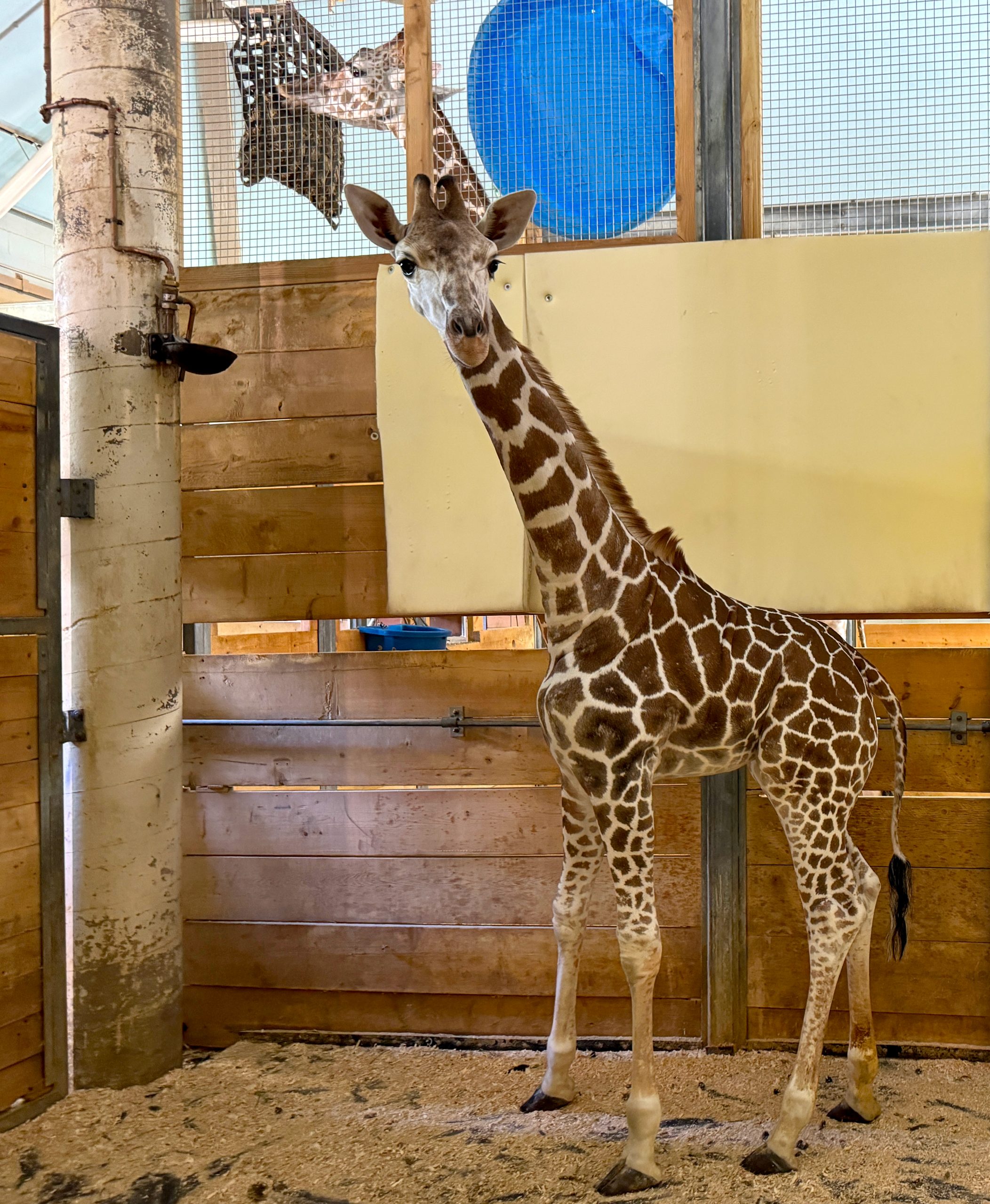
While the young giraffe remains in the Hoofstock Building’s behind-the-scenes habitat, Ivy has been getting plenty of attention from zookeepers, who provide daily enrichment to keep her engaged and curious. She also enjoys the companionship of her mother Zinnia, age 8, and her “aunt” Clover, age 23, who often choose to stay indoors with the young giraffe.
Though many Como Zoo visitors have shared how eager they are to see the young giraffe in her outdoor habitat, Sims says keeper talks that include updates about Ivy’s health conditions have helped convey how important stall rest is during this critical time in her development. “We’re doing everything we can to keep things calm and low key for her while we wait to see some progress,” says Sims.
Elevated Care for All of Como’s Animals
From portable x-ray machines and ultrasound monitors, to high-tech equipment that supports animal vision, dental health, and water quality, your support for Como Friends is critical to providing the cutting-edge care that keeps animals like Ivy healthy and curious.
